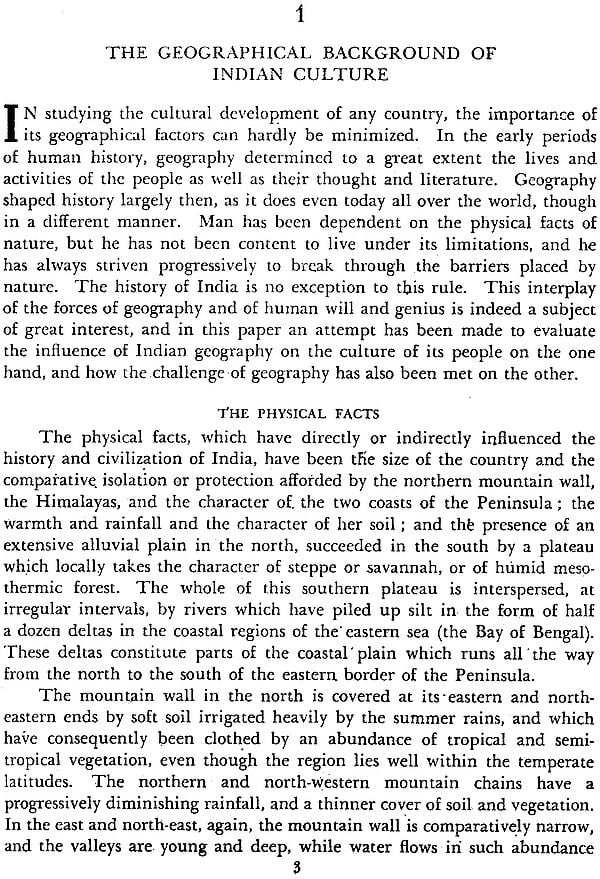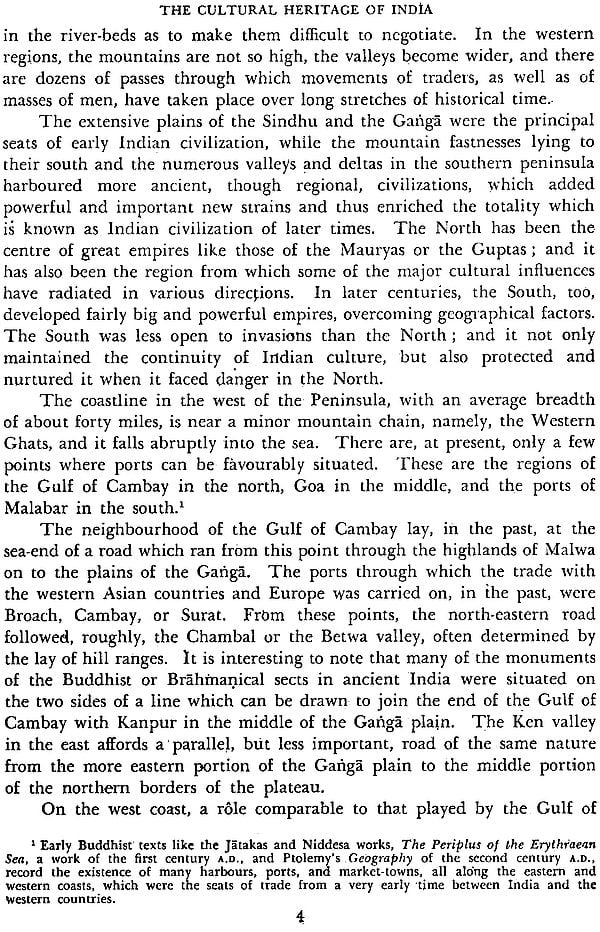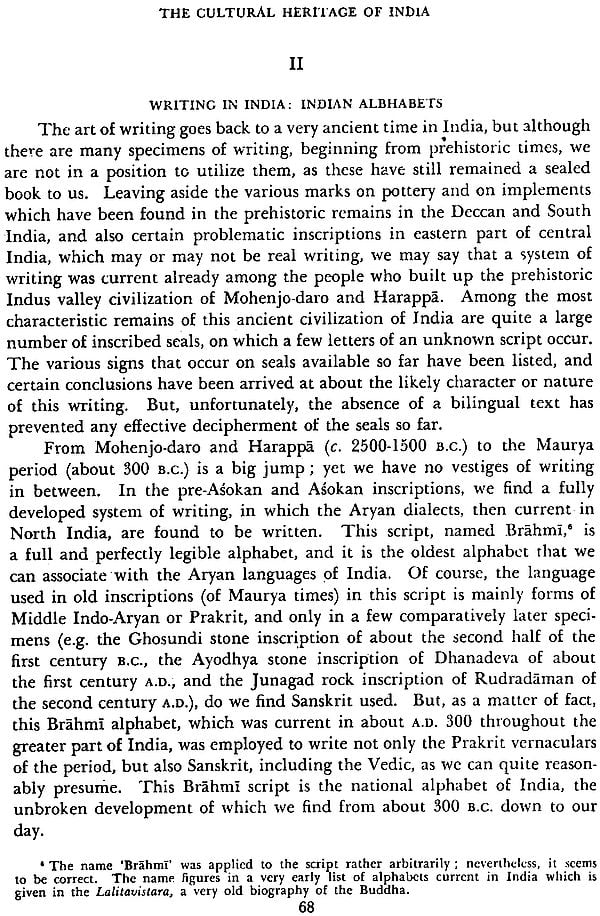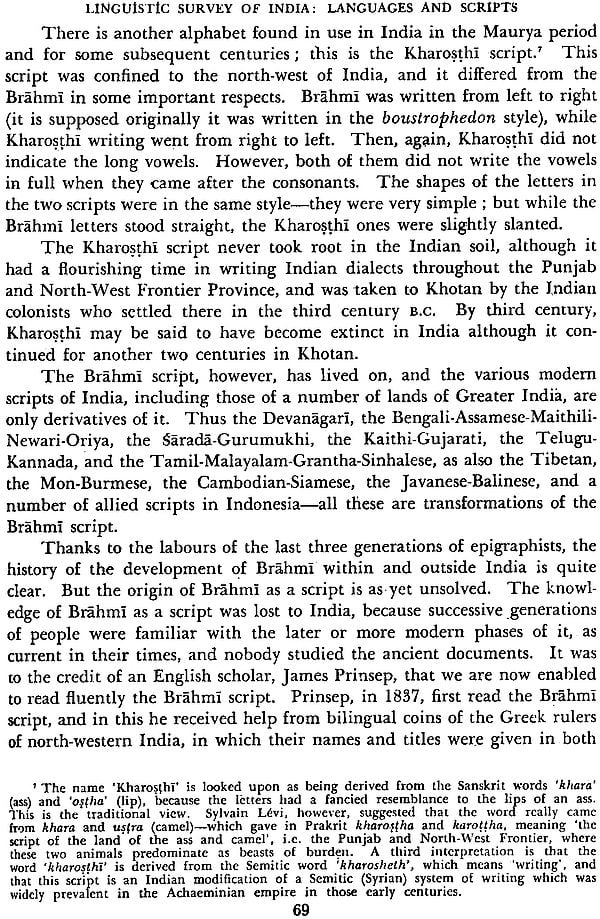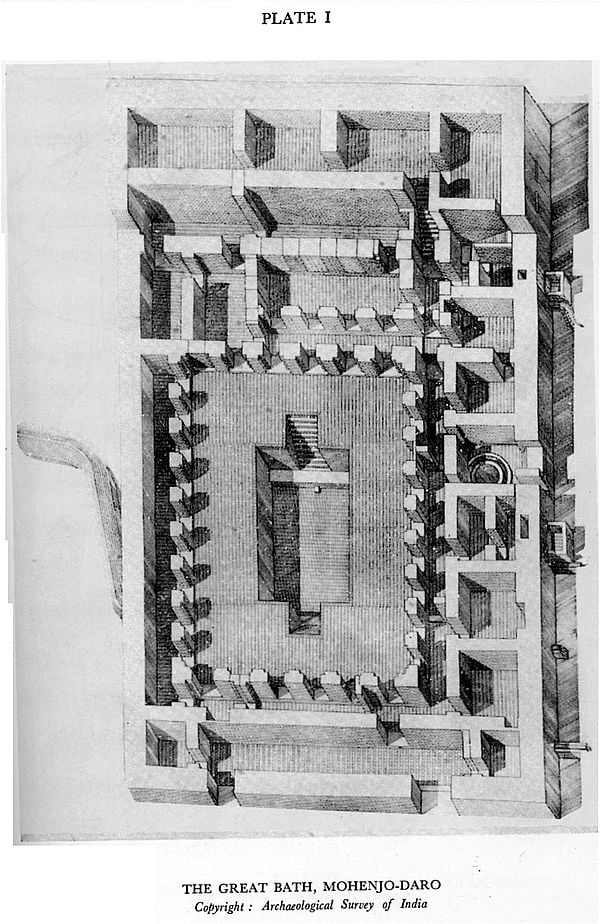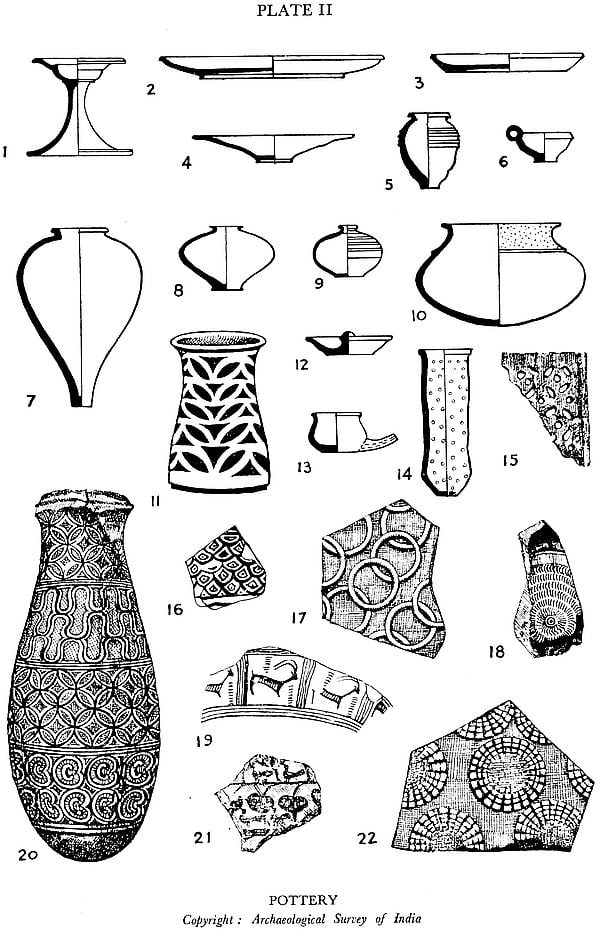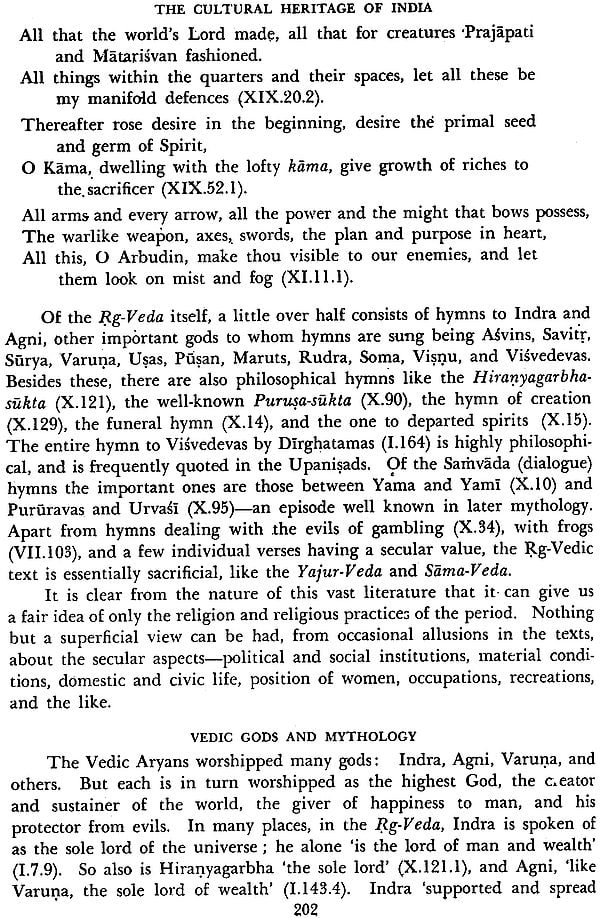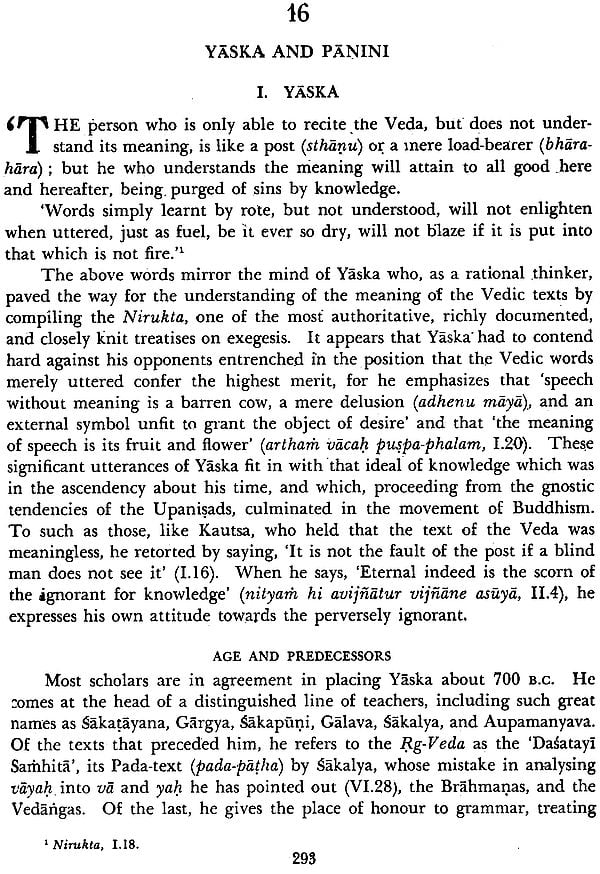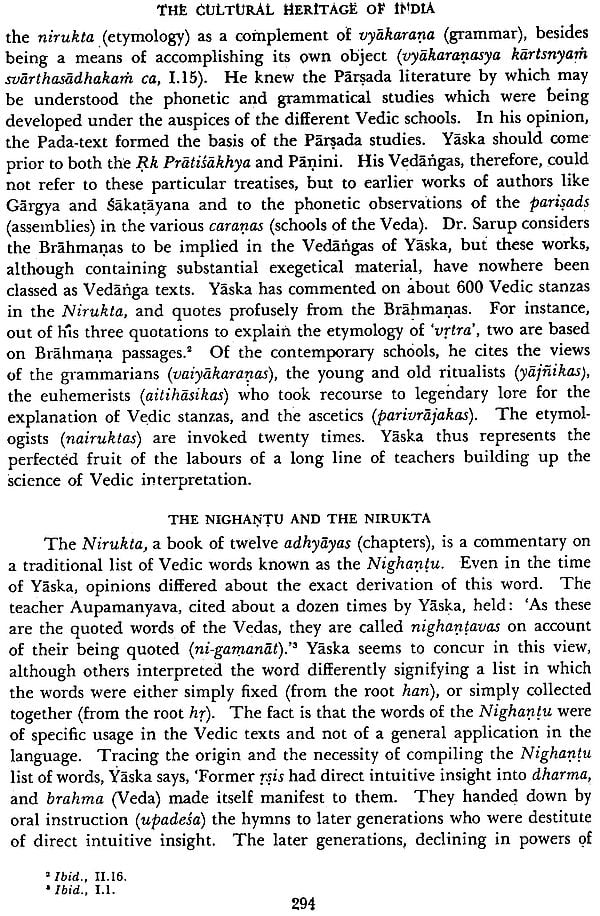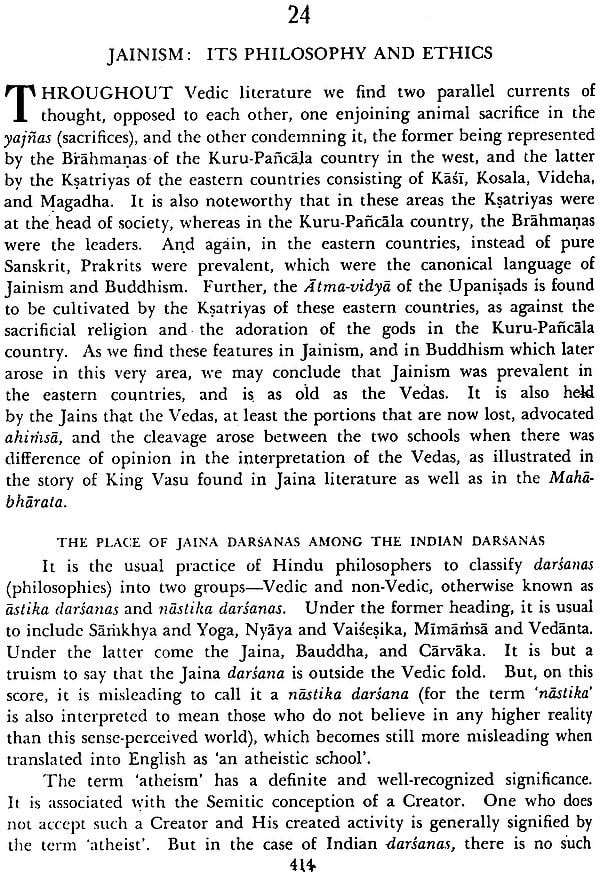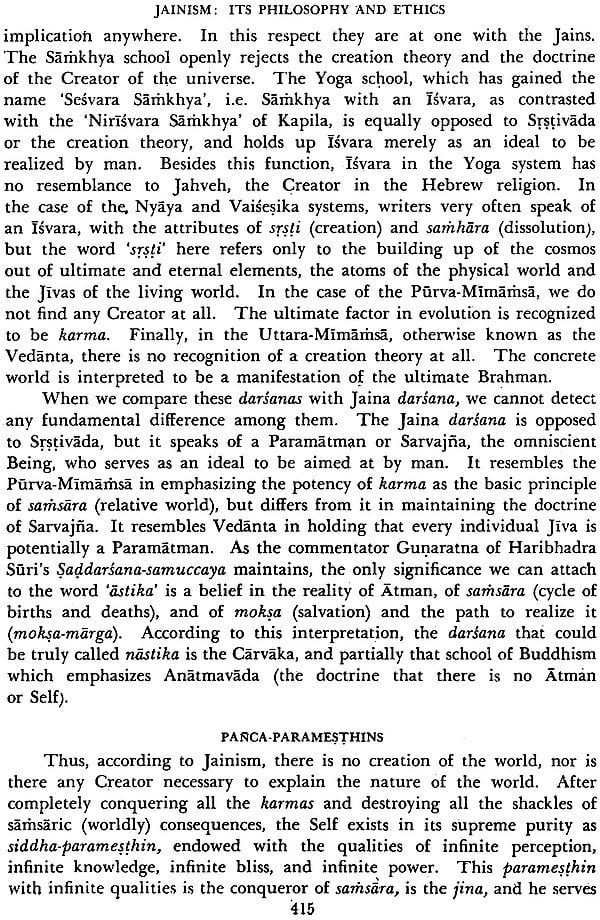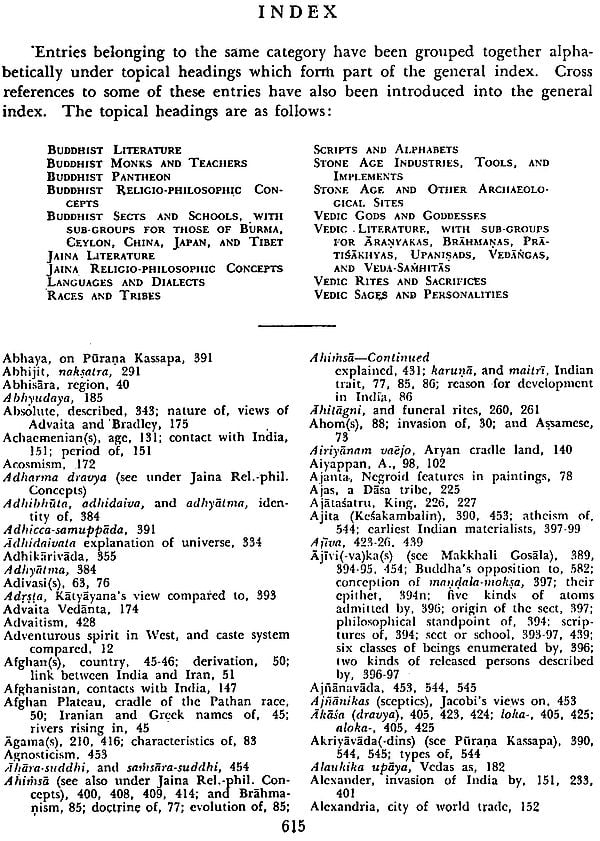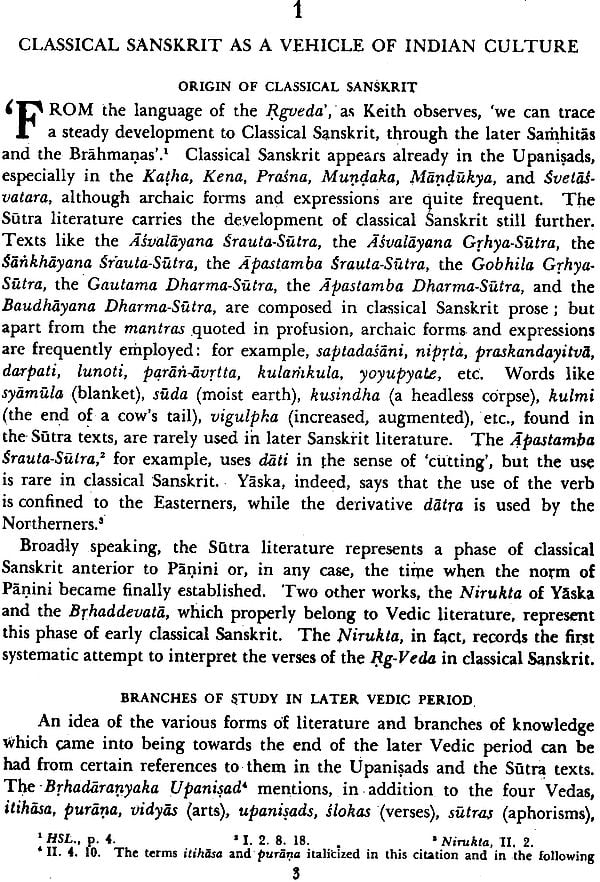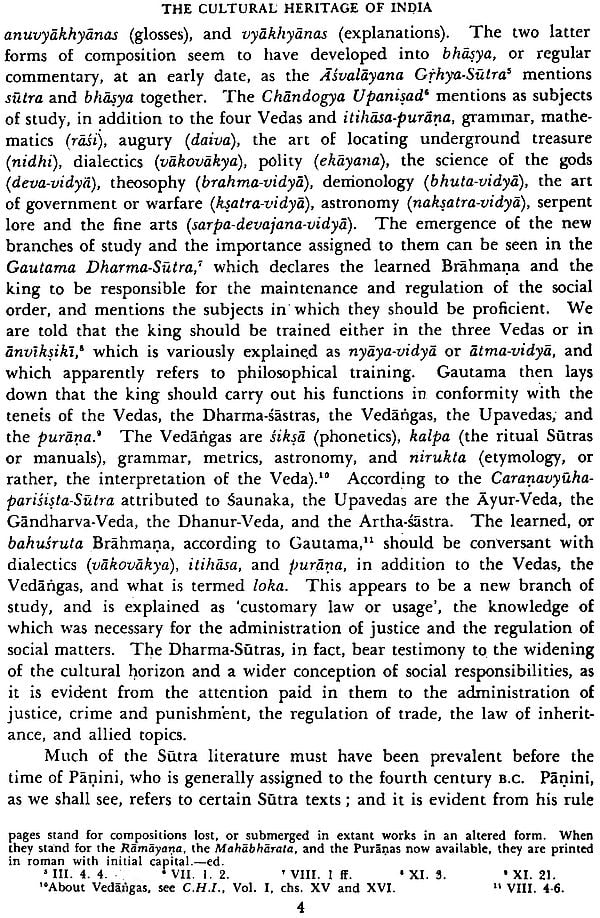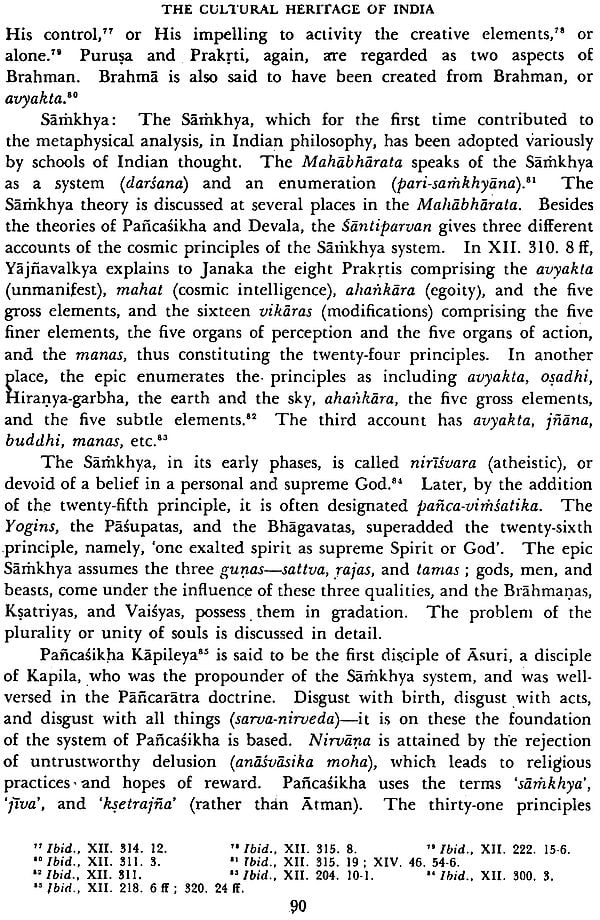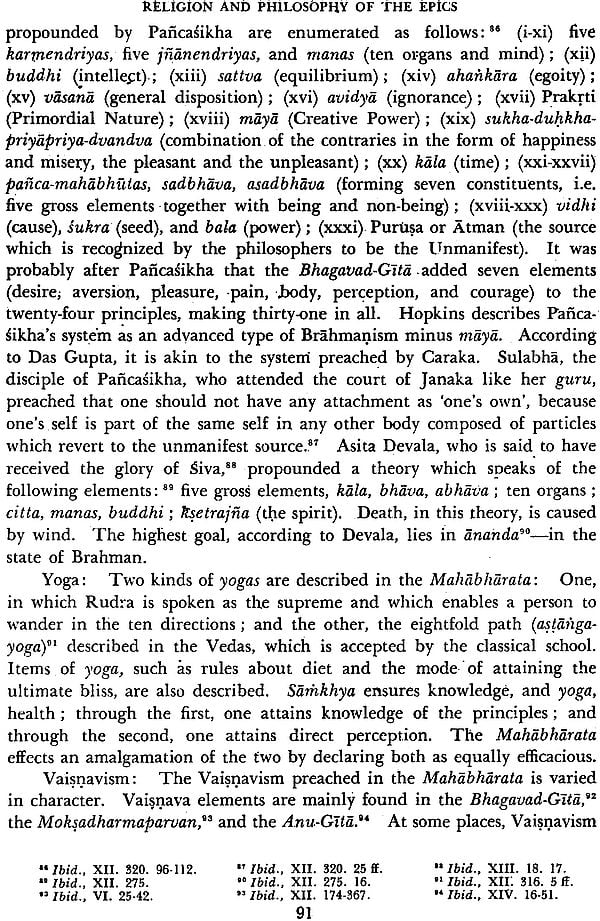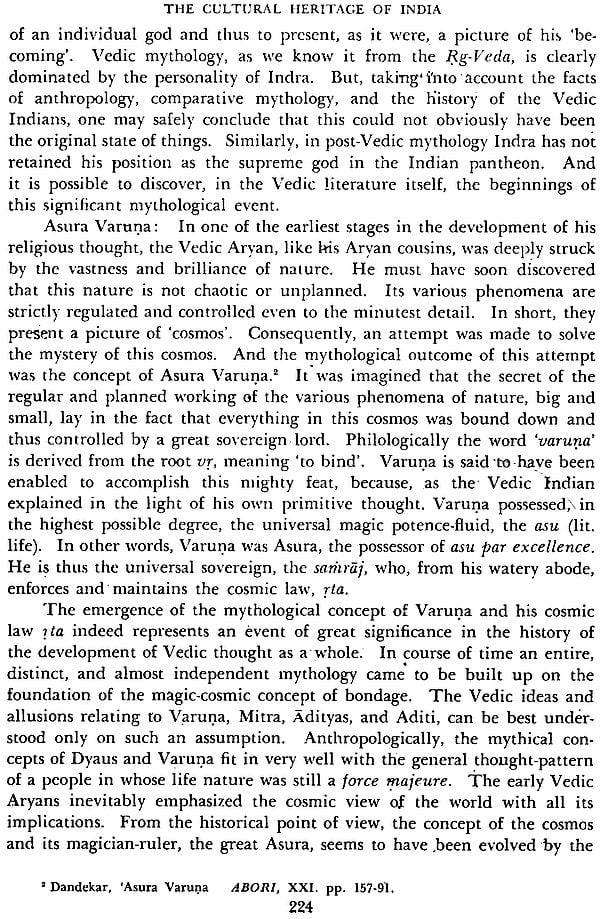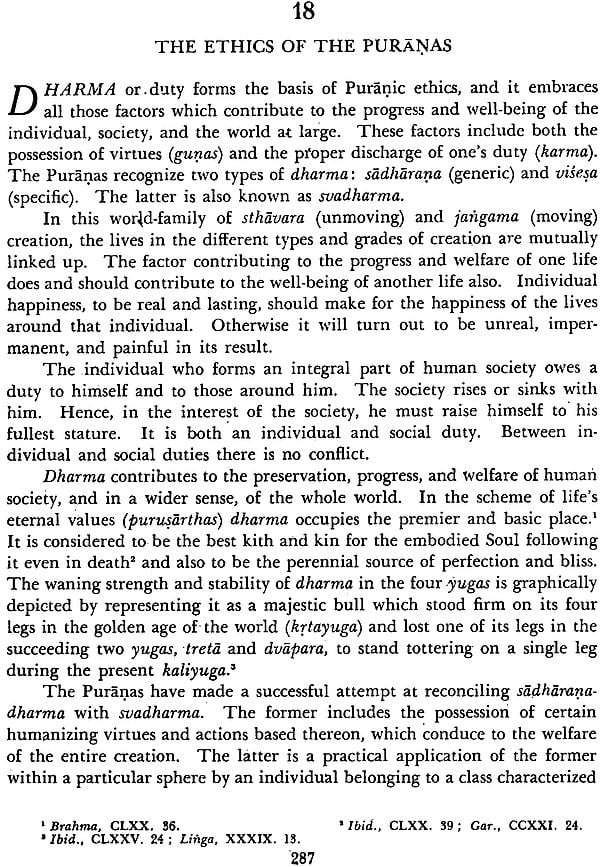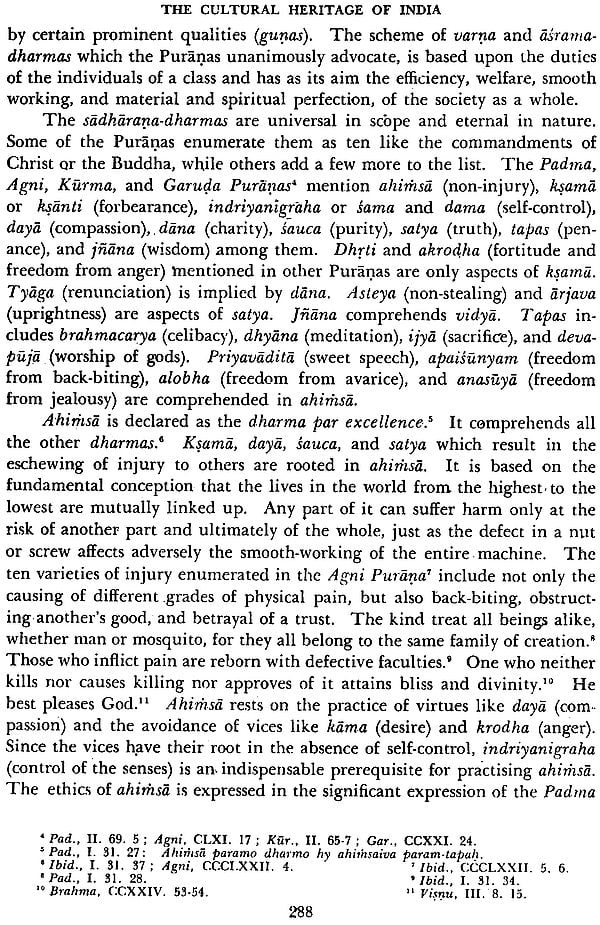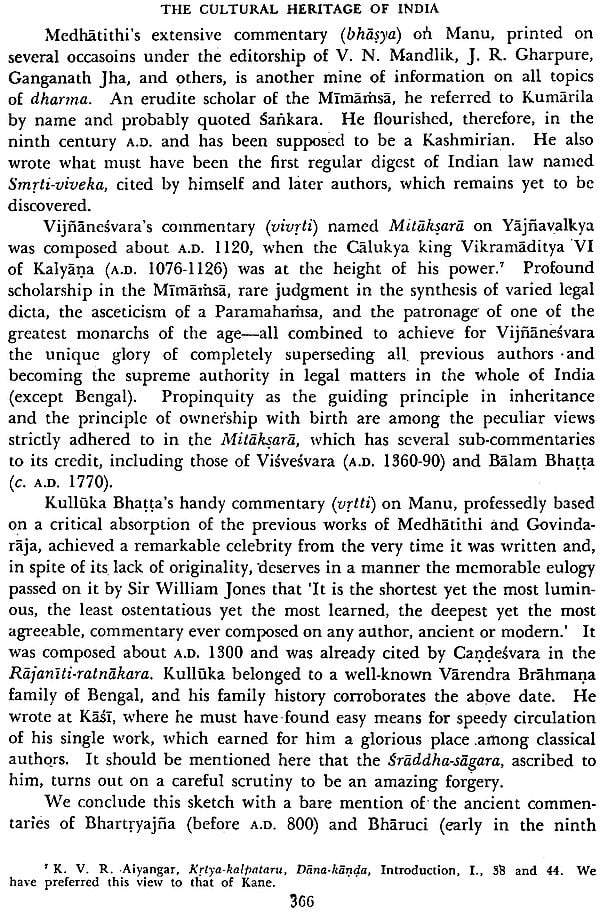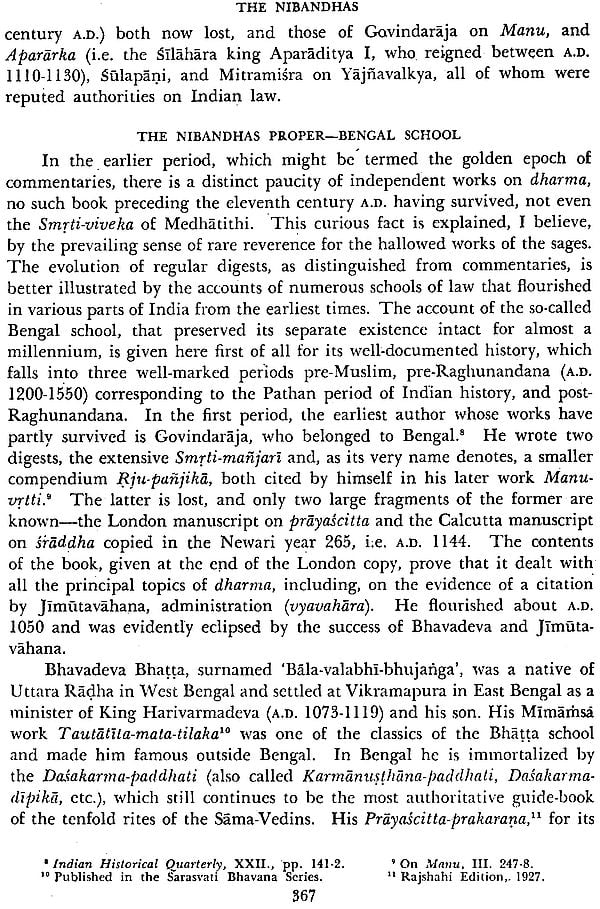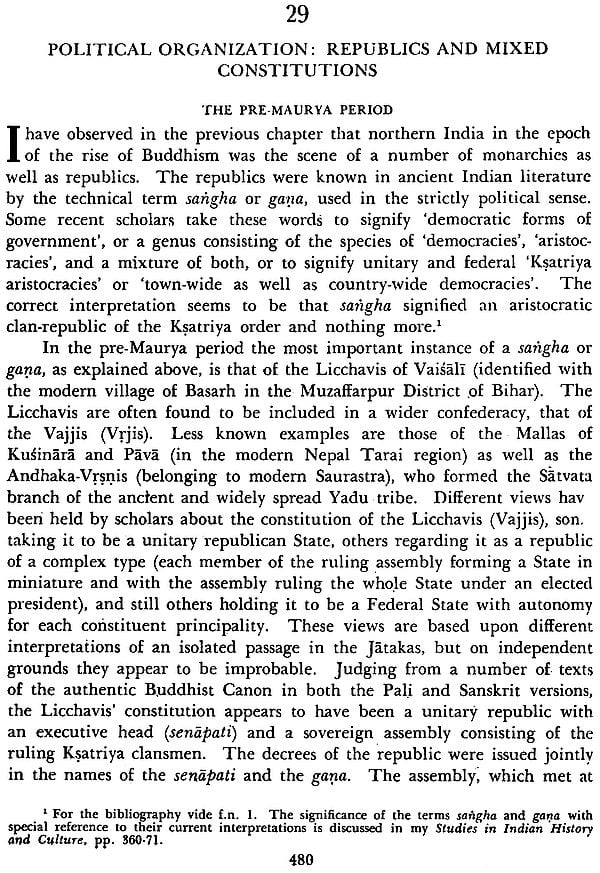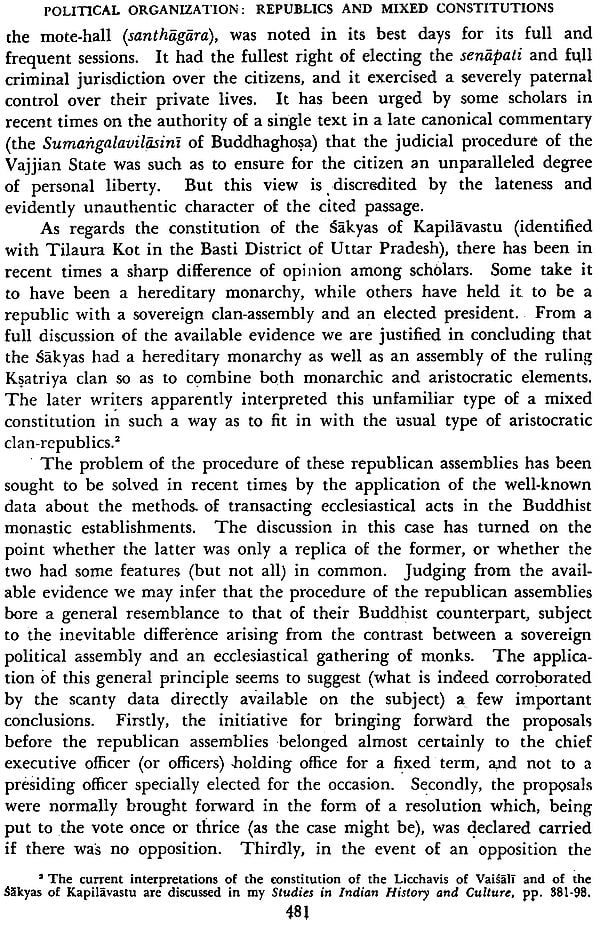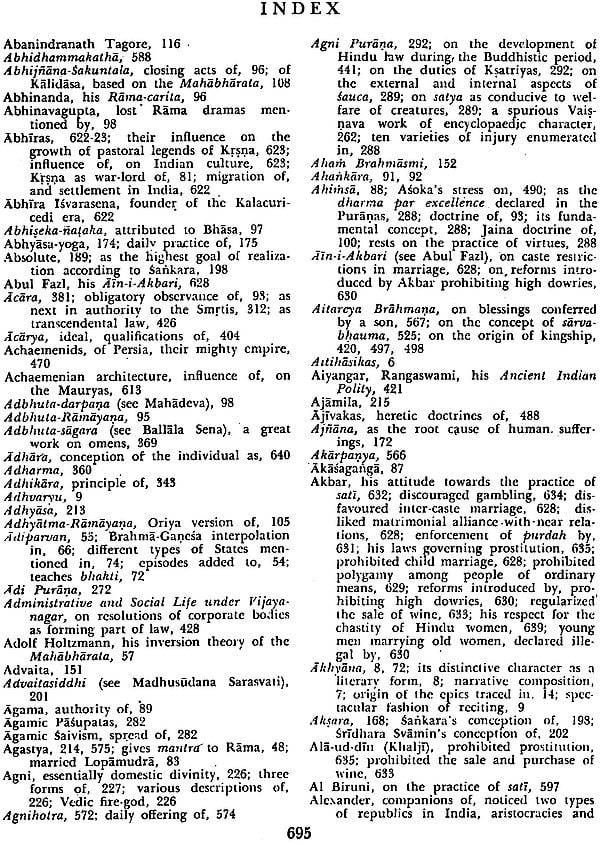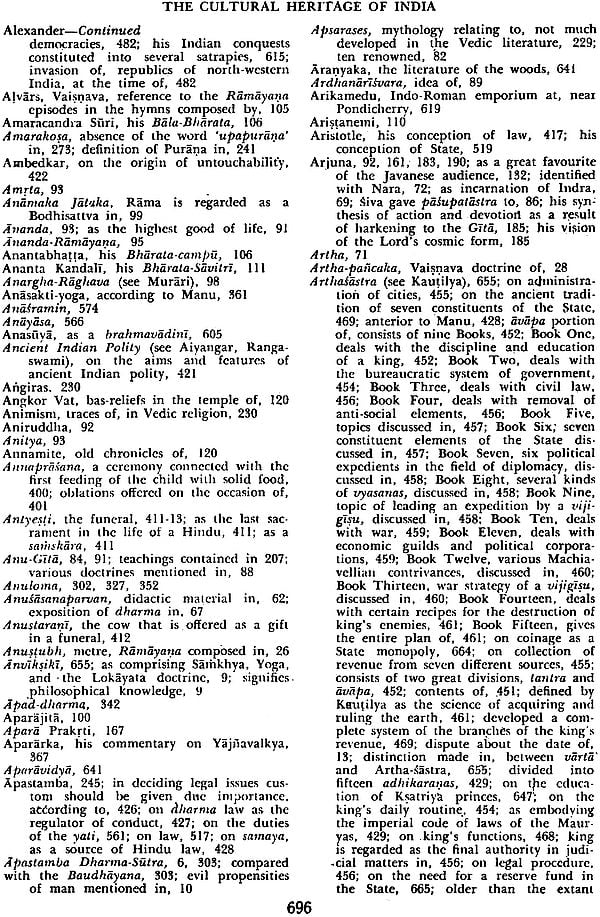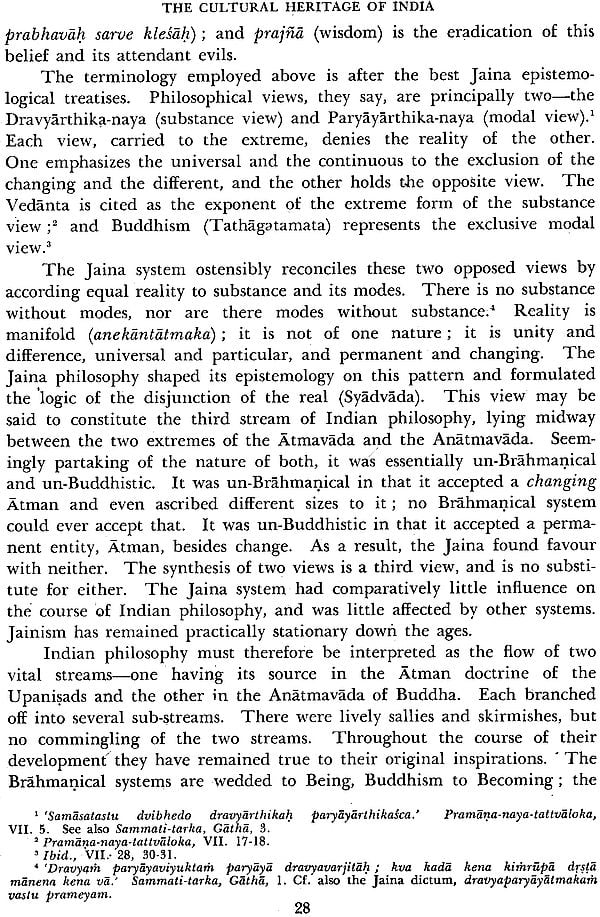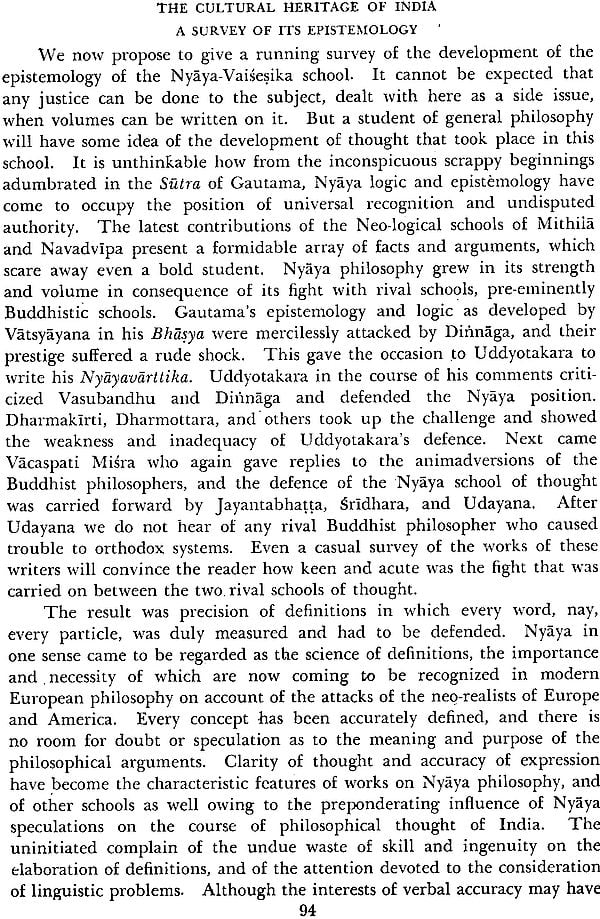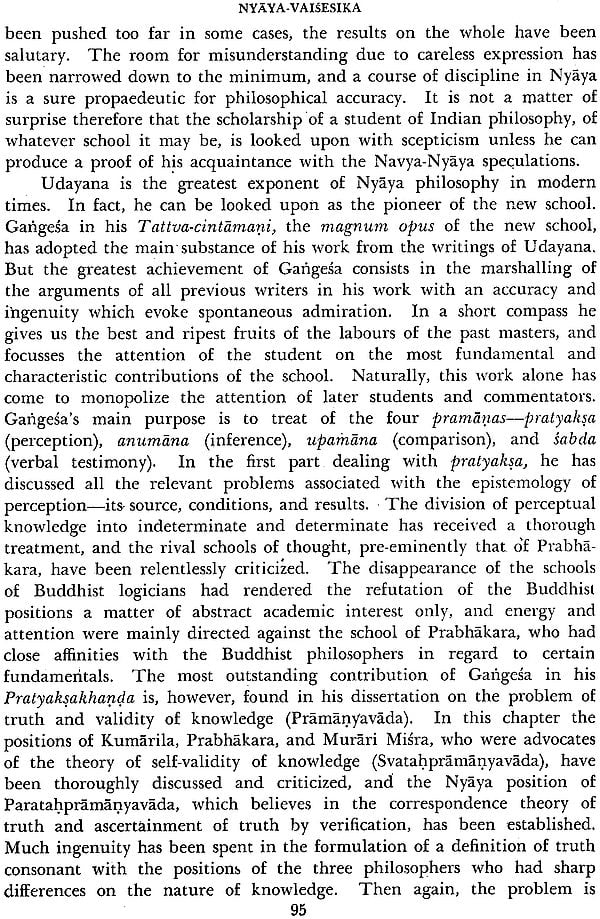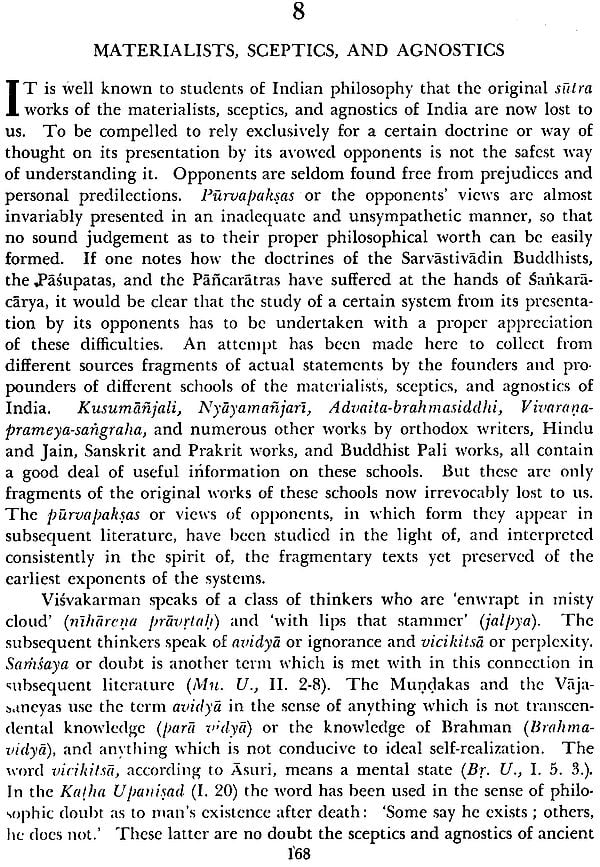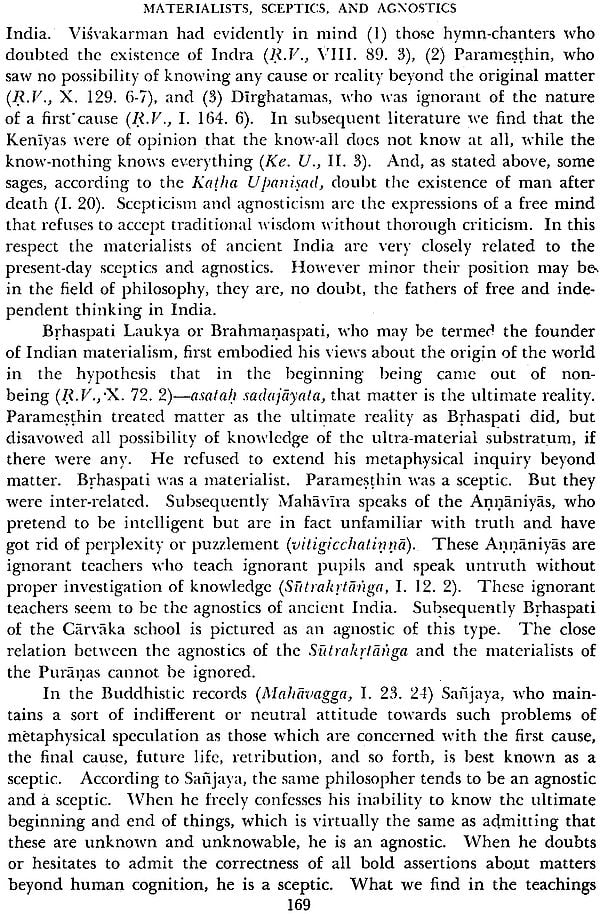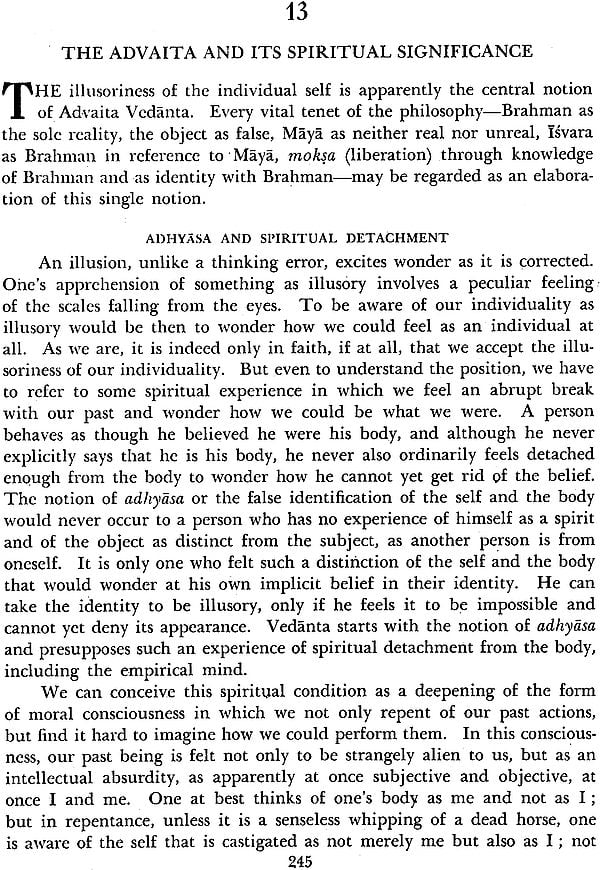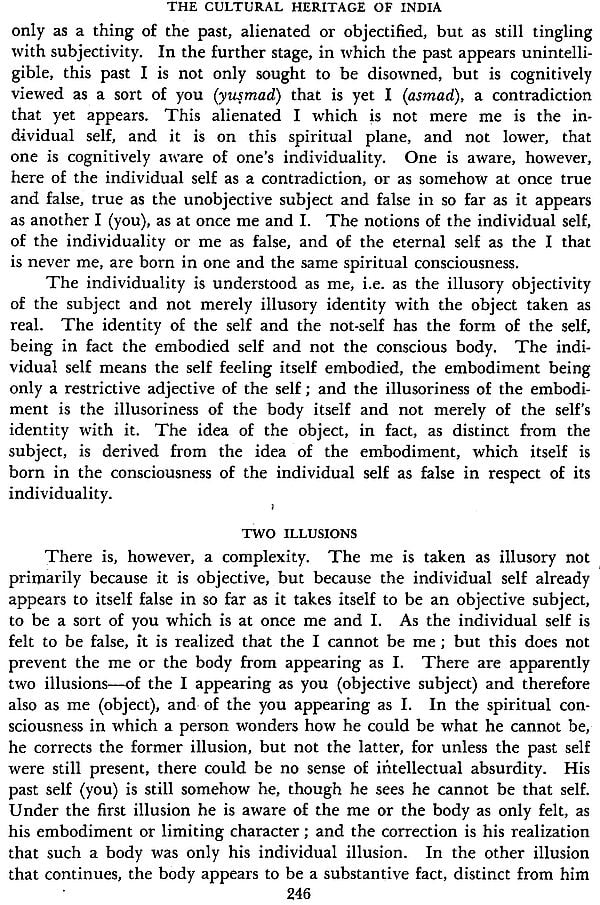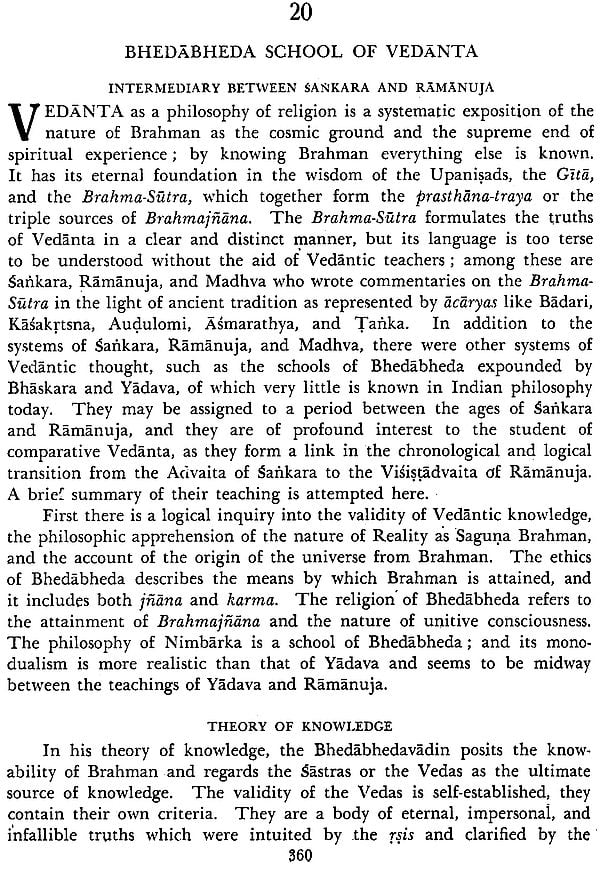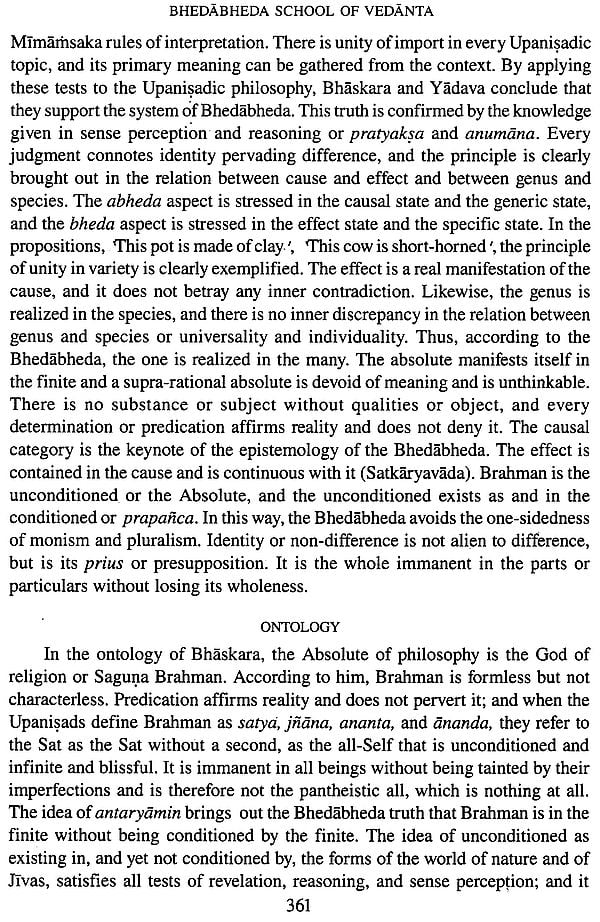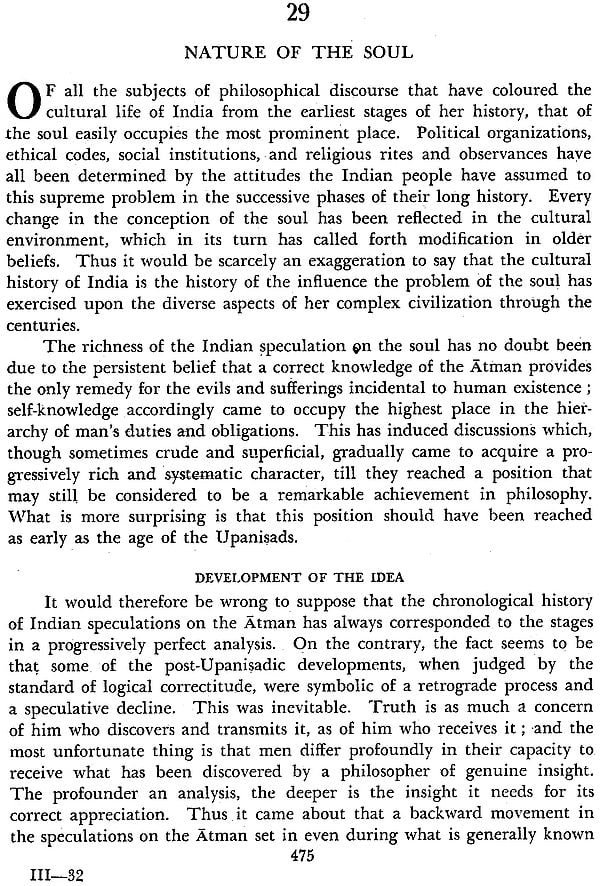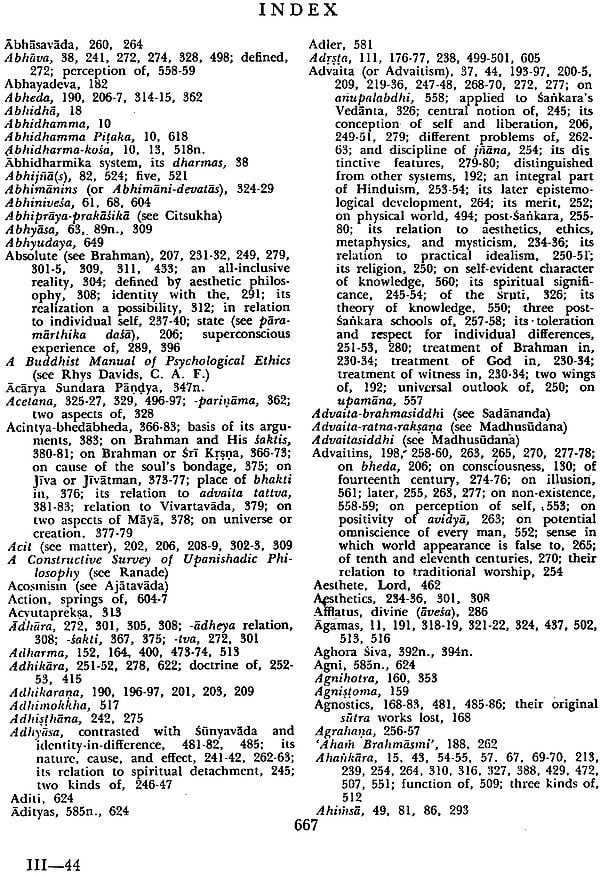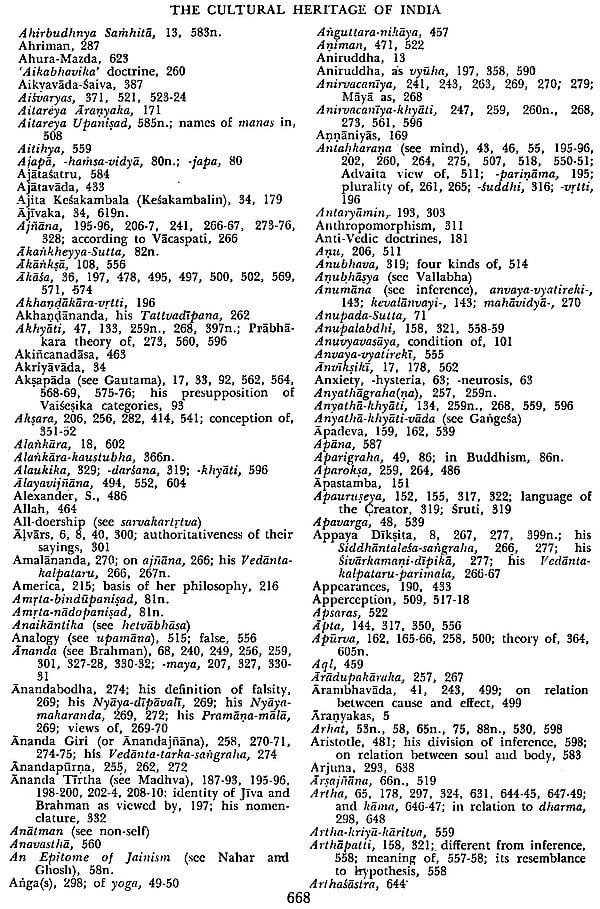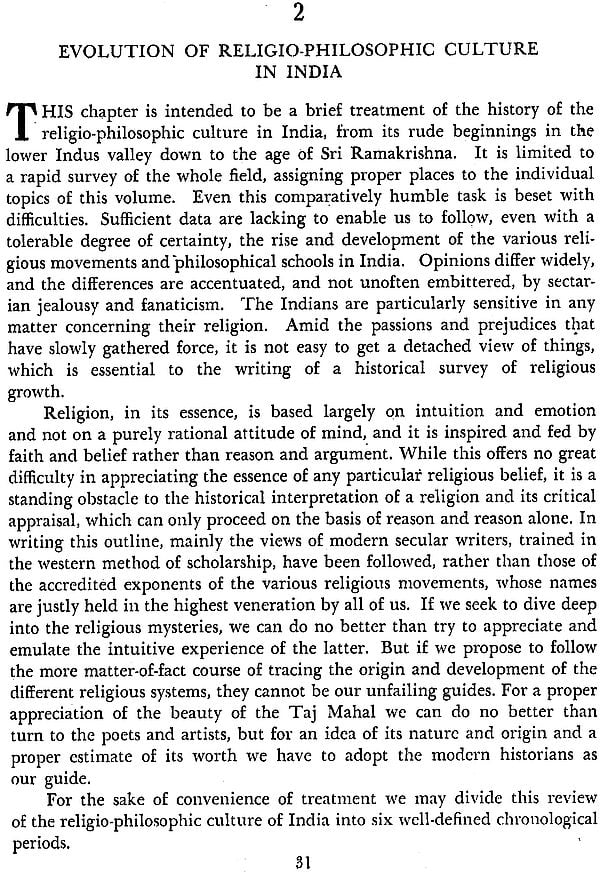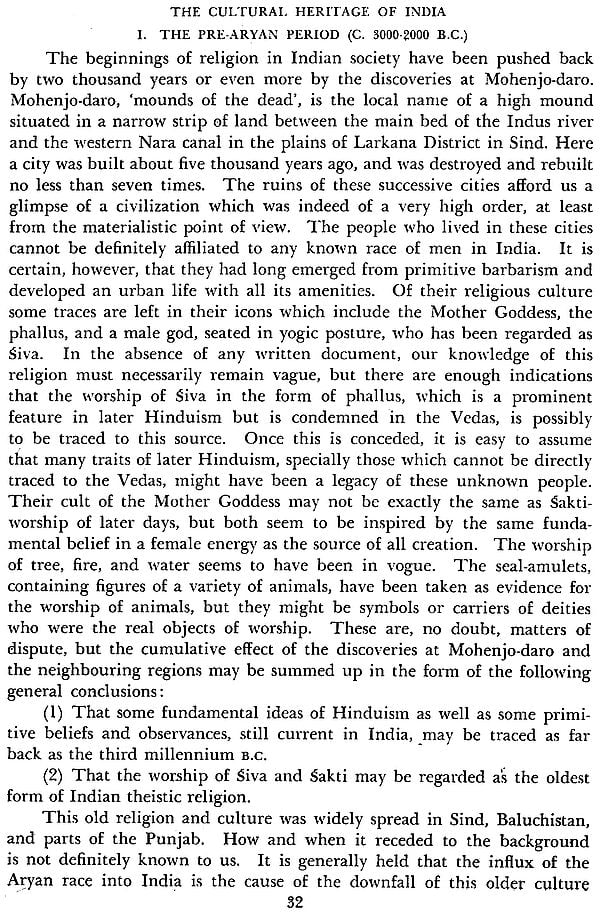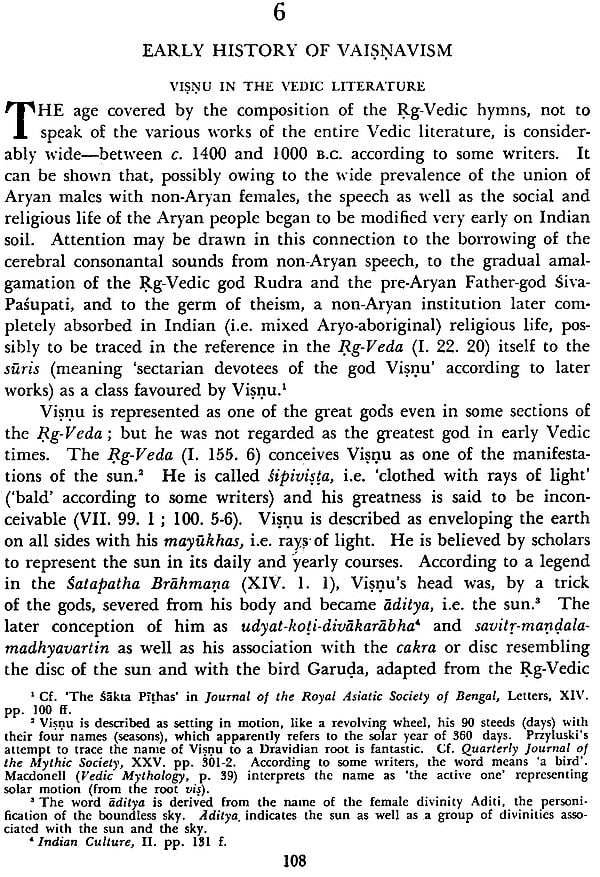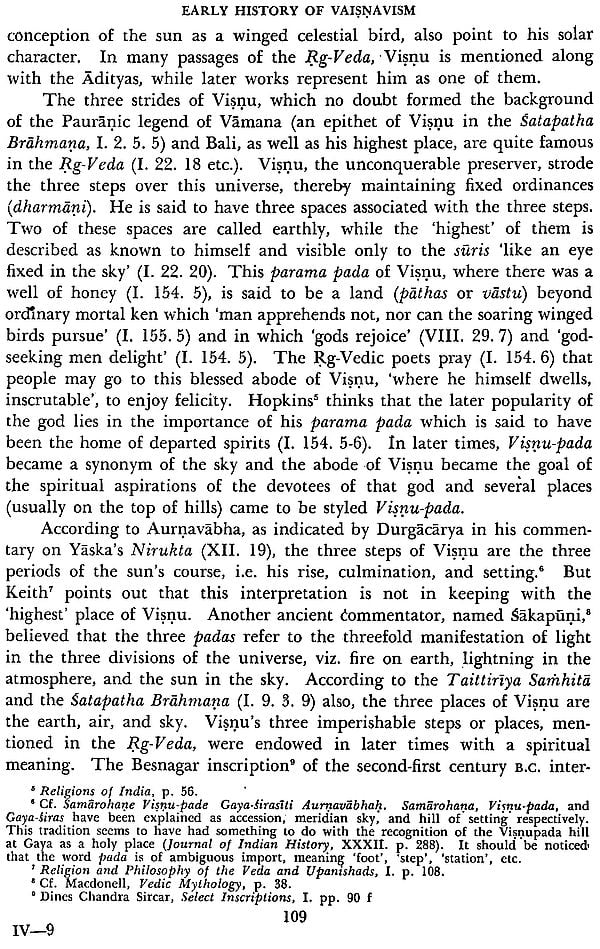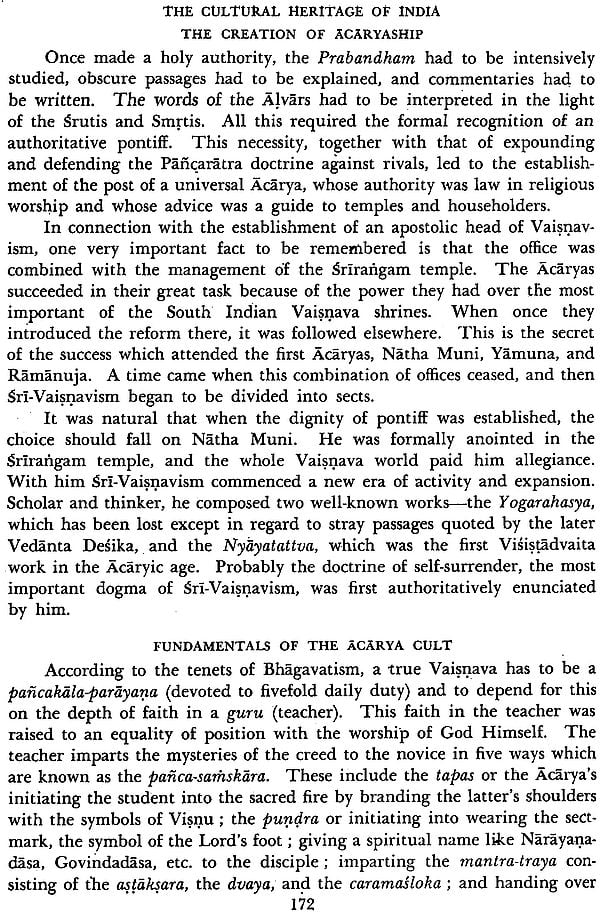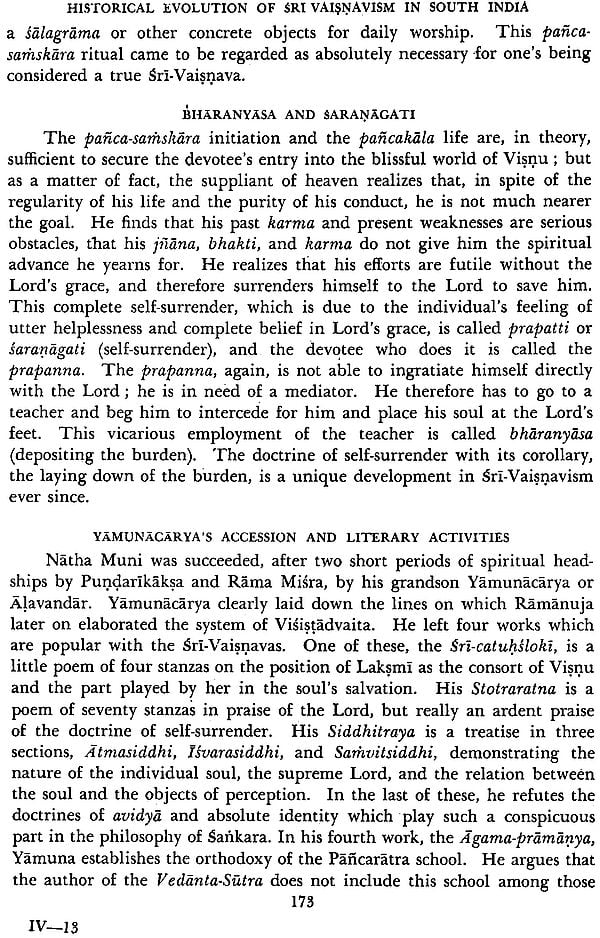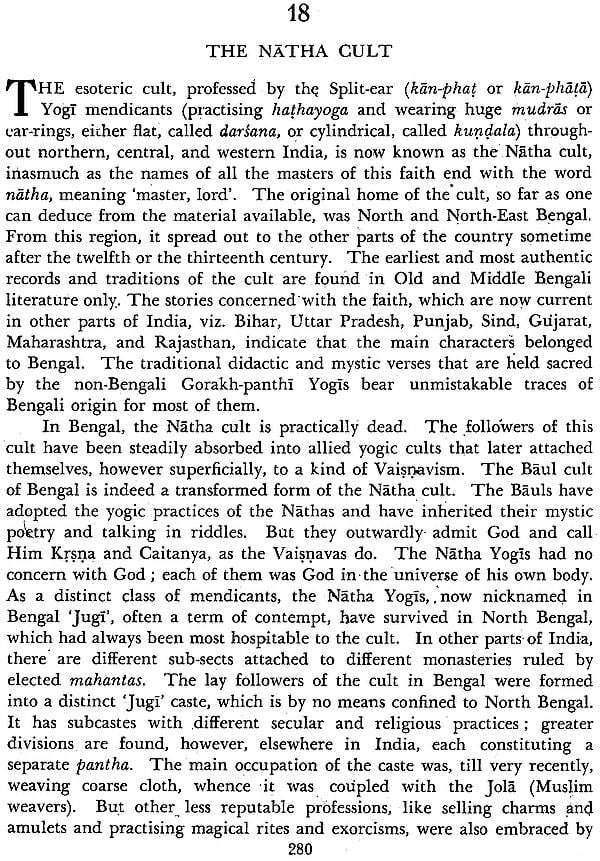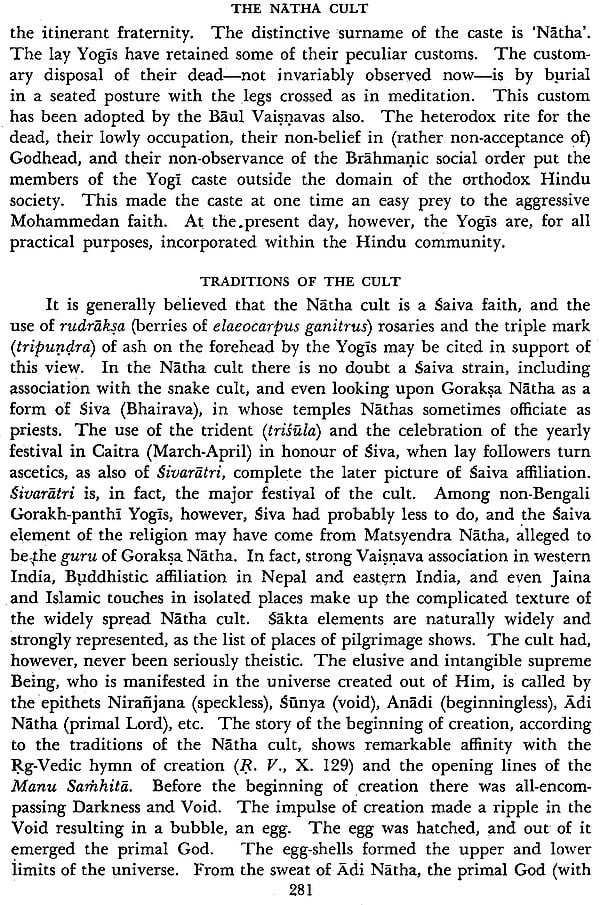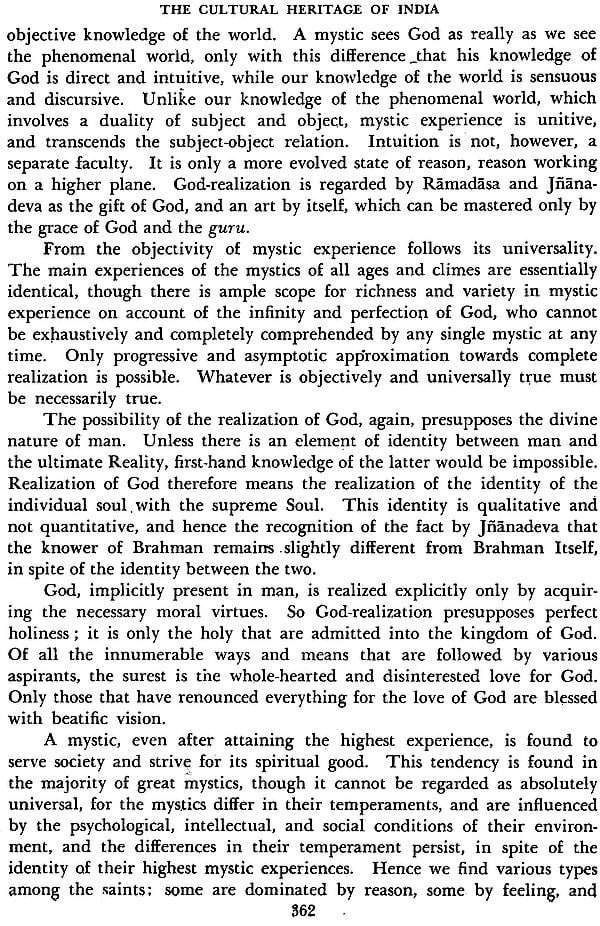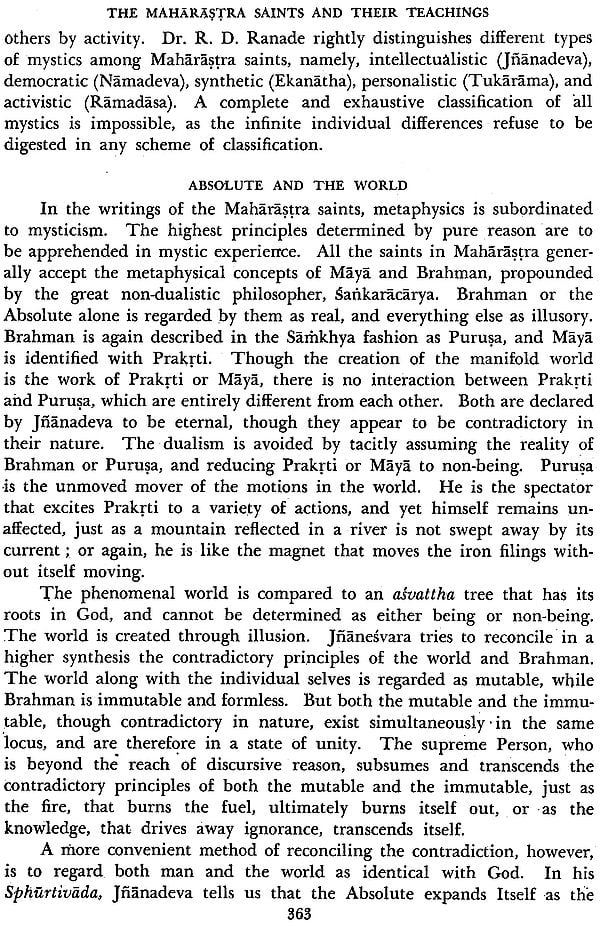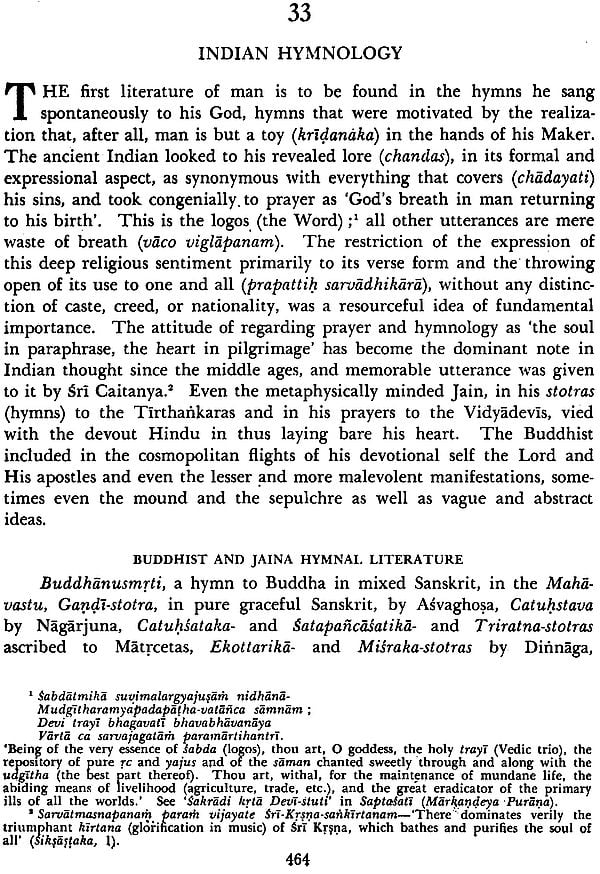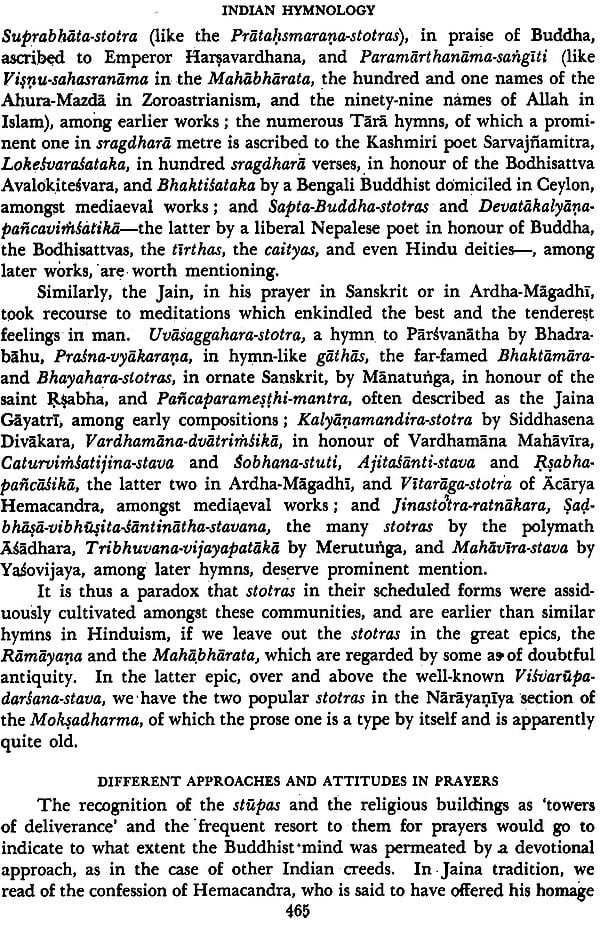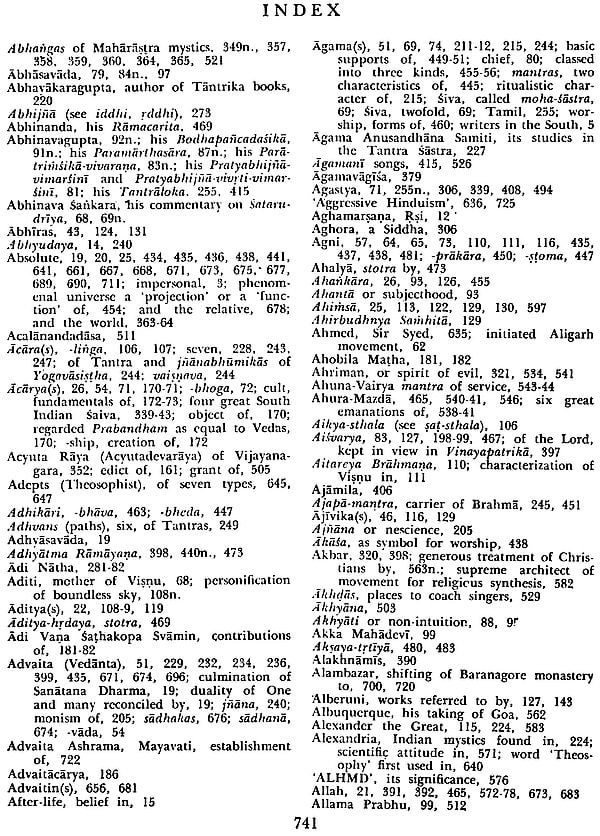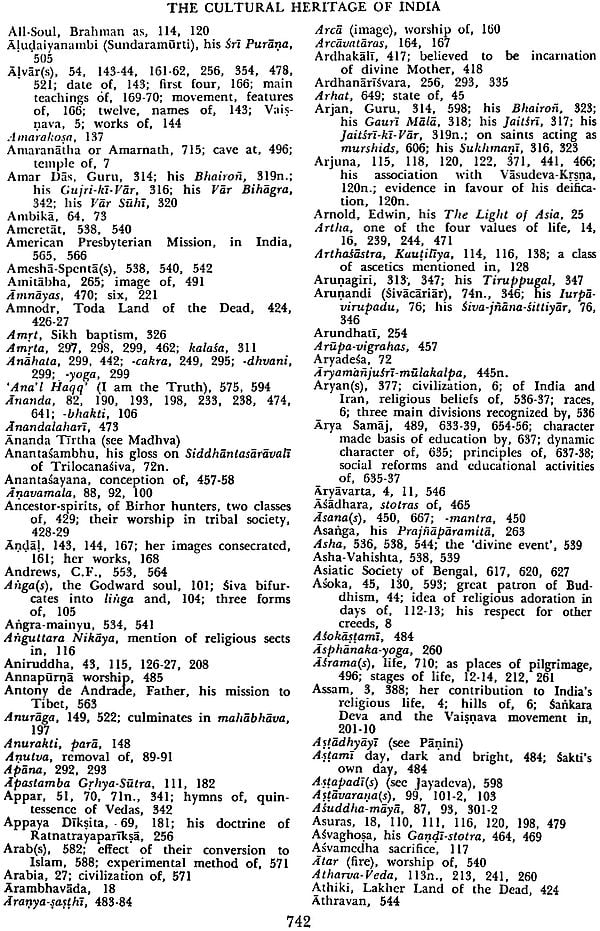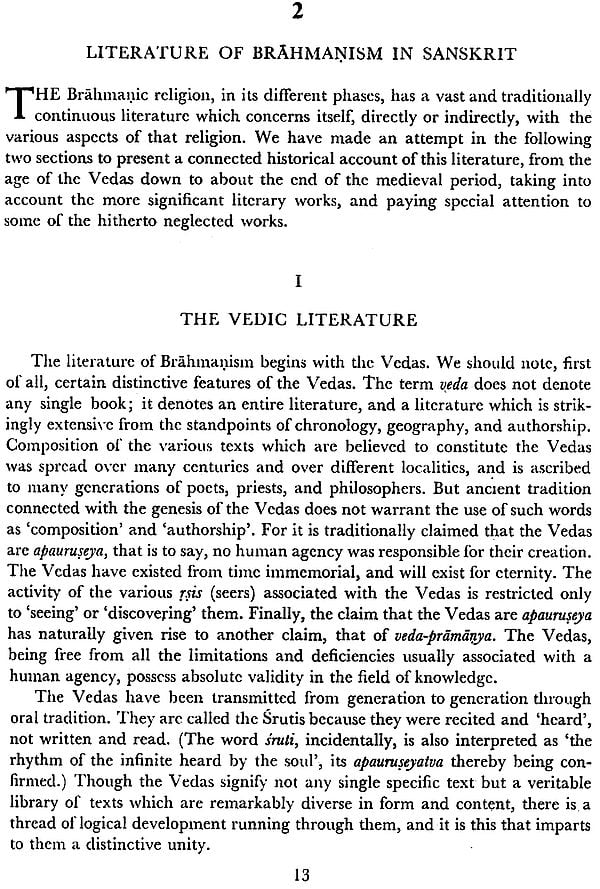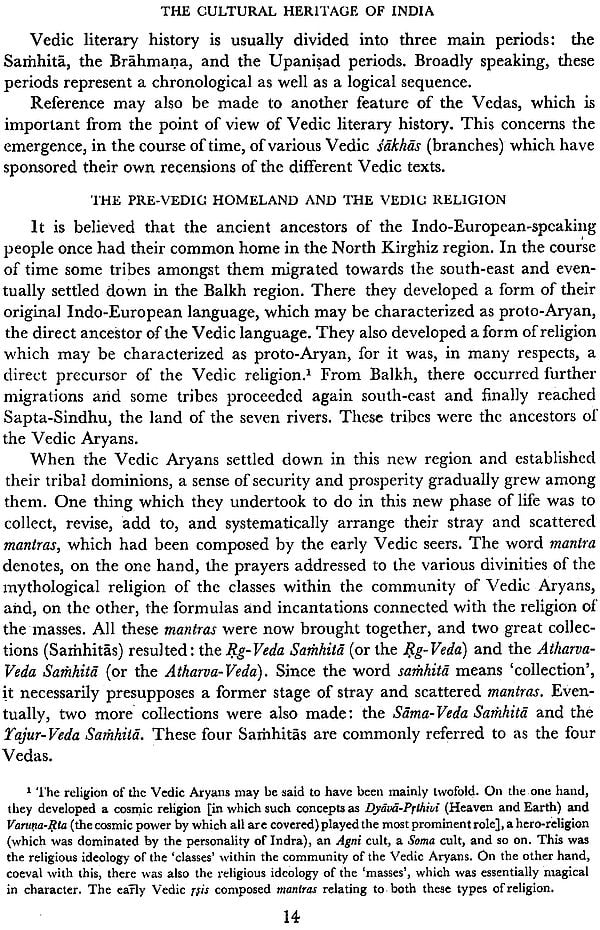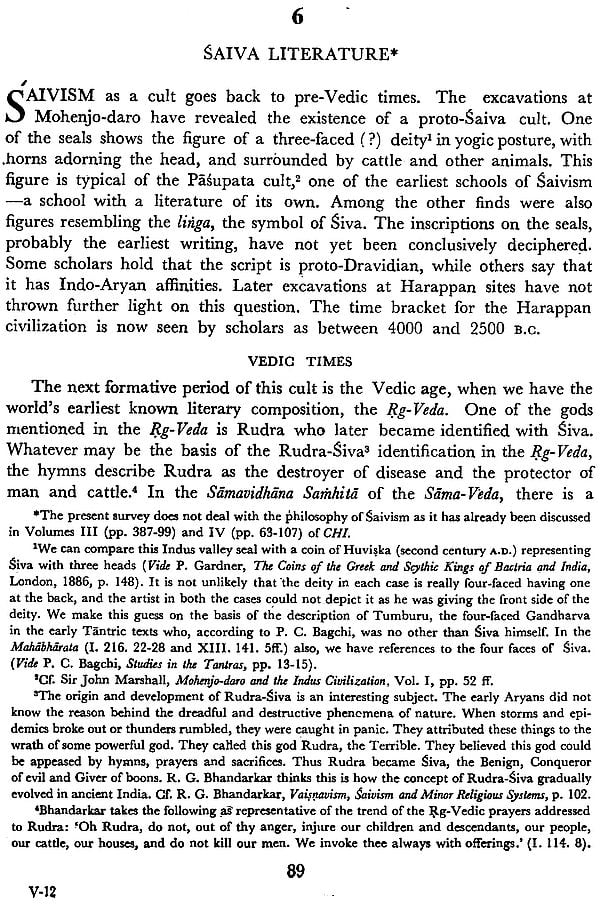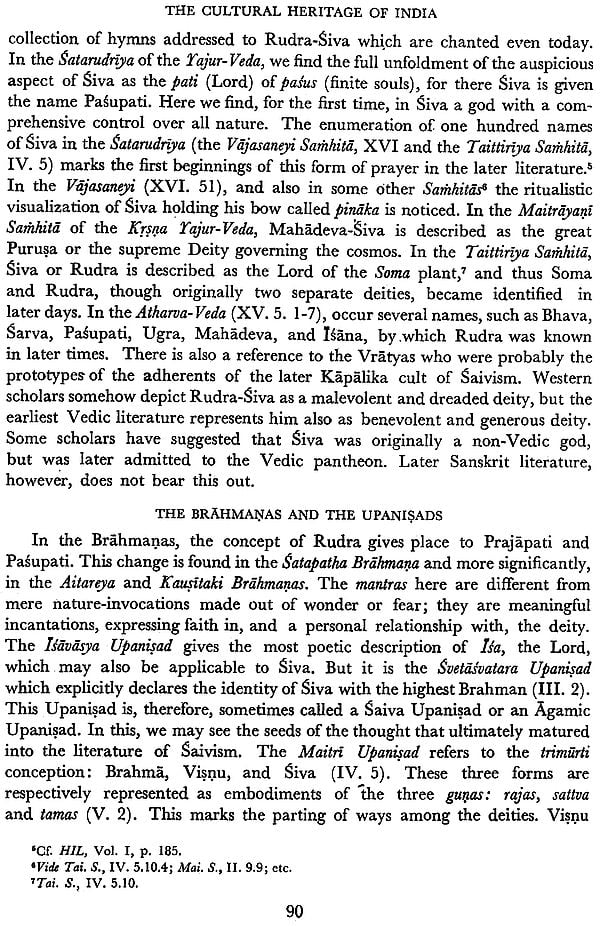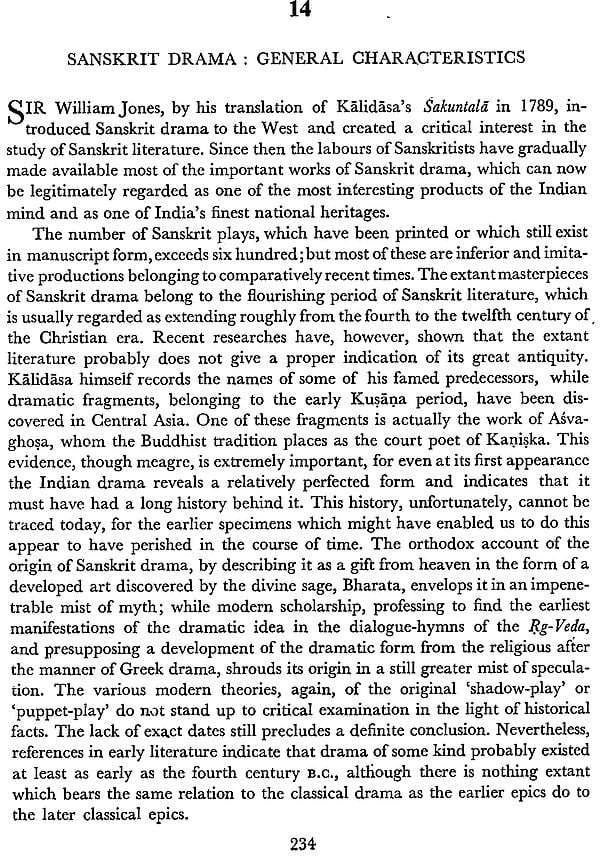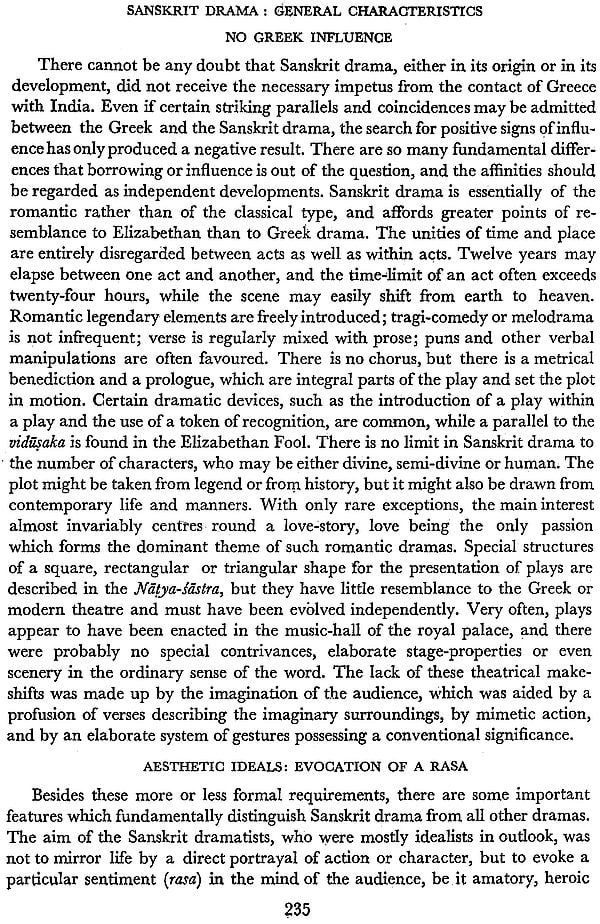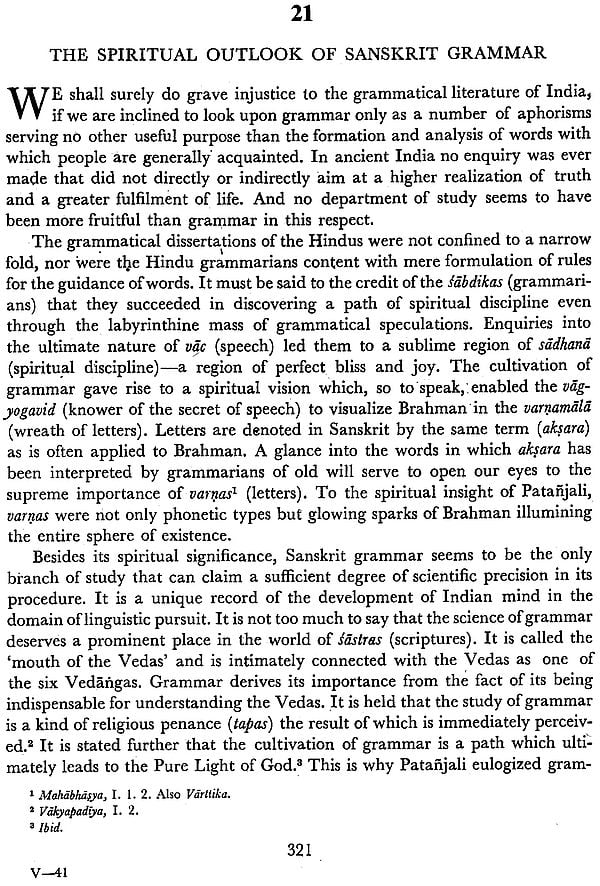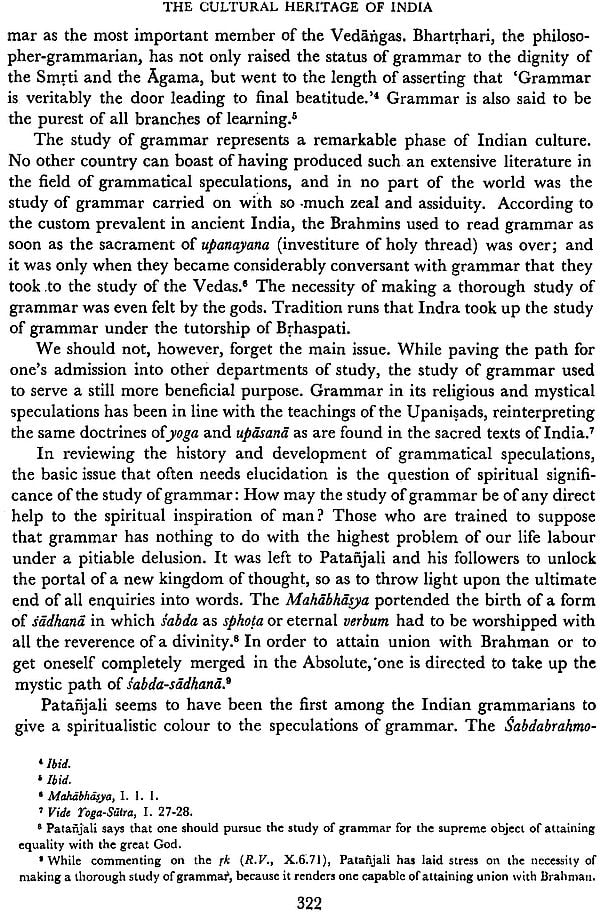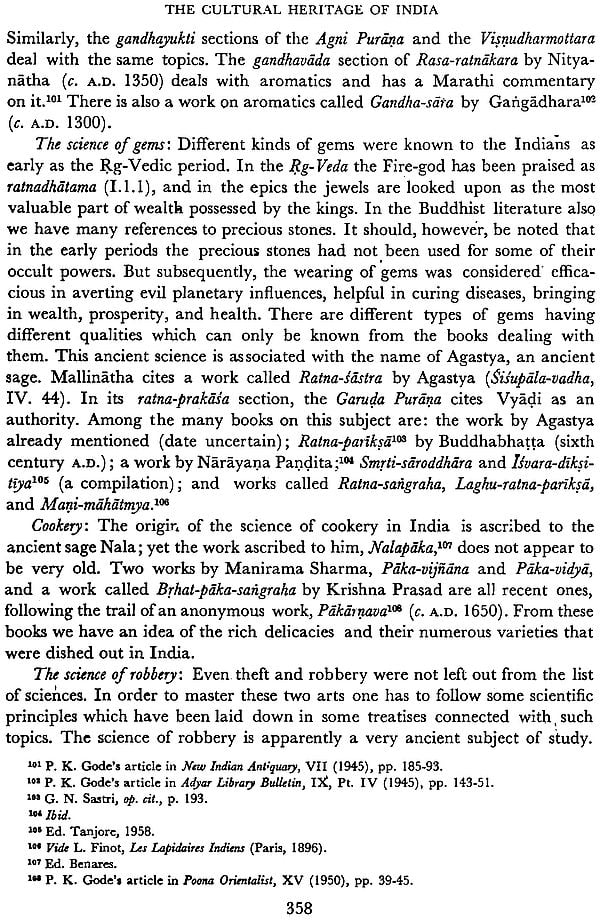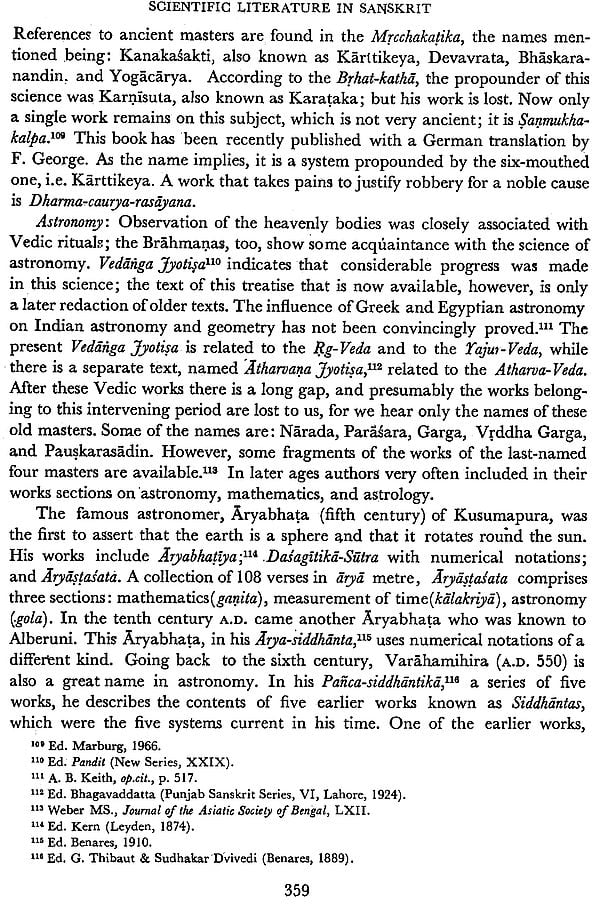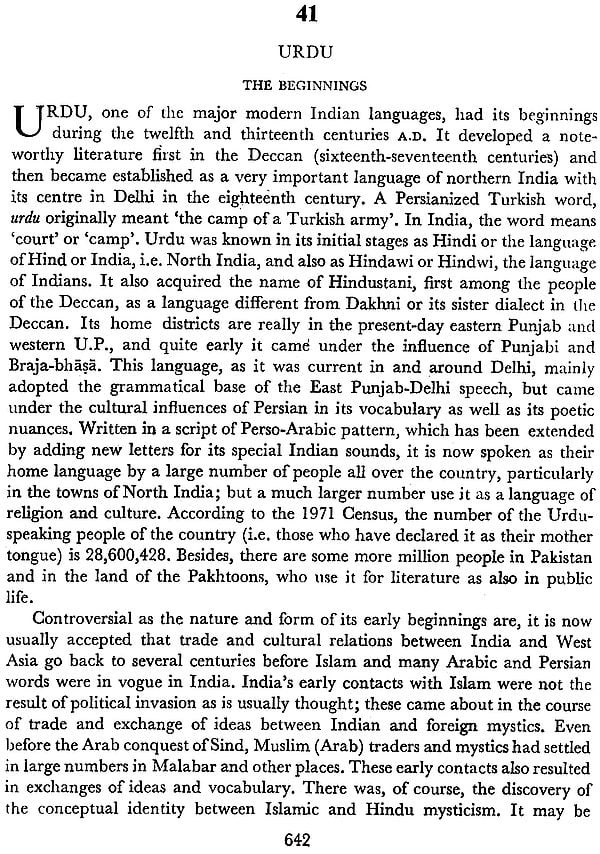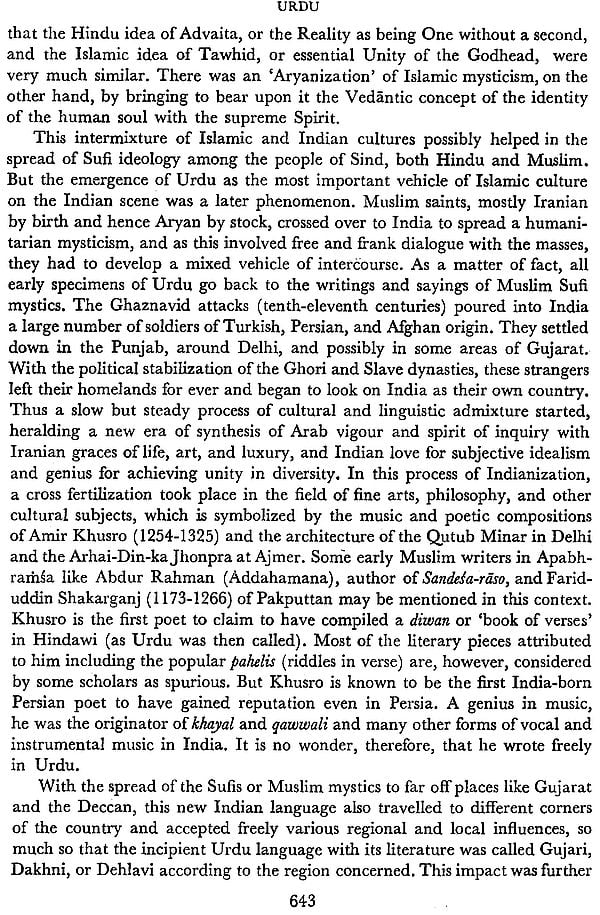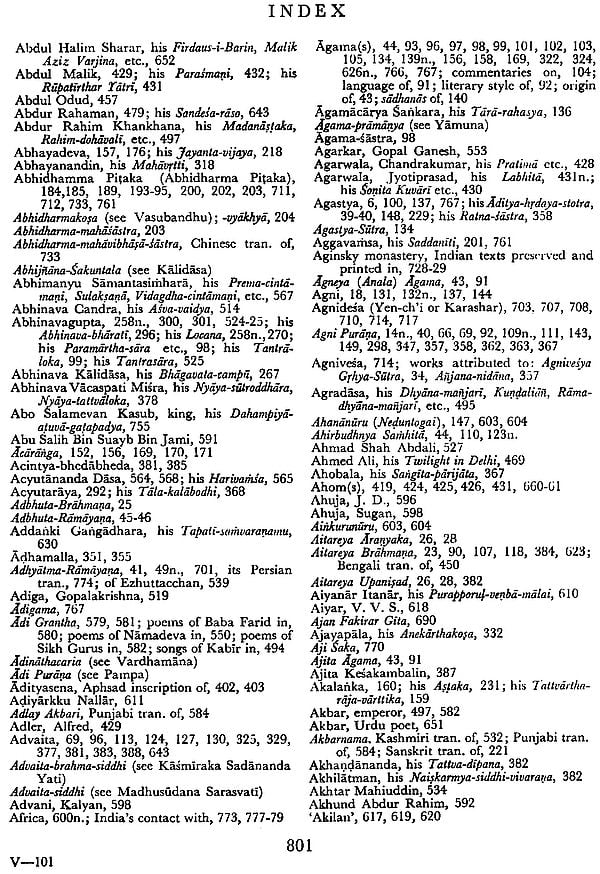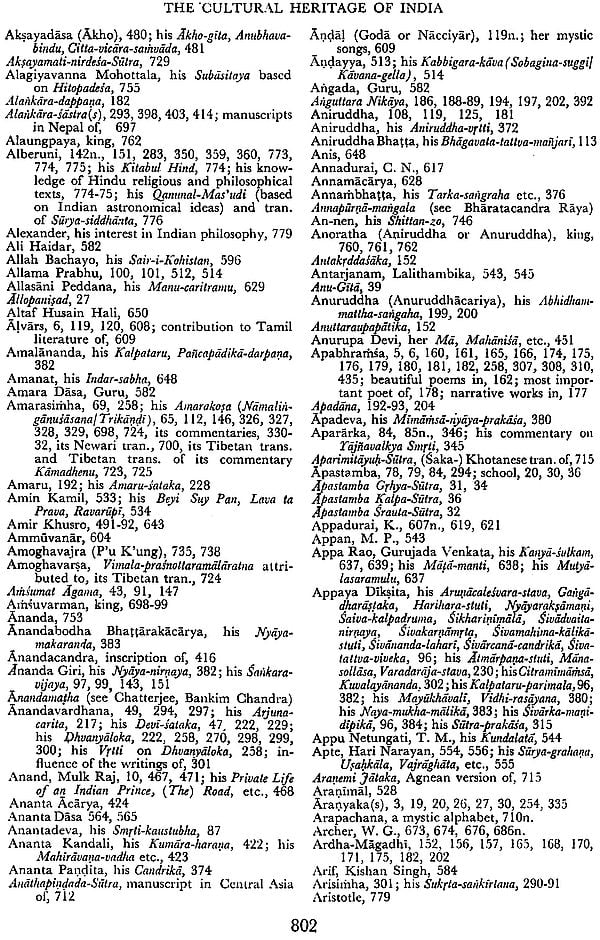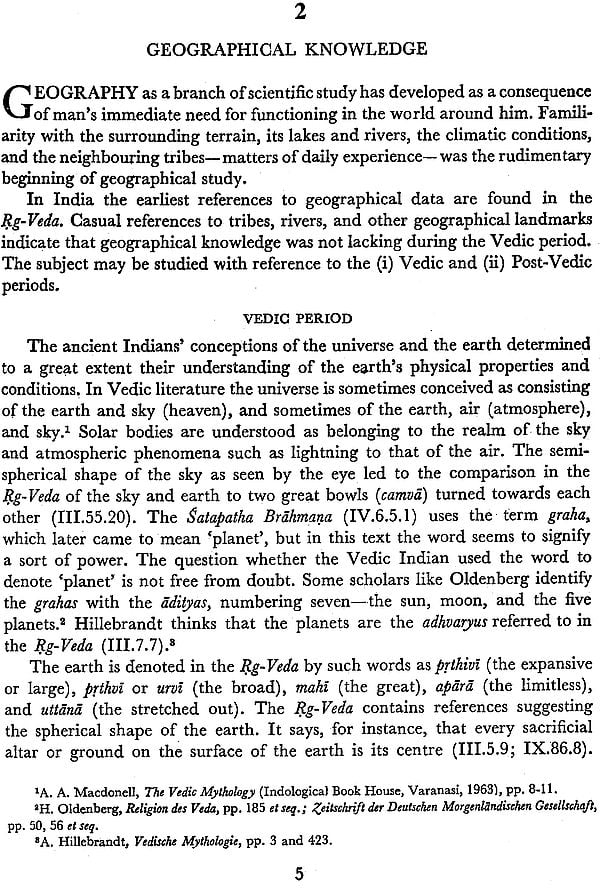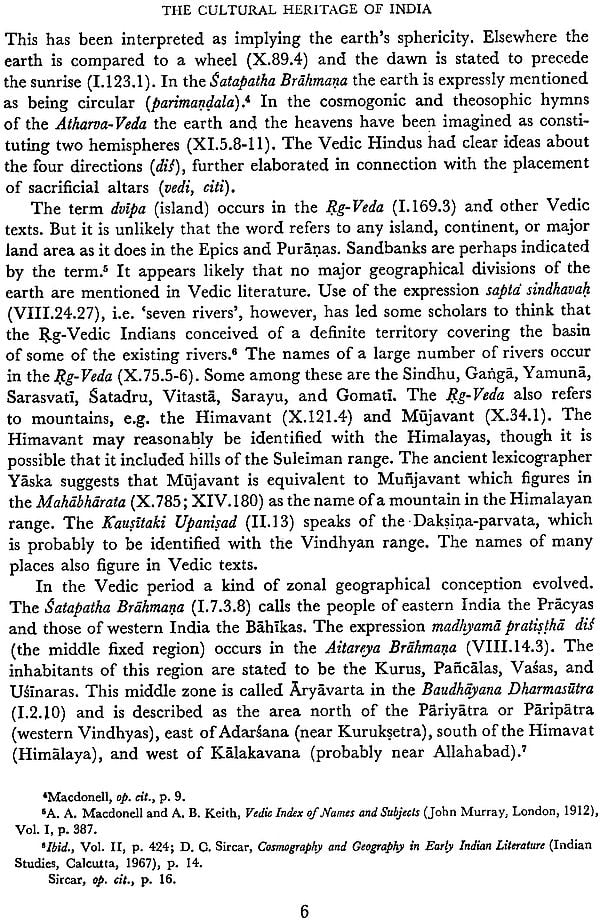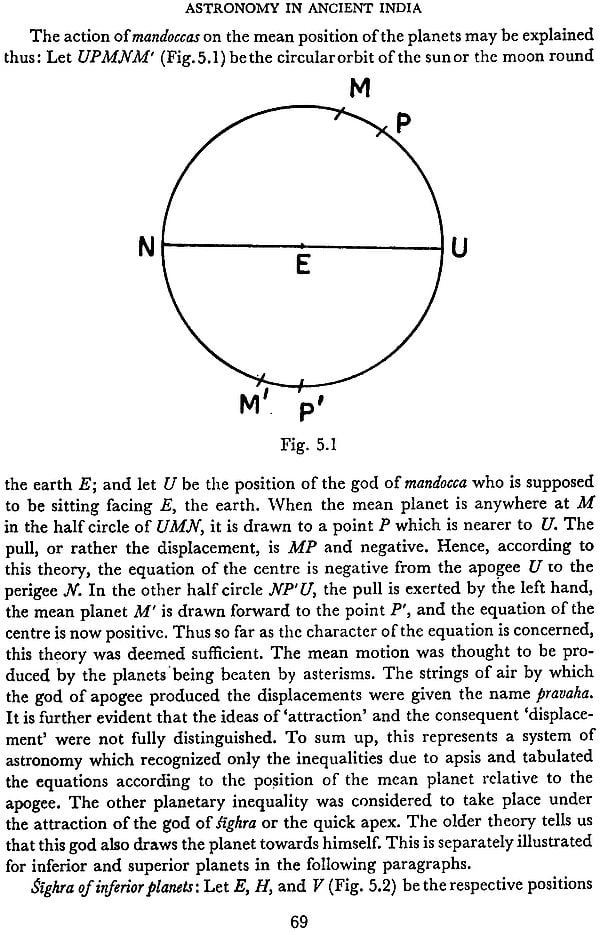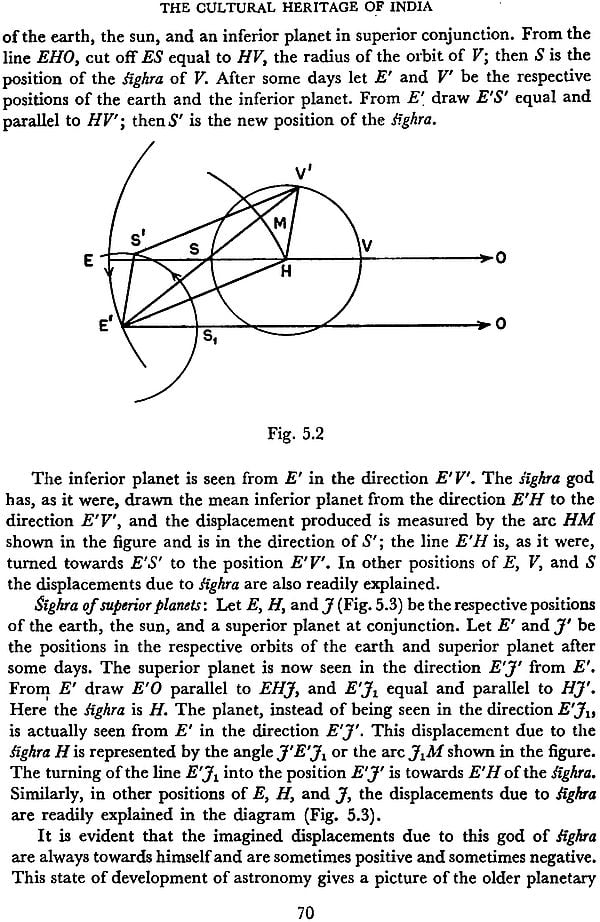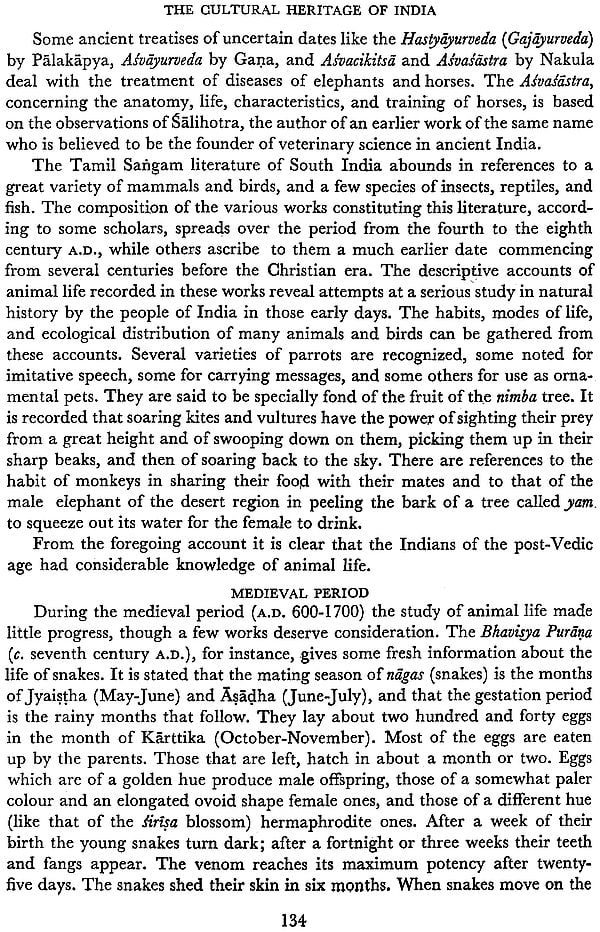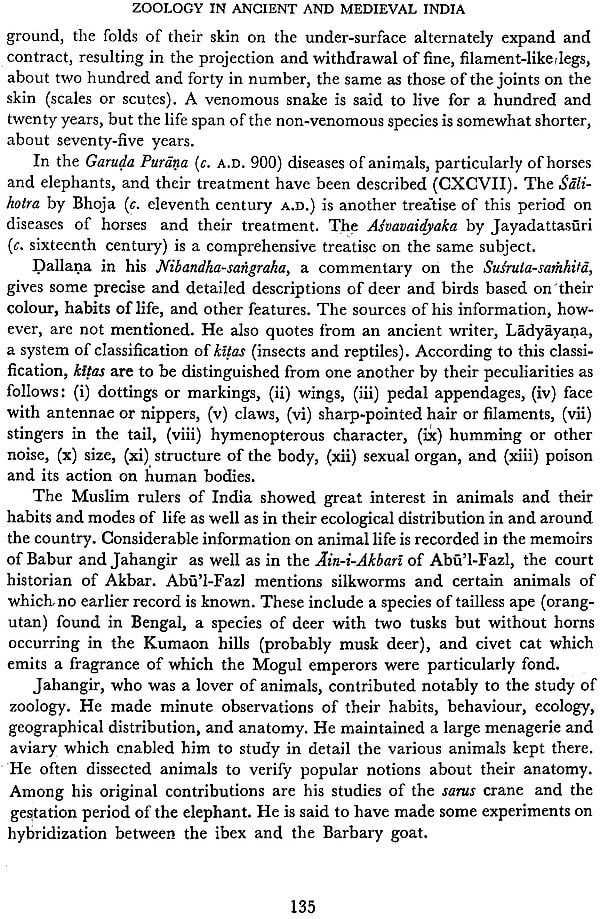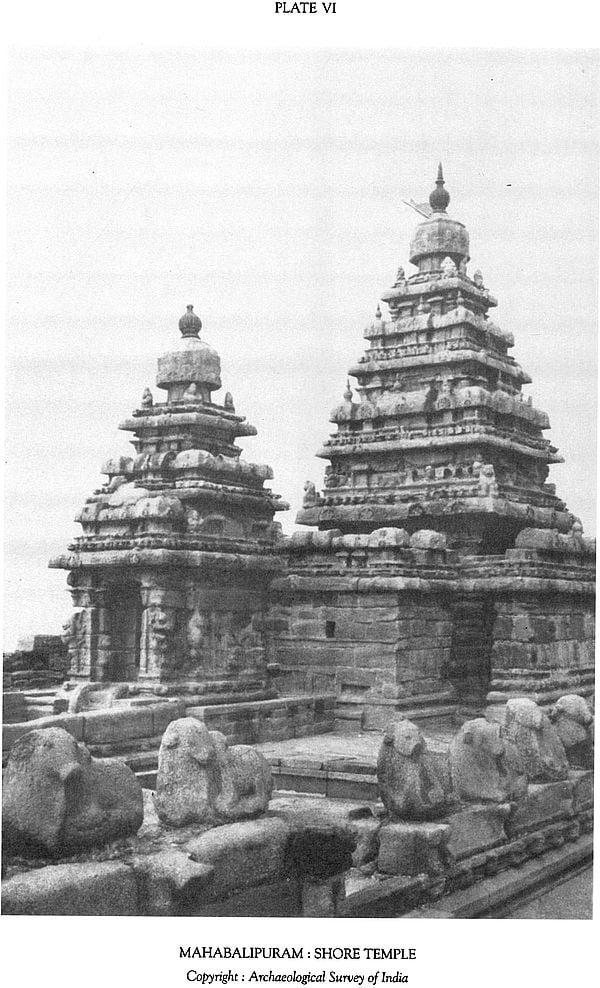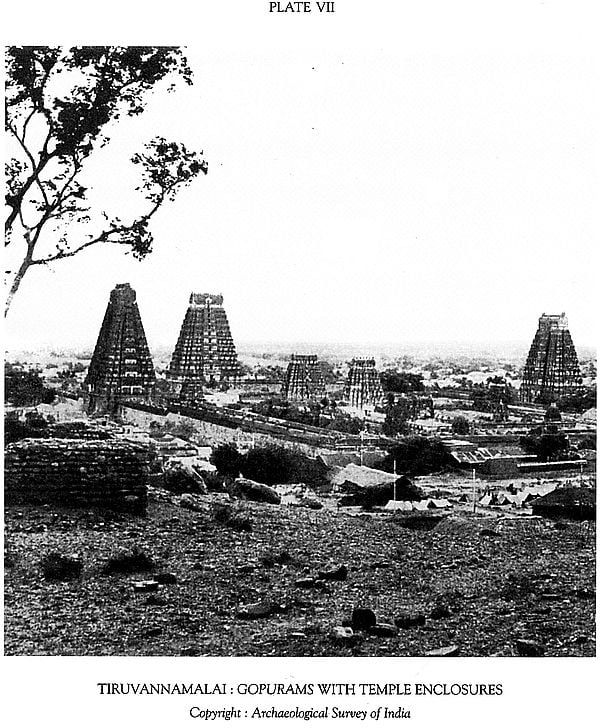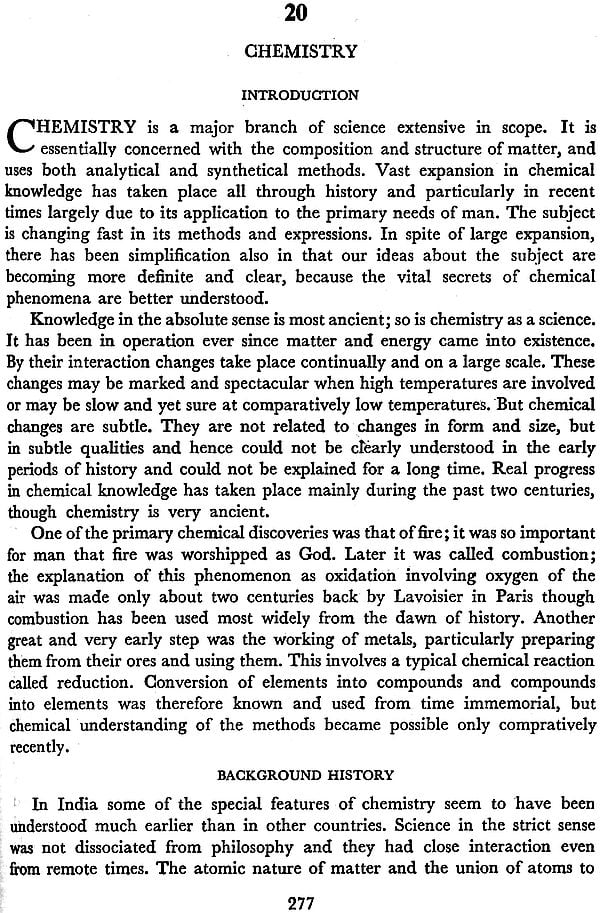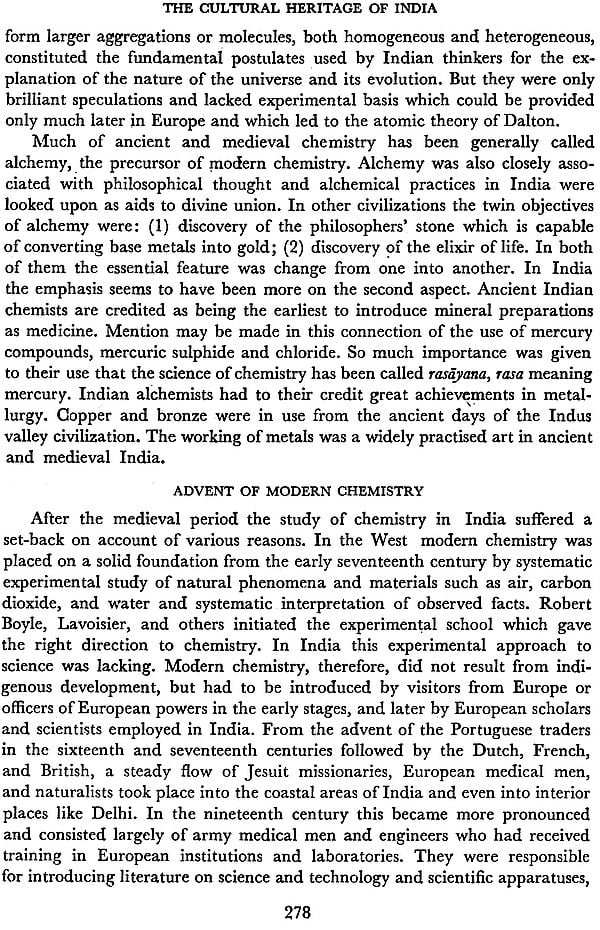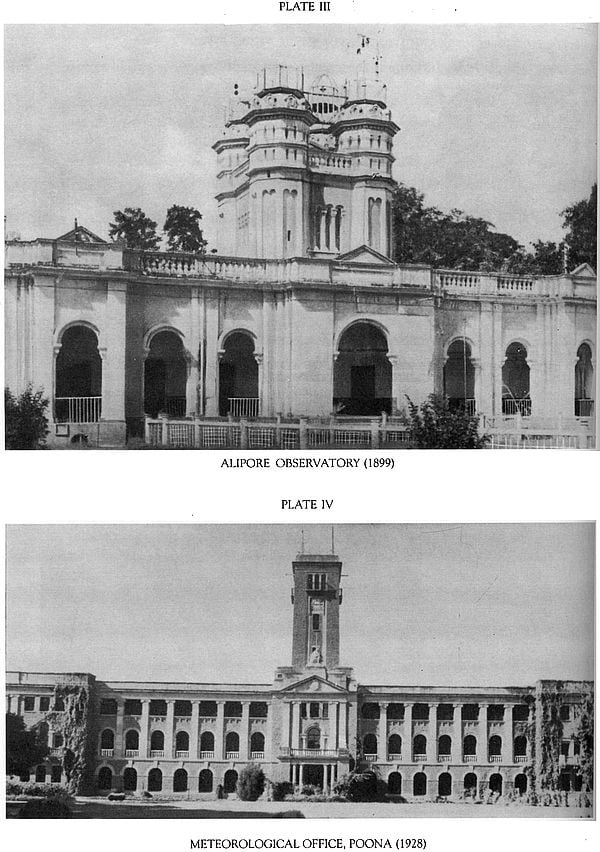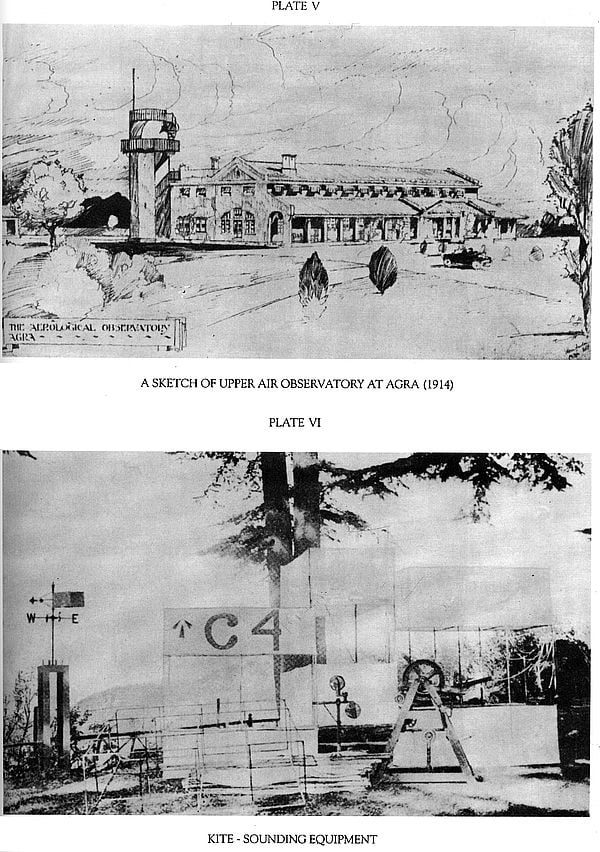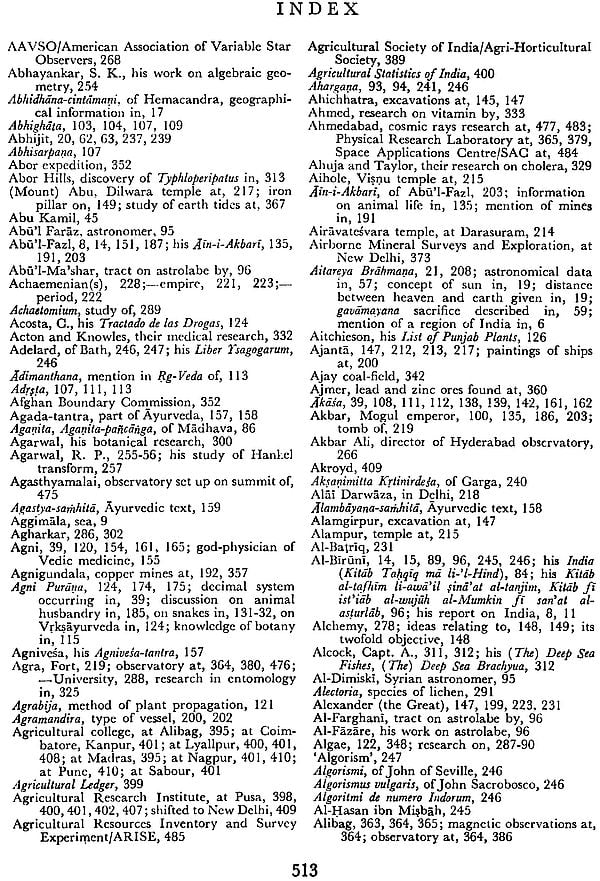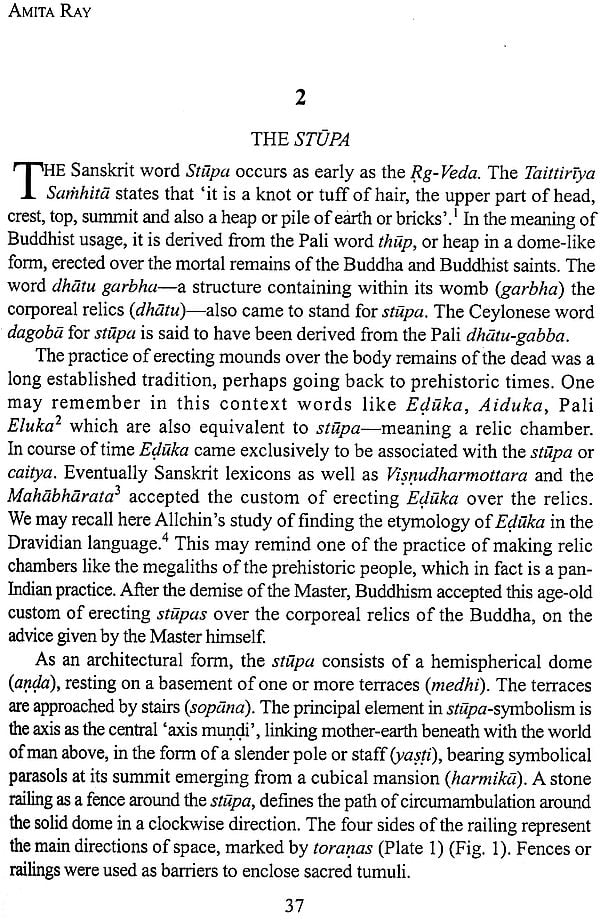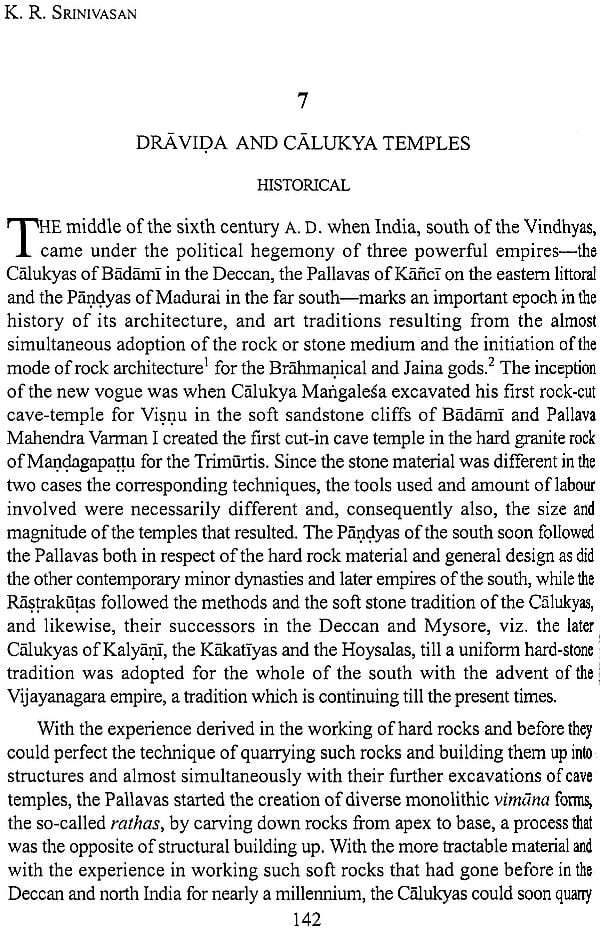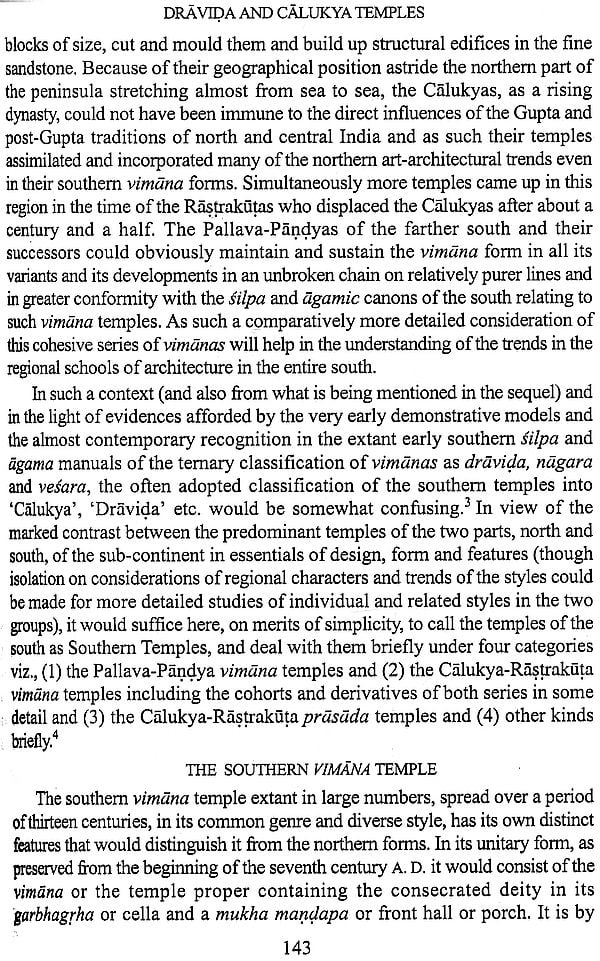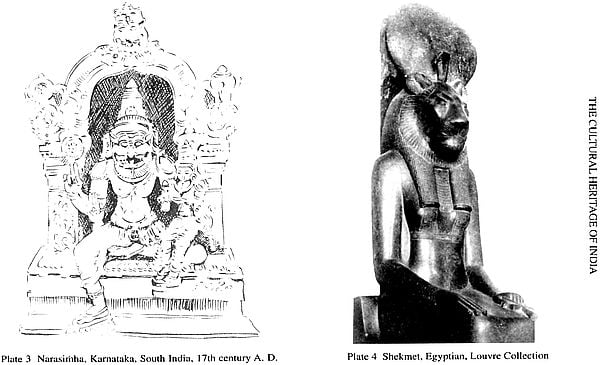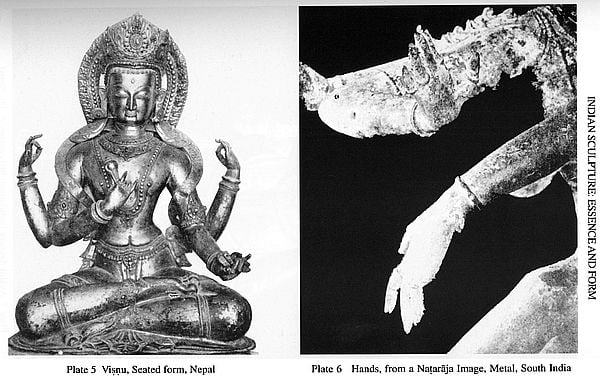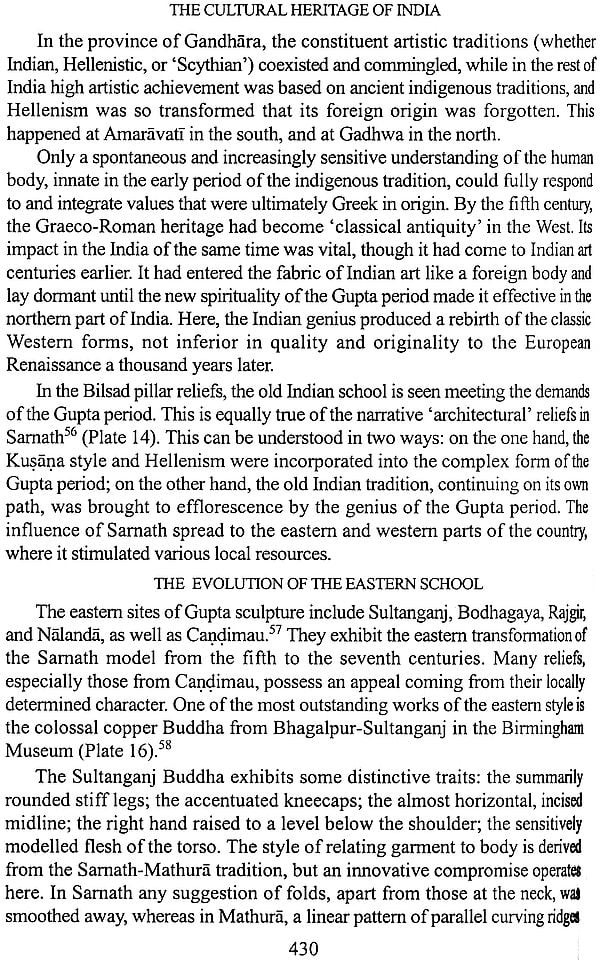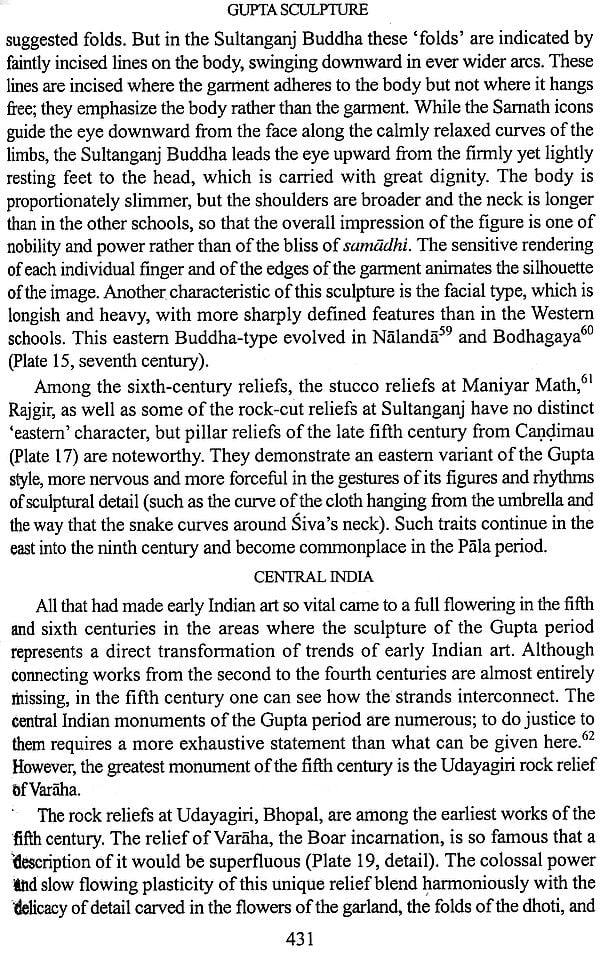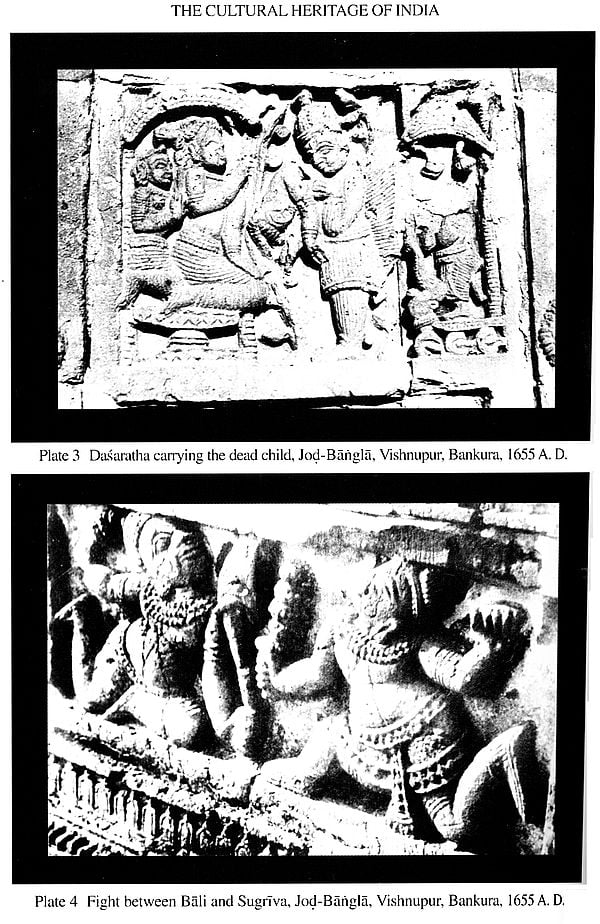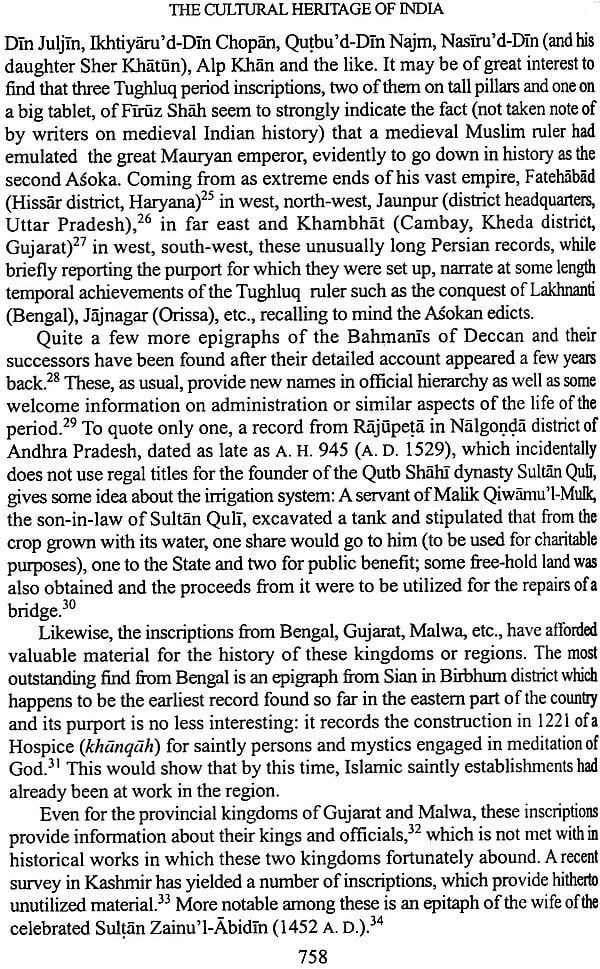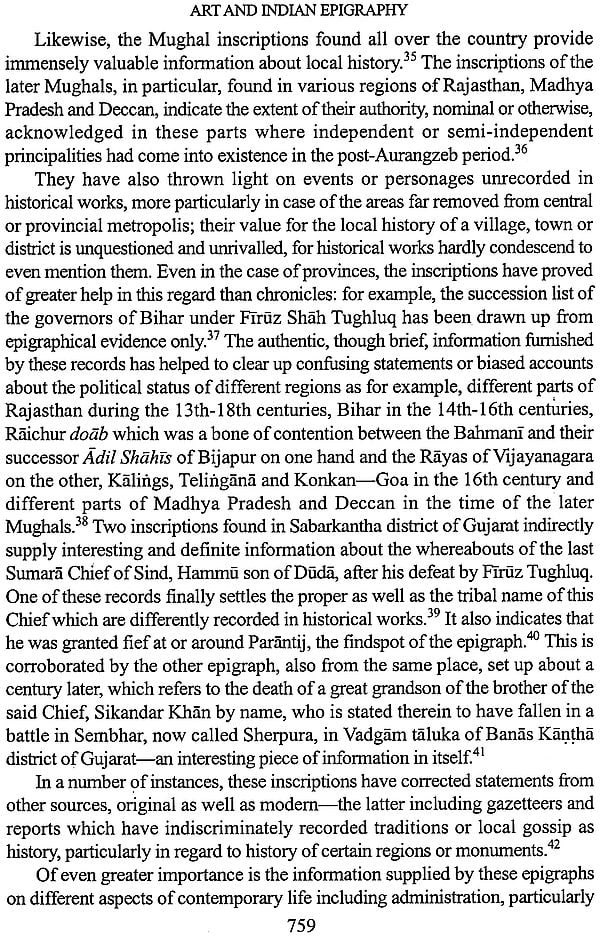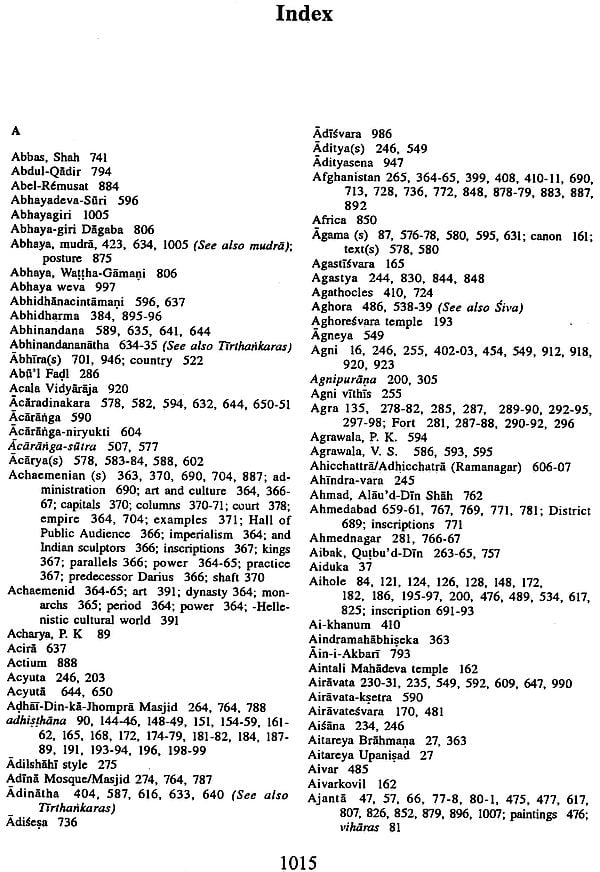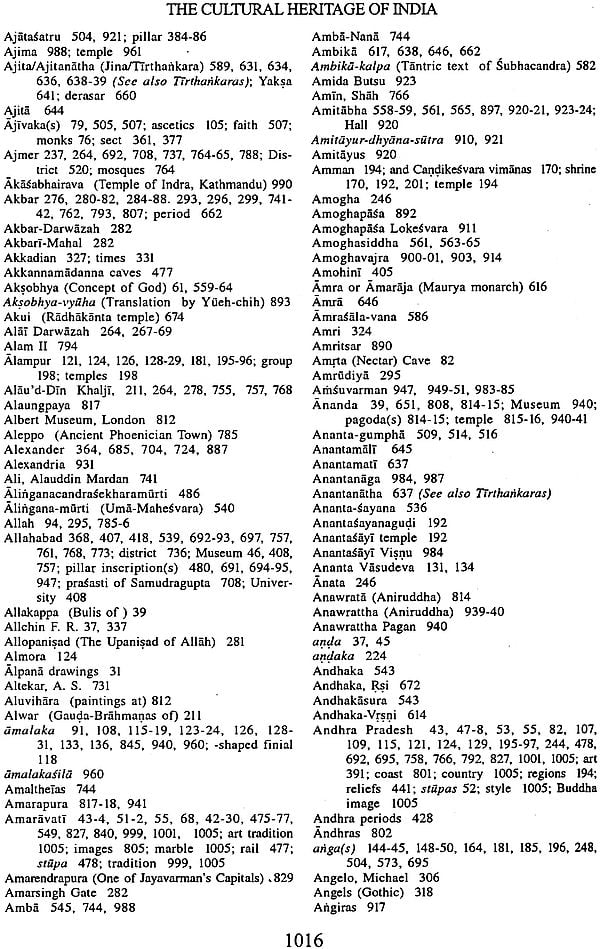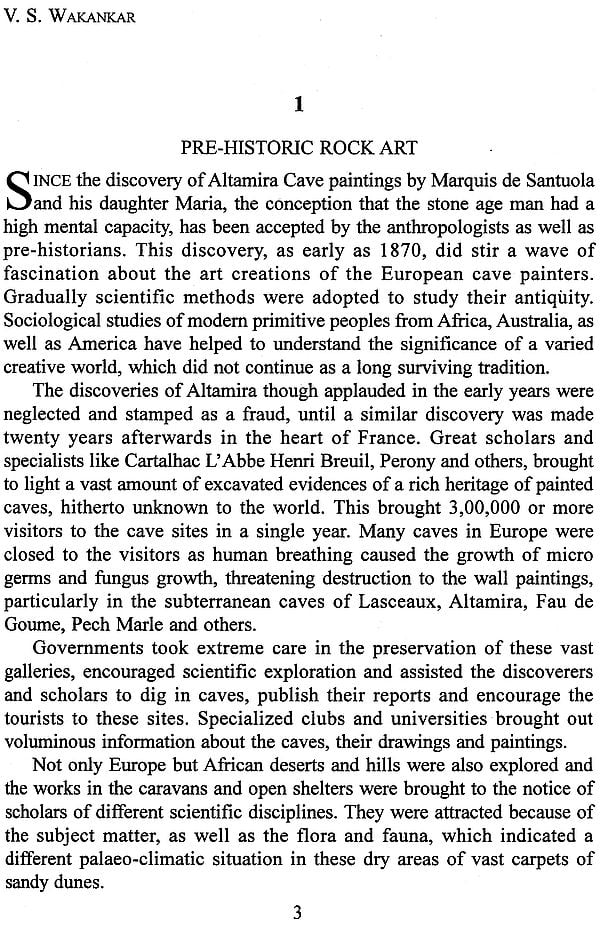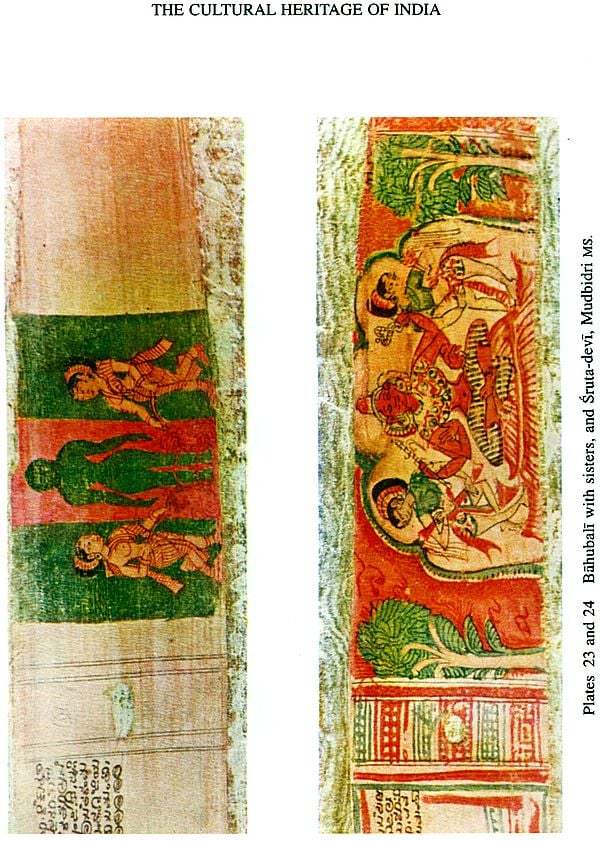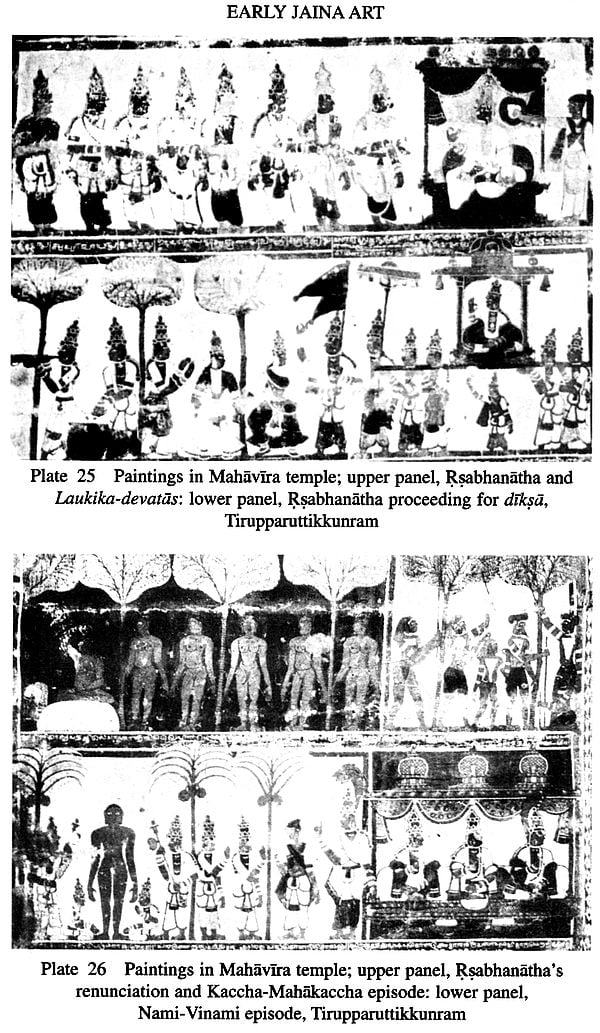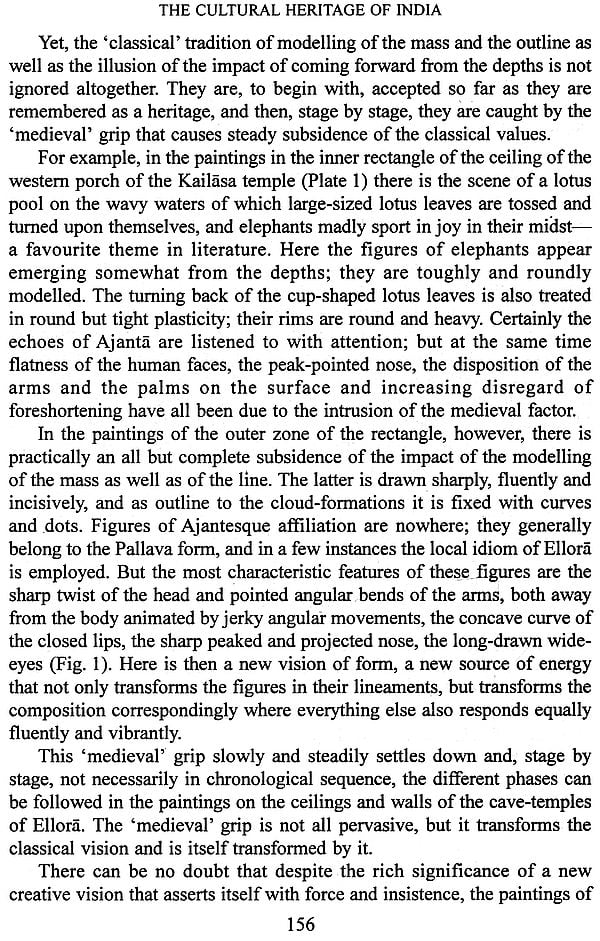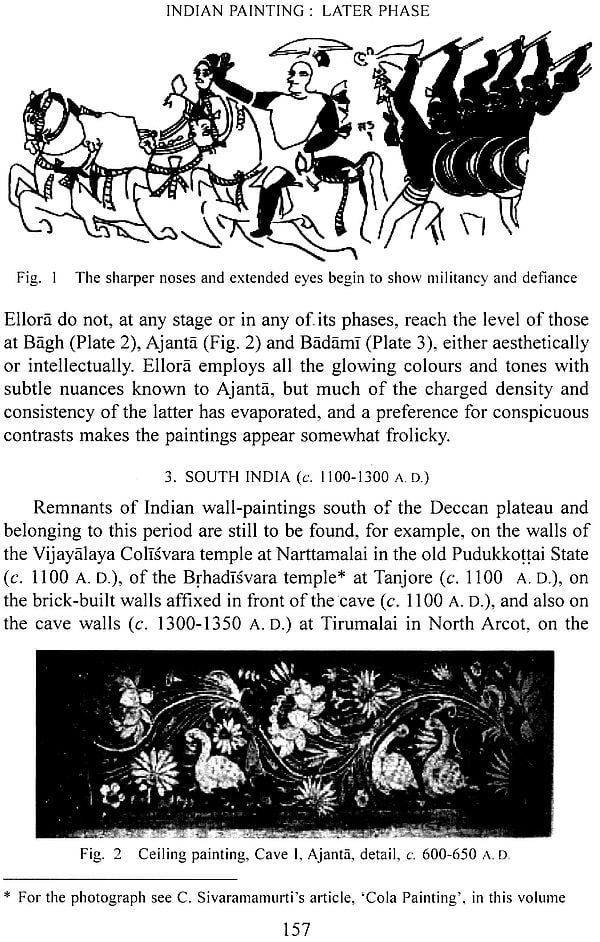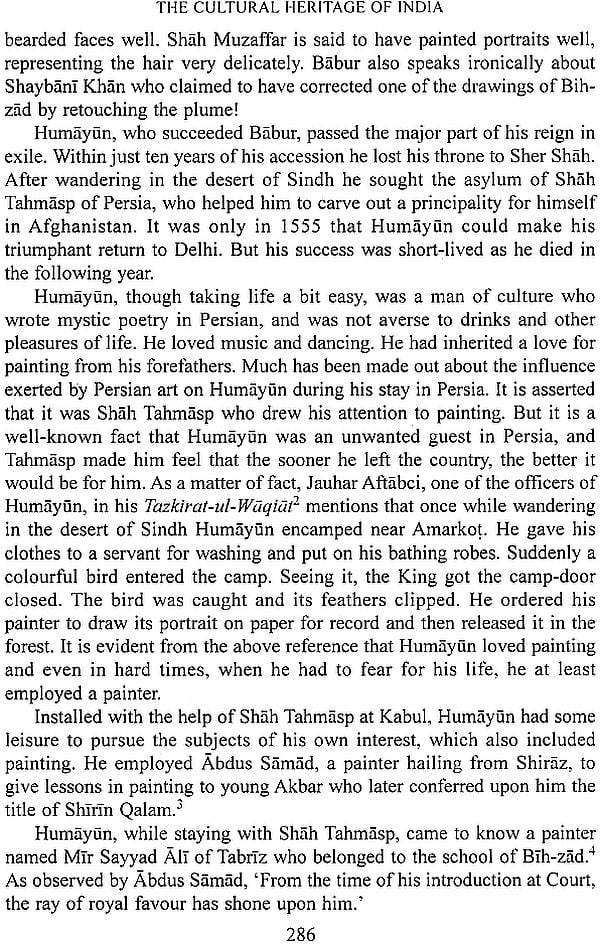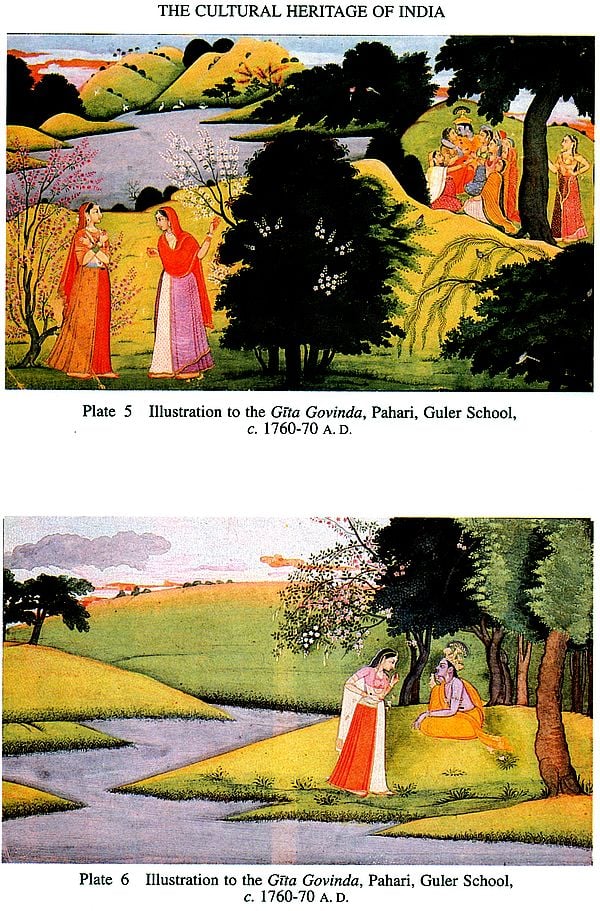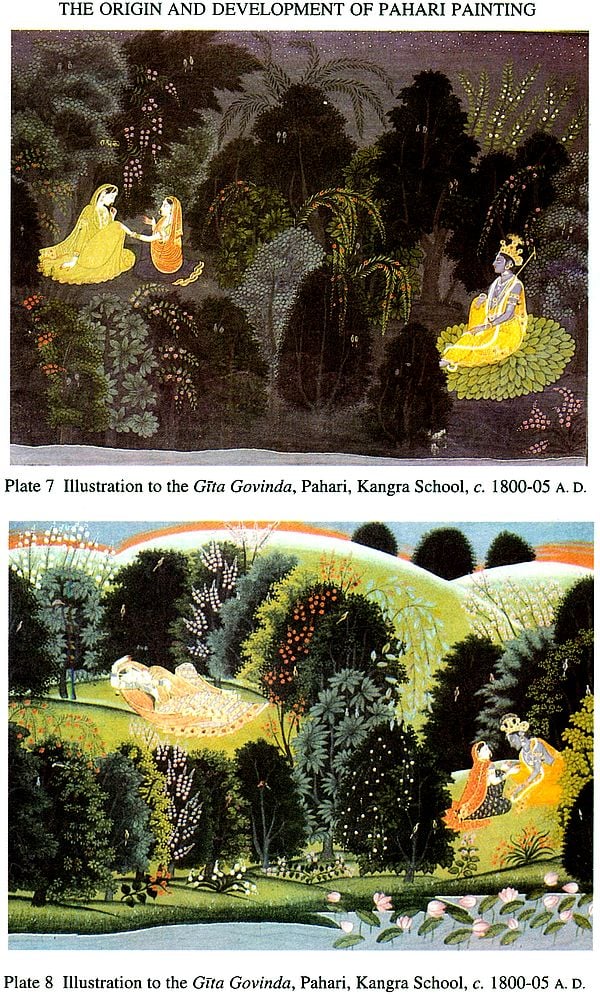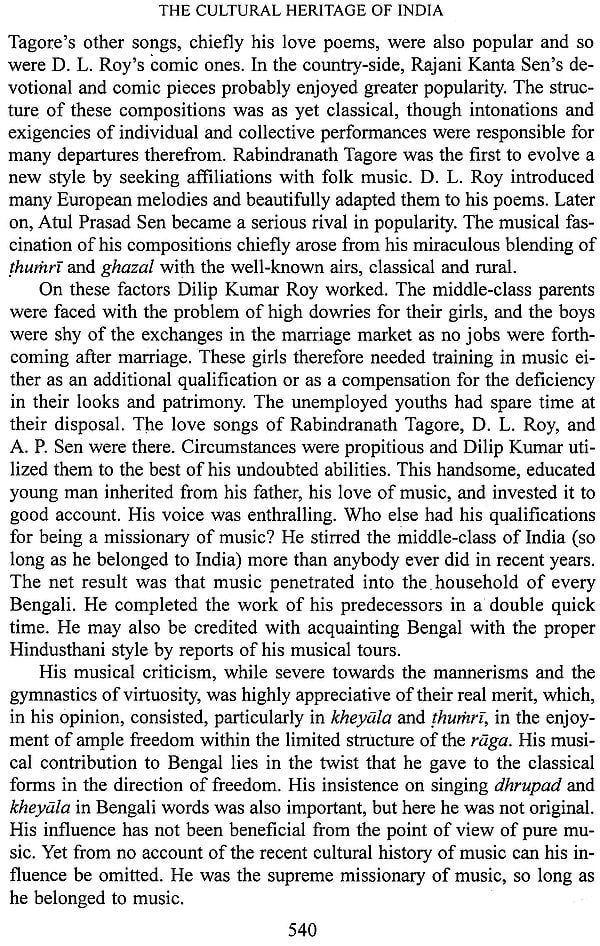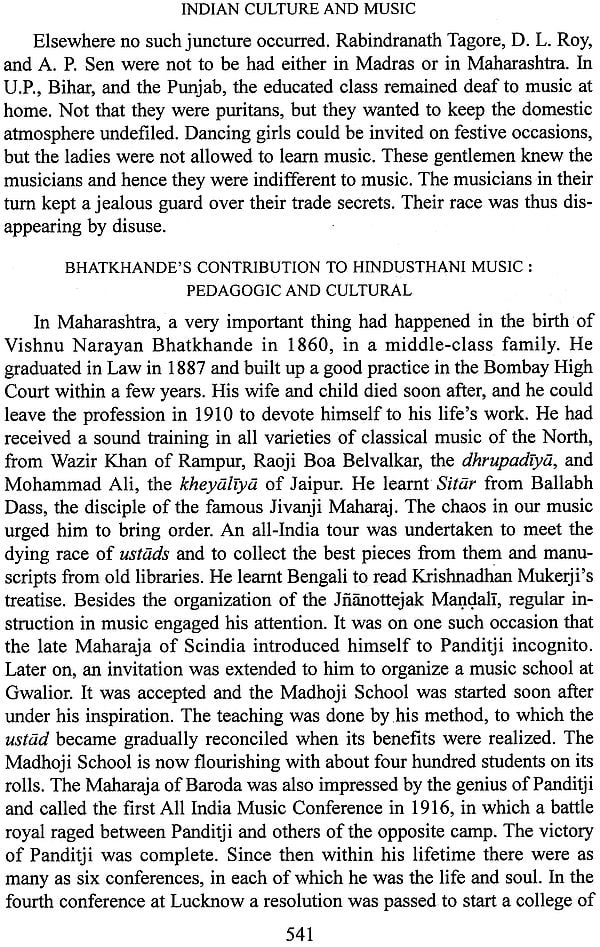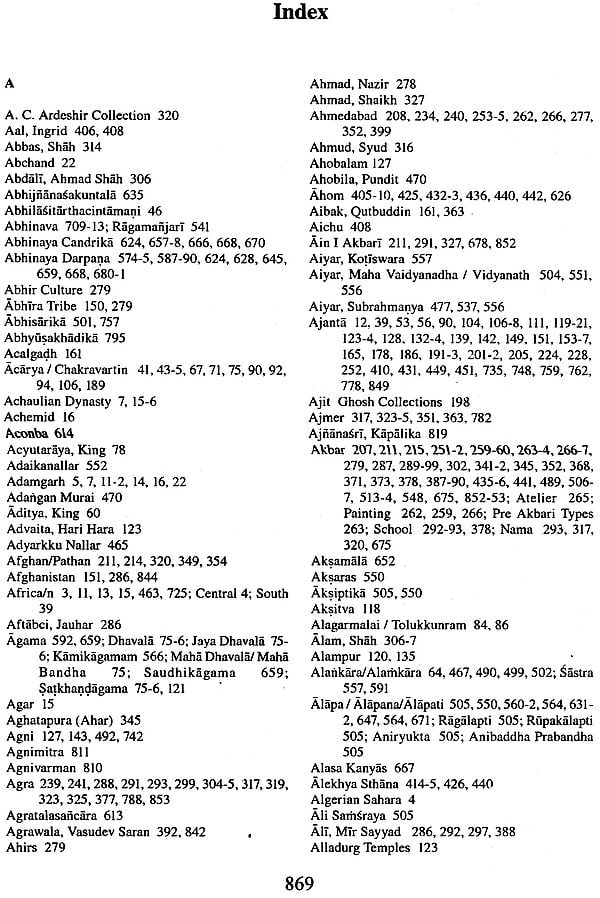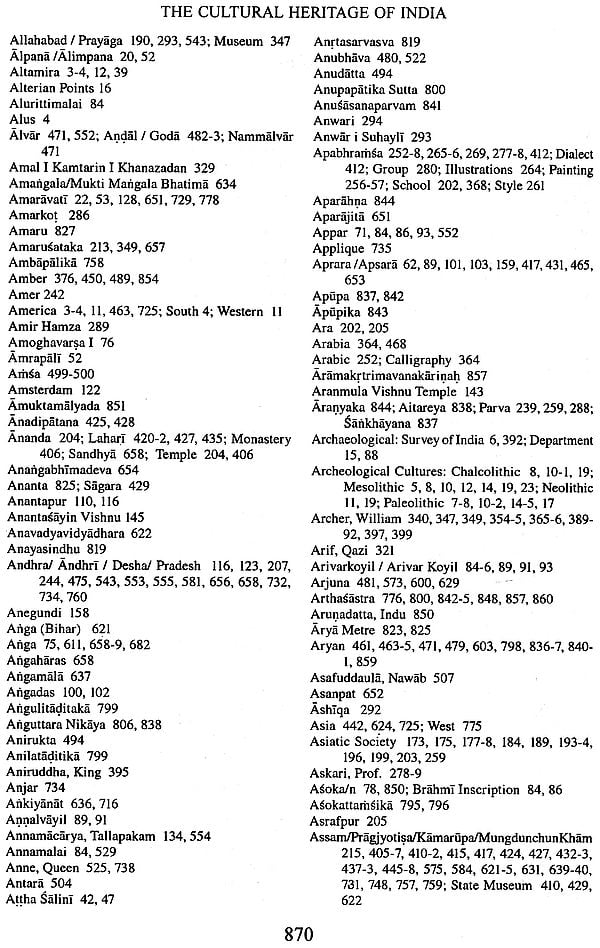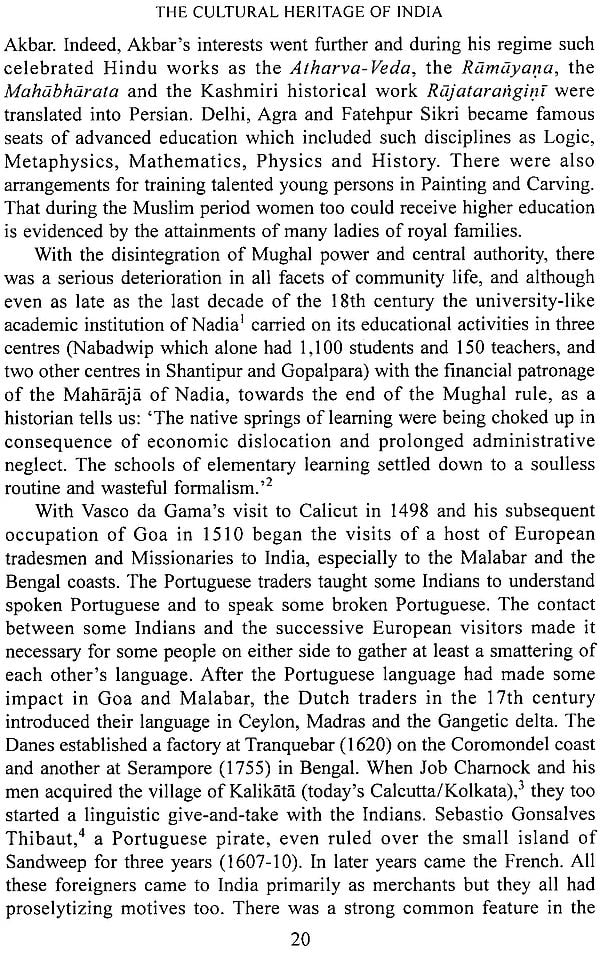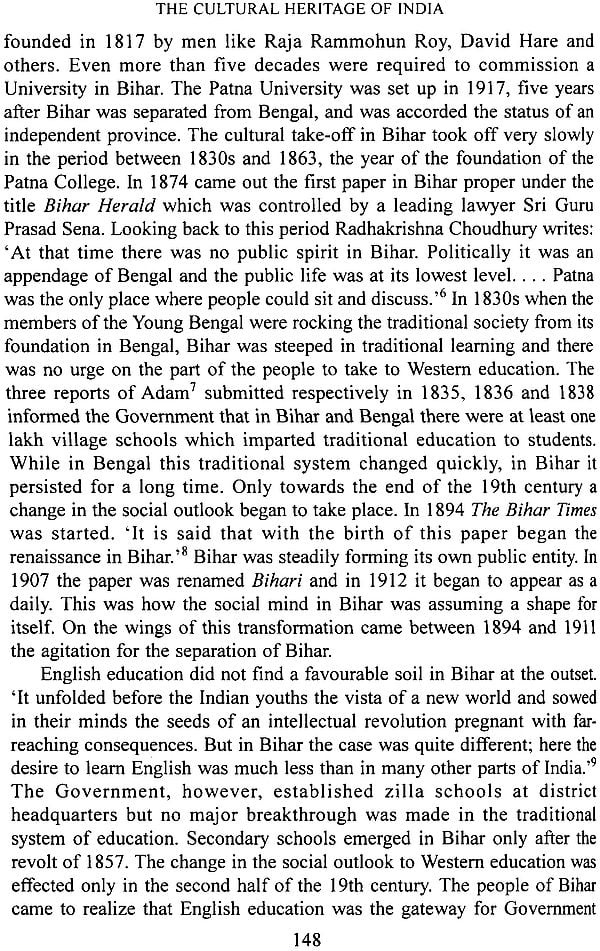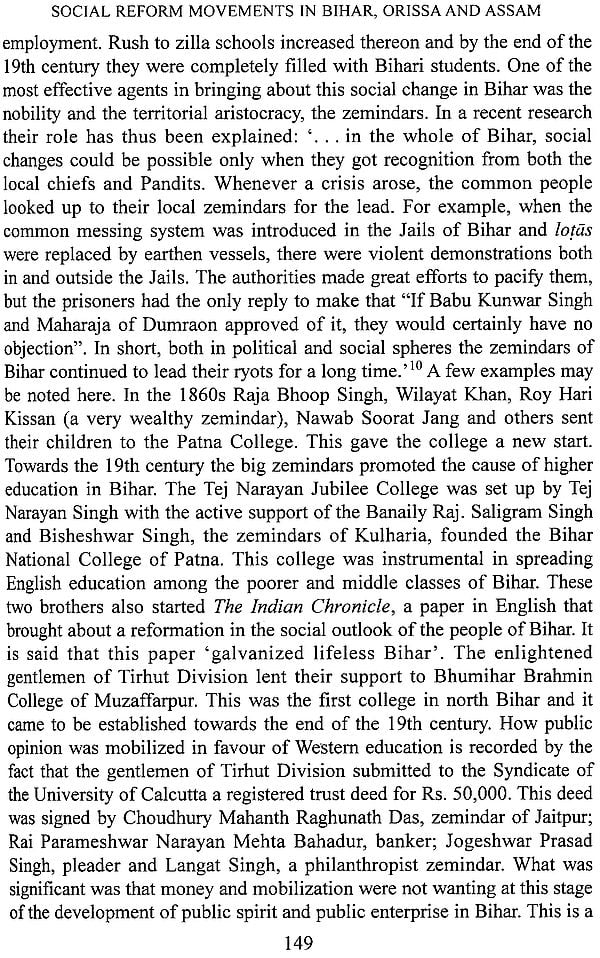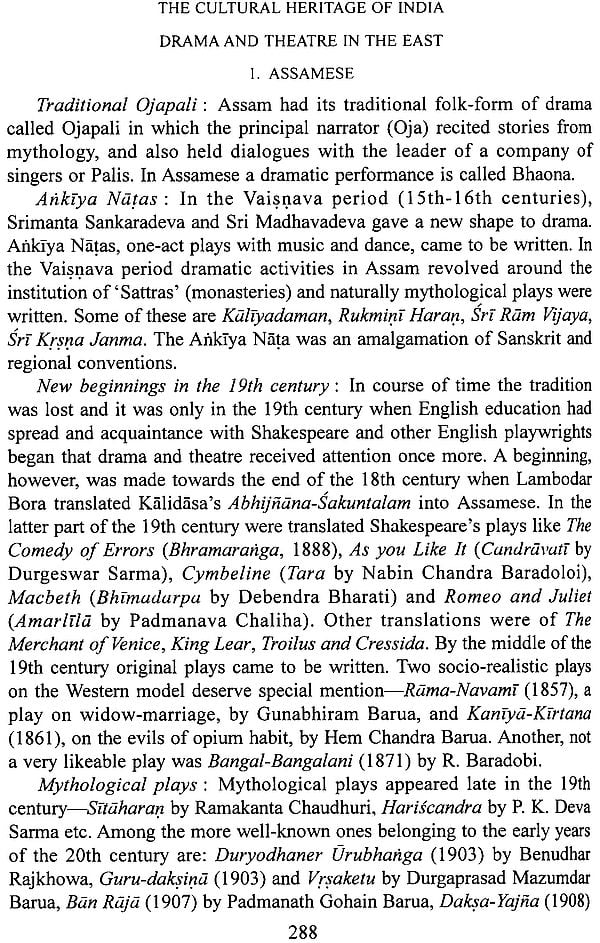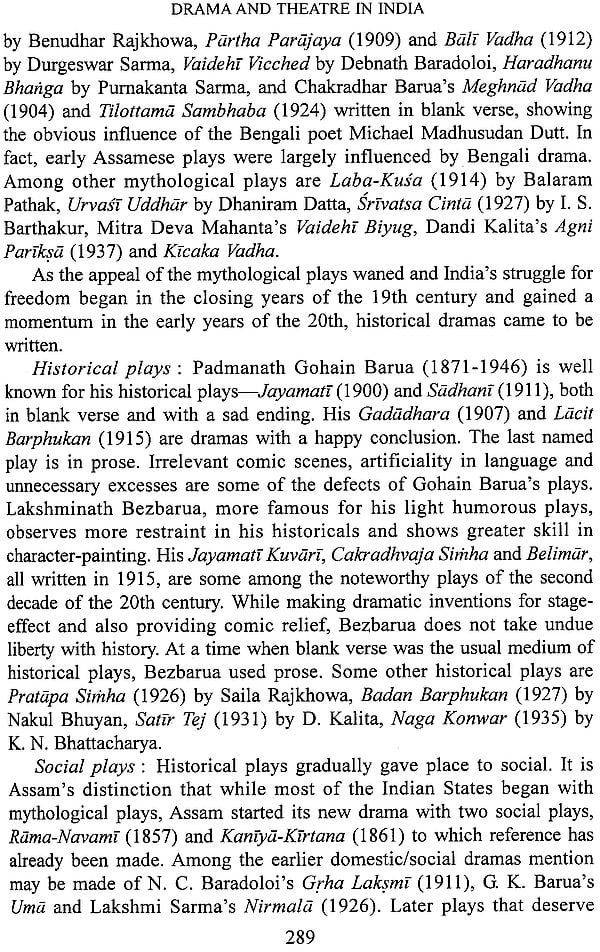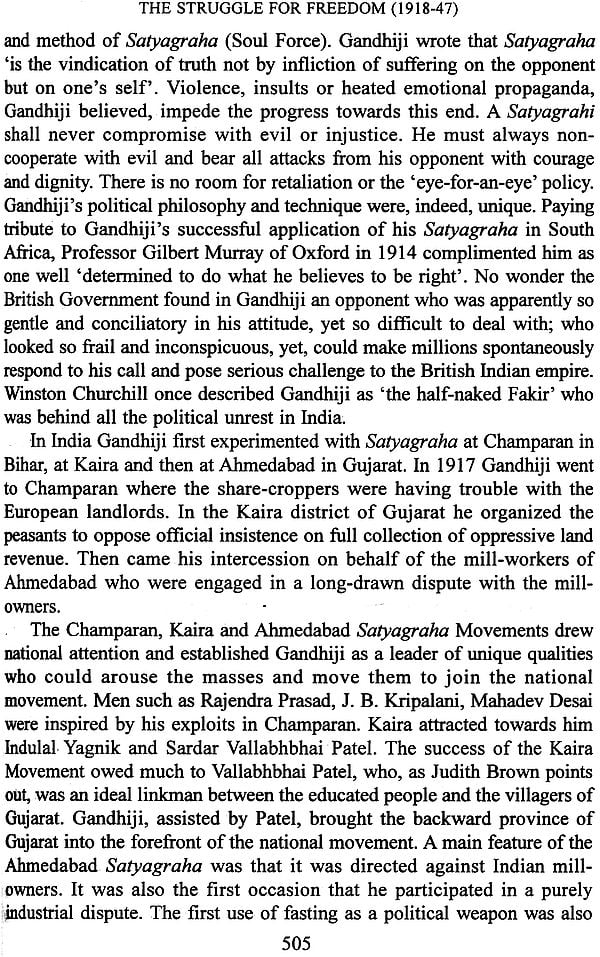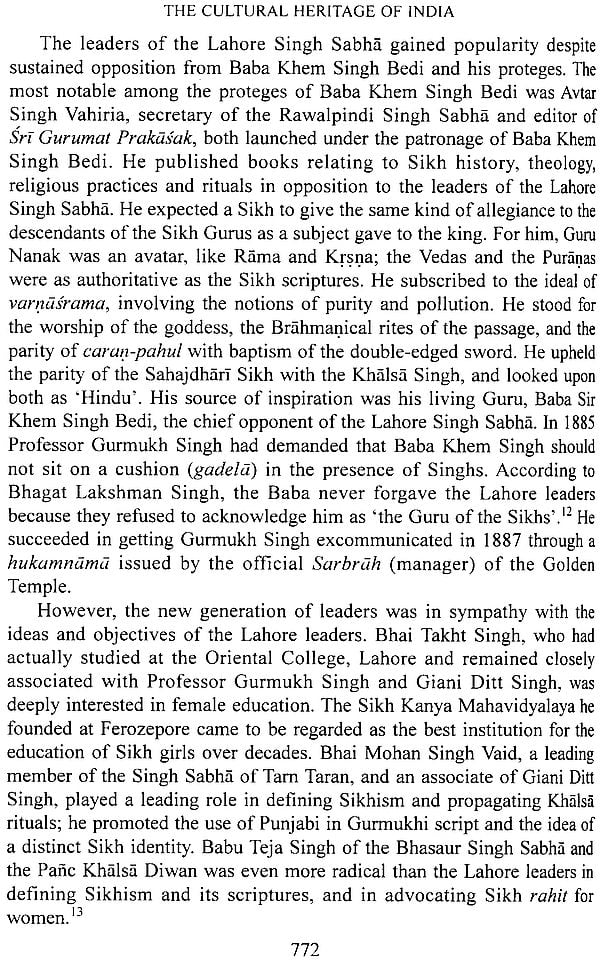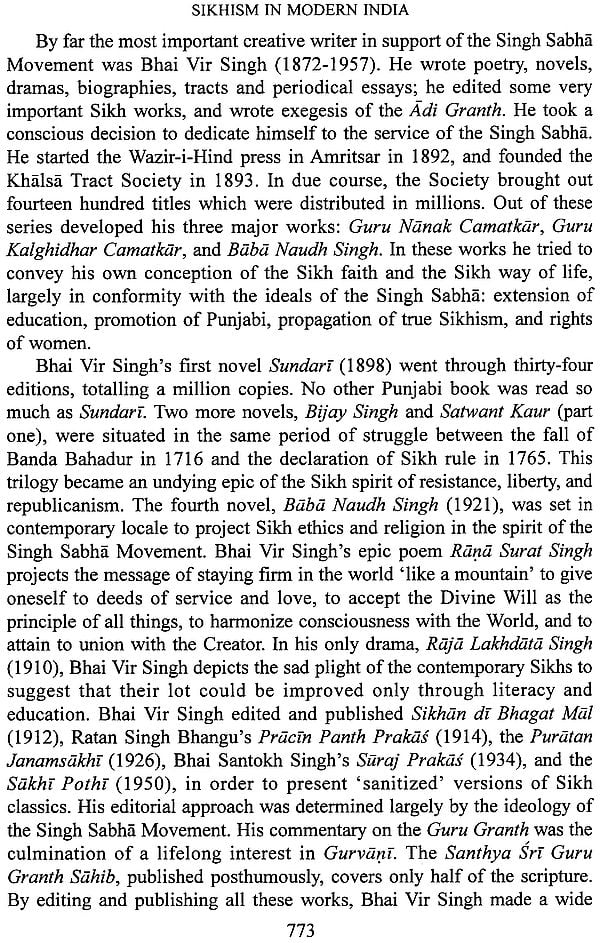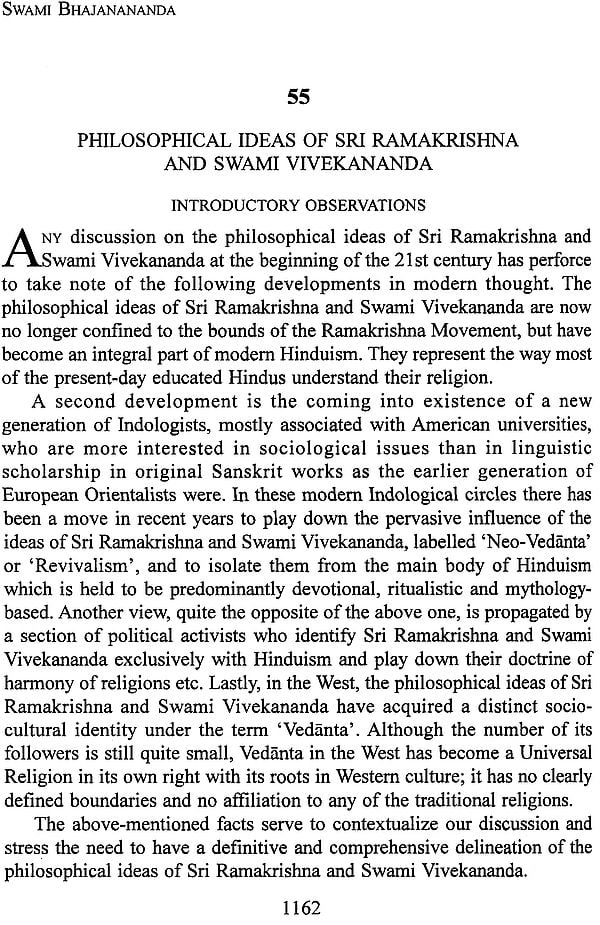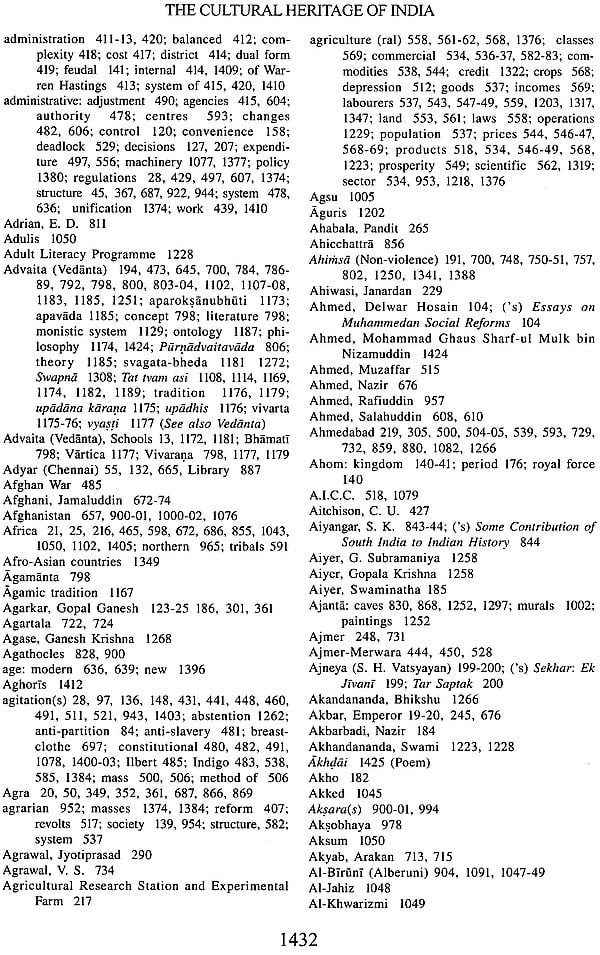
The Cultural Heritage of India (Set of 9 Volumes)
Book Specification
| Item Code: | NAF605 |
| Author: | Various Authors |
| Publisher: | Ramakrishna Mission Institute of Culture |
| Language: | English |
| Edition: | 2013 |
| ISBN: | 8185843015 |
| Pages: | 8034 |
| Cover: | Hardcover |
| Other Details | 10.0 inch x 7.5 inch |
| Weight | 16.50 kg |
Book Description
Volume I (The Early Phases: Prehistoric, Vedic and Upanisadic, Jaina and Buddhist)
Introduction:Dr. Sarvepalli Radhakrishnan
ISBN:8185843023
The Ramakrishna mission established this Institute of Culture in 1938 in fulfillment of one of the projects to commemorate the Birth Centenary of Sri Ramakrishna (1936). At the same time the institute was vested with the entire rights of The Cultural Heritage of India. This publication is thus one of the major responsibilities of the Institute; it also serves to fulfil a primary aim of the Institute, which is to promote the study, interpretation, and dissemination of the cultural heritage of India.
The first edition of The Cultural Heritage of India, in three volumes and about 2,000 pages, the work of one hundred distinguished Indian scholars, was published in 1937 by the Sri Ramakrishna Birth Centenary Publication Committee as a Birth Centenary memorial. This work Presented for the first time a panorama of the cultural history of India, and it was immediately acclaimed as a remarkable contribution to the cultural literature of the world. This edition was sold out within a few years, and the work had long been out of print, when considering the question of the second edition, it was felt that, instead of reprinting the work in its original form, advantage should be taken of the opportunity to enlarge the scope of the work. It was decided to make it more comprehensive, more authoritative, and adequately representative of different aspects of Indian thought, and, at the same time, thoroughly to revise the old articles to bring them up to date.
According to the new scheme drawn up on this basis, the number of volumes has been increased. The plan of arrangement has been improved by grouping the topics in such a way that each volume may be fairly complete and fulfil the requirements of those interested, with separate pagination, bibliography, and index. Since due regard will be paid to historicity and critical treatment, it is hoped that this work will provide a useful guide to the study of the complex pattern of India's cultural history.
The distinguished band of scholars who have co-operated so ably in this task have done their work as a labour of love in a spirit of service to scholarship and world understanding. Equally essential to the success of the undertaking was the assistance of Government of India who made a generous grant towards the cost of publication. Without this dual co-operation, it would have been impossible to set out on a venture of this magnitude; and to the contributors as well as to the Government of India the Institute therefore expresses its deepest gratitude.
| Publisher's Note | vii | |
| The spirit of India | xxi | |
| Rabindranath Tagore | ||
| Introduction of the first edition | xxiii | |
| Dr. Sarvepalli Radhakrishnan | ||
| Editors Preface | xxxvii | |
| I | Suniti Kumar Chatterji, M.A., D.Lit. | |
| II | A.D. Pusalker, M.A., LL.B., PH.D. | |
| III | Nalinaksha Dutt, M.A., B.L., PH.D., D. Lit. | |
| | ||
| | ||
| 1 | The Geographical background of Indian culture | 3 |
| Nirmal Kumar Bose, M.SC., F.N.I. Reader in Anthropo-Geography, Calcutta University | ||
| 2 | Race and race movements in India | 17 |
| Sasanka Sekhar sarkar, D.SC. Lecturer in Physical Anthropology, University College of Science, Calcutta | ||
| 3 | Regional structure of India in relation to language and History | 33 |
| Jay Chandra Narang; Vidyalankara Formerly Honorary Professor of Ancient Indian History and Culture, Bombay University, and Secretary, Bharatiya Itihasa Parisad | ||
| 4 | Linguistic Survey of India: Languages and scripts | 53 |
| Suniti Kumar Chatterji, M.A. D.Lit. Chairman, Legislative Council, West Bengal, and formerly Khaira Professor of Indian Linguistics and Phonetics, Calcutta University | ||
| 5 | Contributions from different language- Culture groups | 76 |
| Suniti Kumar Chatterji, M.A., D.Lit. | ||
| | ||
| | ||
| 6 | The Stone Age in India | 93 |
| I | Nirmal Kumar Bose, M.Sc., F.N.I. | |
| II | Dharani Sen, M.SC. Lecturer in Prehistoric Archaeology, Department of Anthropology, University College of Science, Calcutta | |
| 7 | Indus Valley Civilization | 110 |
| Madho Sarup Vats, M.A. Formerly Director General of Archaeology in India, New Delhi | ||
| 8 | The Origin of the Indo-Aryans | 129 |
| Bata Krishna Ghosh, D.Phil., D.Litt. Formerly Lecturer in Philology, Calcutta University | ||
| 9 | Cultural Interrelation Between India and the outside world before Asoka | 144 |
| A. D. Pusalker, M.A., LL.B., Ph.D. Formerly Assistant Director, and Head of the Department of Sanskrit, Bharatiya Vidya Bhavan, Bombay | ||
| | ||
| | ||
| 10 | The Religio- Philosophic culture of India | 163 |
| T. M. P. Mahadevan, M.A., Ph.D. Professor and Head of the Department of Philosophy, Madras University | ||
| 11 | The Vedas and their religious teachings | 182 |
| Swami Sharvananda | ||
| 12 | Vedic Culture | 199 |
| C. Kunhan Raja, B.A., D.Phil.Professor of Sanskrit, Andhra University, Waltair | ||
| 13 | Vedic Society | 221 |
| A.S. Altekar, M.A., LL.B., D.Litt.Director, K. P. Jayaswal Research Institute, Patna, and formerly Professor and Head of the Department of Ancient Indian History and Culture, Patna University | ||
| 14 | Vedic Rituals | 234 |
| V.M. Apte, M.A., Ph.D.Director of Research, Veda Samsodhana Mandala, Bombay, and formerly Head of the Department of Sanskrit, Saugar University | ||
| 15 | The Vedangas | 264 |
| V.M. Apte, M.A., M.A., PH. D. | ||
| 16 | Yaska and panini | 293 |
| Vasudeva Sharma Agrawala, M.A. PH.D., D.Litt. Professor and Head of the Department of Art and Architecture, Banaras Hindu University | ||
| 17 | Vedic Exegesis | 311 |
| Shrimat Anirvan | ||
| 18 | The dawn of Indian philosophy | 333 |
| Swami Ghanananda Head of the Ramakrishna Vedanta Centre, London | ||
| 19 | A Bird's -eye view of the Upanisads | 345 |
| Swami Ghanananda General Secretary, Ramakrishna Math and Mission, Belur, Howrah | ||
| 20 | Mystical approach in the Upanisads | 366 |
| Mahendranath Sircar, M.A., PH.D.Formerly Professor of Philosophy, Presidency College, Calcutta | ||
| 21 | Upanisadic Mediatation | 375 |
| Swami Gambhirananda President, Advaita Ashrama, Mayavati, Almora | ||
| | ||
| | ||
| 22 | Sramana or non-Brahmanical sects | 389 |
| Pandit N. Aiyaswami Sastri Head of the Indo-Tibetan Studies and Buddhism, Visva- Bharati, Santinikatan | ||
| 23 | Jainism: Its History, Principles, and Precepts | 400 |
| Hiralal Jain, M.A., LL.B., D. Litt. Director, Institute of Post- Graduate Studies and Research in Prakrit, Jainology, and Ahimsa, Muzaffarpur, Bihar | ||
| 24 | Jainism: Its Philosophy and Ethics | 414 |
| Appaswami Chakravrti, M.A. Formerly Prinicipal, Government College, Kumbakonam | ||
| 25 | Some fundamental principles of Jainism | 434 |
| Pandit Sukhalal Sanghvi, D. Litt. Formerly Professor and Head of the Department of Jaina Sastra, Banaras Hindu University | ||
| 26 | Some Aspects of early Buddhism | 442 |
| Beni Madhab Barua, M.A., D.Lit., Tripitakacarya Formerly Professor of Pali and Lecturer in Sanskrit and Ancient Indian History and culture, Calcutta University | ||
| 27 | Schools and sects of Buddhism | 456 |
| I | P. V. Bapat, M.A., A.M., PH.D. Professor of Buddhist Studies, Delhi University | |
| II-IV | Nalinaksha Dutt, M.A., B.L., PH.D., D.Lit. Professor and Head of the Department of Pali, Calcutta University | |
| 28 | Emergence of Mahayana Buddhism | 503 |
| Nalinaksha Dutt, M.A., B.L., PH.D., D.Lit. | ||
| 29 | Mahayanic pantheon | 518 |
| Beonoytosh Bhattacharyya, M.A., PH.D. Formerly Director, Oriental Institute, Baroda | ||
| 30 | Karma | 537 |
| Bimala Churn Law, M.A., B.L., PH.D., D.Litt. | ||
| 31 | Nirvana | 547 |
| Bimala Churn Law., M.A., B.L., PH.D., D.Litt. | ||
| 32 | Buddhism in relation to Vedanta | 559 |
| Vidhushekhara Bhattacharya, Sastrin, Mahamahopadhyaya Formerly Asutosh Professor and Head of the Department of Sanskrit, Calcutta University | ||
| 33 | Buddhism in Indian life and Thought | 575 |
| Satkari Mookerjee, M.A., Ph.D. Director, Nava Nalanda Mahavihara, Nalanda, and formerly Asutosh Professor and Head of the Department of Sanskrit, Calcutta University | ||
| Bibliography | 601 | |
| Index | 615 |
Author:Ed. Dr. C. P. Ramaswami Aiyar
ISBN: 8185843031
Volume II of this literary lour-de-force comprises studies in the Itihasas, Puranas, Dharma and other Sastras. This volume will be specially significant in the light of present-day Indian conditions and would be invaluable for a proper solution of the problem of national integration, which is now exercising the minds of Indian leaders. The conviction of the immanence of the Supreme Being in every all mate entity, leading to a realization of the dignity of each individual is the message taught by this volume and should be of crucial importance for creating those bonds of love and service, which are indispensable for today and tomorrow. From another point of view, the contributions contained in this volume would be of import, as they would put in proper perspective the values emphasized in modern civilization. India, while not disparaging economic advancement or social utility, has always stressed the importance of human personality against all challenges to it. Neither stark individualism nor collectivization can solve the problems confronting humanity today, and this lesson is specially conveyed by the Itihasas and the Puranas.
The Amarakosa, describing the main characteristics of the Puranas, specially points out that the commands of the Vedas are like those of a master (Prabhu Samhita) whereas the teachings of the Itihasas and Puranas may be compared with the advice and counsel of friends ( Suhrt Samhita).
The Epic Age during which the Ramayana and the Mahabharata received their final shape was a period of racial and ideological conflict; and, historically speaking, this period produced the two great Epics as well as the Manu Dharma-Sastra, the Codes of Yajnavalkya, Narada, and Parasara and the earlier Puranas.
| Publisher's Note | vii | |
| Introduction | xxi | |
| Dr. C. P. Ramaswami Aiyar | ||
| | ||
| | ||
| 1 | Classical Sanskrit as a vehicle of Indian culture | 3 |
| K. K. Handique, M.A. (Cal. Et. Oxon) Vice- Chancellor, Gauhati University | ||
| 2 | The Ramayana: Its History and Character | 14 |
| A.D. Pusalker, M.A., LL. B., PH.D. Formerly Assistant Director, and Head of the Department of Sanskrit, Bharatiya Vidya Bhavan, Bombay | ||
| 3 | The Culture of the Ramayana | 32 |
| Swami Nihsreyasananda Ramakrishna Mission | ||
| 4 | The Mahabharata: Its history and character | 51 |
| I | P. L. Vaidya, M.A., PH.D.Mayurbhanj Professor of Sanskrit and Pali, Hindu University, Banaras | |
| II | A.D. Pusalker, M.A., LL. B., PH.D. | |
| 5 | The Mahabharata: Some aspects of its culture | 71 |
| Hemchandra Raychaudhuri, M.A., PH.D., F.R.A.S.B.Carmichael Professor of Ancient Indian History and Culture, Calcutta University | ||
| 6 | Religion and Philosophy of the Epics | 80 |
| A. P. Karmarkar, M.A., LL.B., PH.D. Professor of Indian History and Ancient Indian Culture, Ramnarain College, Bombay; University Teacher, Bombay University | ||
| 7 | The Influence of the Indian life and literature | 95 |
| Nilmadhav Sen, M.A., D.Litt. Deccan School of Linguistics, Poona | ||
| 8 | The Ramayana and the Mahabharata in south- East Asia | 119 |
| Bijan Raj Chatterjee, PH.D., (Lond), D.Litt. (Punjab) Principal, Meerut College, U. P. | ||
| | ||
| | ||
| 9 | The Bhagavad-Gita: A General Review of its History and character | 135 |
| S. K. Belvalkar, M.A., PH.D. (Harvard) Professor of Sanskrit (Emeritus), Deccan College, Poona, and Banaras Hindu University | ||
| 10 | The teachings of the Bhagavad-Gita | 158 |
| Swami Suddhananda Formerly President, Ramakrishna Mission | ||
| 11 | The Religion of The Bhagavad-Gita | 166 |
| Swami Tapasyananda President, Ramakrishna Ashrama, Trivandram, Kerala | ||
| 12 | The Bhagavad-Gita: Its synthetic Character | 180 |
| Swami Viresyananda General Secretary, Ramakrishna Mission | ||
| 13 | The Bhagavad-Gita: Its Early Commentaries | 195 |
| Mahendra Nath Sarkar, M.A., PH.D.Formerly Professor of Philosophy, Presidency College, Calcutta | ||
| 14 | Imitations of the Bhagavad-Gita and later Gita Literature | 204 |
| Parameswara Aiyar, B.L. Retired Sub-judge | ||
| | ||
| | ||
| 15 | Indian Mythology | 223 |
| R.N. Dandekar, M.A., PH.D. Bhandarkar Oriental Research Institute, Poona | ||
| 16 | The Puranas | 240 |
| Rajendra Chandra Hazra, M.A., PH.D., D. Litt. Associate Professor of Smrti and Puranas (Research Departmental, Sanskrit College), Calcutta | ||
| 17 | The Upapuranas | 271 |
| Rajendra Chandra Hazra, M.A., PH.D., D. Litt. | ||
| 18 | The Ethics of the Puranas | 287 |
| C.S. Venkateswaran, M.A., PH.D. Head of the Department of Sanskrit, Annamalai University | ||
| | ||
| | ||
| 19 | The Dharma-sutras and the Dharma sastras | 301 |
| V. A. Ramaswami Sastri, M.A. Head of the Department of Sanskrit, Annamalai University | ||
| 20 | The Smartis: their outlook and character | 312 |
| T. R. Venkatarama Sastri, C.I.E. Formerly Advocate-General, Madras | ||
| 21 | The Manu samhita | 335 |
| V. Raghavan, M.A., PH.D. Professor of Sanskrit, Madras University | ||
| 22 | The Nibandhas | 364 |
| Dinesh Chandra Bhattachrya, M.A. Formerly Professor, Mohsin College, Hooghly | ||
| 23 | Penances and vows | 381 |
| Dinesh Chandra Bhattachrya, M.A. | ||
| 24 | The Hindu Sacraments (Samskaras) | 390 |
| Principal, Banaras Hindu University | ||
| 25 | The Historical Background and theoretic basis of Hindu law | 414 |
| P. B. Gajendragadkar Judge, Spureme Court of India | ||
| 26 | The Hindu Judicial system | 434 |
| P. B. Mukharji Judge, Calcutta High Court | ||
| | ||
| | ||
| 27 | A general survey of the literature of Artha- Sastra and Niti -Sastra | 451 |
| I | U.N. Ghoshal, M.A. PH.D. Formerly Professor of History, Presidency College, Calcutta | |
| II | V. Radhagovinda Basak, M.A., PH.D. Formerly Professor, Presidency College, Calcutta | |
| 28 | Political Organization: The Monarchical States | 465 |
| U.N. Ghoshal, M.A., PH.D. | ||
| 29 | Political Organization: Republics and mixed constitutions | 480 |
| U.N. Ghoshal, M.A., Ph.D. | ||
| 30 | The state in relation to religion in ancient India | 485 |
| K. A. Nilakanta Sastri, M.A. Formerly Professor of Indian History, Madras University | ||
| 31 | Some Aspects of social and Political evolution in India | 493 |
| C. P. Ramaswami Aiyar, B.A., B.L., LL.D., D.Litt. Formerly Vice- Chancellor, Banaras Hindu University | ||
| 32 | Some basic ideas of Political Thinking in ancient India | 509 |
| Benoy Kumar Sircar, M.A., Dr. H. C. Formerly Professor, Calcutta University | ||
| 33 | The Tiru-K- Kural | 530 |
| C. Rajagopachari, Bharat Ratna, B.A., B.L. Formerly Governor General of India | ||
| 34 | The Indian organization: An anthropological study | 536 |
| Dr. (Mrs.) Iravati Karve Deccan College, Poona | ||
| 35 | Some of social life in ancient India | 557 |
| H. C. Chakladar, M.A. Formerly Head of Anthropology, Calcutta University | ||
| 36 | Monasticism in India | 582 |
| Sukumar Datta, M.A., PH.D. Formerly Reader in English, Delhi University | ||
| 37 | Some Aspects of the Position of Women in ancient India | 594 |
| D.C. Ganguly, M.A., D.Phil. Curator, Victoria Memorial, Calcutta | ||
| 38 | Some reflections on the ideals of Indian Womanhood | 601 |
| Roma Chaudhury, M.A., D.Phil. Principal, Lady Brourne College, Calcutta | ||
| 39 | Foreign elements in India population | 610 |
| Mrs. Debala Mitra, M.A. Assistant Superintendent of Archaeology, Indian Museum, Calcutta | ||
| 40 | Some Experiments in Social reform in mediaeval India | 627 |
| P. N. Chopra, M.A., PH.D.,Member, Board of Editors, 'History of freedom Movement of India' | ||
| 41 | Ancient Indian Education | 640 |
| I | Radha Kumud Mookerji, M.A., PH.D., Formerly Vice- Chancellor, Emeritus Professor of History, Lucknow University | |
| II- III | U.N. Ghoshal, M.A., PH.D. | |
| 42 | Economic Ideas of the Hindus | 655 |
| A.D. Pusalker, M.A., LL.B., PH.D. | ||
| 43 | Guilds and other corporate bodies | 670 |
| U.N. Ghoshal, M.A., PH.D. | ||
| Bibliography | 681 | |
| Index | 695 |
Author:Ed.Haridas Bhattacharyya
ISBN:818584304X
THE PRESENT volume tells the story of the attempts made by India down the ages to grapple with the fundamental problems of life and thought. Philosophy in India began with a quest after the highest truth-truth not as mere objective certitude, but as being closely linked with the development of personally and leading to the attainment of the highest freedom, bliss, and wisdom. It demanded, therefore, not only a philosophical discipline of reasoning, but also a discipline of conduct and the control of emotions and passions.
THUS THE synthesis between deep philosophical analysis and lofty spiritual discipline is an abiding feature of Indian philosophy, and in this its outlook is entirely different from that of western philosophy.
IT IS hoped that this volume will serve not only to make plain the spiritual aspirations of an ancient nation, but also to show the relevance of those aspirations to the modern world and thus forge a powerful link in the chain of human fellowship and universal concord.
| Publisher's Note | v | |
| Preface | xiii | |
| 1. | Introduction Surrendranath Dasgupta, M.A., Ph.D., D.Litt. Formerly King George V Professor of Philosophy, Calcutta University
| 3 |
| THE PHILOSOPHICAL SYSTEMS | ||
| 2. | Rise of The Philosophical Schools T.R.V. Murti, M.A., D.Litt., Vyakaranacarya, Vedantasastri Sayaji Rao Gaekwad Professor of Indian Civilization and Culture, Banaras Hindu University | 27 |
| 3. | The Samkhya M. Hiriyanna, M.A. Formerly Professor of Sanskrit, Maharaja's College, Mysore | 41 |
| 4. | Yoga Psychology Haridas Bhattacharyya, M.A., B.L., P.R.S., Darsanasagara Formerly Head of the Department of Philosophy, Dacca University | 53 |
| 5. | Nyaya-Vaisesika Satkari Mookerjee, M.A., Ph.D. Asutosh Professor and Head of the Department of Sanskrit, Calcutta University | 91 |
| 6. | Navya-Nyaya Janaki Vallabha Bhattacharyya, M.A., Ph.D. Lecturer in Sanskrit, Calcutta University | 125 |
| 7. | Purva-Mimamsa Pramathanath Tarkabhushan, Mahamahopadhyaya Formerly Principal, College of Oriental Learning, Banaras Hindu University | 151 |
| 8. | Materialists, Sceptics, and Agnostics Dakshina Ranjan Shastri, M.A., Ph.D., Kavyatirtha Professor of Sanskrit, Krishnagar College, Nadia
| 168 |
| THE VEDANTA | ||
| 9. | Brahma-Mimamsa Anantakrishna Sastri, Mahamahopadhyaya Formerly Lecturer in Sanskrit, Calcutta University | 187 |
| 10. | Essentials of Vedanta V. Subrahmanya Iyer, B.A. Formerly Registrar, Mysore University | 211 |
| 11. | Philosophy of The Advaita K.A. Krishnaswami Iyer, B.A. Formerly Headmaster, Government High School, Tumkur | 219 |
| 12. | The Philosophy of Sankara Surendranath Bhattacharya, M.A. Professor of Sanskrit, Bihar National College, Patna | 237 |
| 13. | The Advaita and its Spiritual Significance Krishnachandra Bhattacharyya, M.A. Formerly King George V Professor of Philosophy, Calcutta University | 245 |
| 14. | Post-Sankara Advaita Dinesh Chandra Bhattacharya, Sastri, Tarka-Vedanta-tirtha Formerly Head of the Department of Oriental Studies, Haraganga College, Munshiganj | 255 |
| 15. | Philosophy of the Bhagavata Swami Tyagisananda Formerly President, Ramakrishna Ashrama, Bangalore | 281 |
| 16. | The Visistadvaita of Ramanuja P.N. Srinivasachari, M.A. Formerly Principal, Pachaiyappa's College, Madras | 300 |
| 17. | Madhva's Brahma-Mimamsa H.N. Raghavendrachar, M.A., Ph.D. Assistant Professor of Philosophy, Maharaja's College, Mysore | 313 |
| 18. | The Nimbarka School of Vedanta Roma Chaudhuri, M.A., D.Phil. (OXON) Principal, Lady Brabourne College, Calcutta | 333 |
| 19. | The School of Vallabha Govindlal Hargovind Bhatt, M.A. Director, Oriental Institute, M.S. University, Baroda | 347 |
| 20. | Bhedabheda School of Vedanta P.N.Srinivasachari, M.A. | 360 |
| 21. | The Acintya-Bhedabheda School Radha Govinda Nath, M.A., Vidyavacaspati Formerly Principal, Victoria College, Comilla
| 366 |
| THE RELIGIOUS PHILOSOPHIES | ||
| 22. | The Philosophy of Saivism S.S. Suryanarayana Sastri, M.A., B.Sc., Barrister-at-Law Formerly Head of the Department of Philosophy, Madras University | 387 |
| 23. | The Path of Yoga in the Gita D.S. Sarma, M.A. Formerly Principal, Vivekananda College, Madras | 400 |
| 24. | Philosophy of the Yogavasistha Bhikkan Lal Atreya, M.A., D.Litt., Darsanacarya Professor and Head of the Department of Philosophy, Banaras Hindu University | 424 |
| 25. | Philosophy of the Tantras Swami Pratyagatmananda | 437 |
| 26. | The Philosophy of Mysticism Radhakamal Mukerjee, M.A., Ph.D. Director, J.K. Institute of Sociology and Human Relations, Lucknow University | 449 |
| 27. | Philosophy in Popular Literature Atindranath Bose, M.A., P.R.S., Ph.D. Lecturer, Calcutta University
| 458 |
| THE PROBLEMS OF PHILOSOPHY | ||
| 28. | Religion of The Nyaya and Vaisesika Ganganath Jha, M.A., D.Litt., Mahamahopadhyaya Formerly Vice-Chancellor, Allahabad University | 471 |
| 29. | Nature of The Soul Anukul Chandra Mukerji, M.A. Formerly Professor and Head of the Department of Philosophy, Allahabad University | 475 |
| 30. | Nature of the Physical World Umesh Mishra, M.A., D.Litt., Mahamahopadhyaya Director, Mithila Research Institute, Darbhanga | 494 |
| 31. | Nature of Mind and its Activities P.T. Raju, M.A., Ph.D., Sastri Professor of Philosophy, Rajasthan University, Jodhpur | 507 |
| 32. | Extra-Sensory and Super conscious Experiences Swami Akhilananda President, The Vedanta Society, Providence (R.I.), U.S.A.
| 520 |
| THE PHILOSOPHICAL SCIENCES | ||
| 33. | Indian Theism Swami Hiranmayananda Secretary, Ramakrishna Mission Sevashrama, Rangoon | 535 |
| 34. | Indian Epistemology Dhirendra Mohan Datta, M.A., P.R.S., Ph.D., Pracyavidyavaridhi Professor of Philosophy, Patna College, Patna | 548 |
| 35. | The Art of Philosophical Disputation Yogendranath Bagchi, Mahamahopadhyaya, Tarka-Samkhya-Vedanta-tirtha Research Professor, Government Sanskrit College, Calcutta | 562 |
| 36. | Indian Psychology P.T. Raju, M.A., Ph.D., Sastri | 581 |
| 37. | Types of Human Nature Hari Mohan Bhattacharyya, M.A. Professor of Philosophy and Principal of the Women's Section, Asutosh College, Calcutta | 608 |
| 38. | Indian Ethics Haridas Bhattacharyya, M.A., B.L., P.R.S., Darsanasagara | 620 |
| 39. | Philosophy of Values M. Hiriyanna, M.A.
| 645 |
| Bibliography | 657 | |
| Index
| 667 | |
Author: Ed.:Bhagavan Das
ISBN:8185843058
The Present Volume bears ample testimony to the great hospitality of the Indian mind in encouraging and inviting different points of view and different lines of approach to the great quest for the Ultimate Reality. It sketches the more important sects and living religions which India accepts as diverse expressions of religion itself.
Hinduism in its various ramifications derived from a common stock is an exceedingly interesting and instructive subject to pursue. It is not at all a single religion with a creed to which everybody must subscribe, although each individual cult offers its allegiance to the Vedas and the Upanisads as the source and origin of Indian religion and religious experience. Hinduism is thus a federation of different kinds of approach to the Reality behind life. That is the unique character of Hinduism, and that character is unfolded in the pages of this volume.
| Publisher's Note | v | |
| Preface | xv | |
| 1 | Introduction | |
| Bharataratna Bhagavan Das, M. A., D. Litt. | 3 | |
| RELIGIOUS SECTS AND CULTS | ||
| 2 | Evolution Of Religio-Philosophic Culture In India R. C. Majumadar | |
| Head of the Department of Ancient Indian History and Culture, Nagpur University, and Formerly Vice-Chancellor, Dacca University | 31 | |
| 3 | AN HISTORICAL SKETCH OF SAIVISM | |
| K. A. Nilakanta Sastri, M. A. | ||
| Professor and Head of the Department of Indology, Mysore University | 63 | |
| 4 | KASHMIR SAIVISM | |
| Arabinda Basu, M. A. | ||
| Spalding Lecturer in Indian Philosophy and Religion, Durham University | 79 | |
| 5 | VIRASAIVISM | |
| Shree Kumaraswamiji, B. A. | ||
| Head of the Navakalyanamatha, Dharwar | 98 | |
| 6 | EARLY HISTORY OF VAISNAVISM | |
| Dines Chandra Sircar, M. A., P. R. S. Ph. D. | ||
| Government Epigraphist for India, Ootacamund | 108 | |
| 7 | BHAGAVATA RELIGION: THE CULT OF BHAKTI | |
| Jadunath Sinha, M. A., P. R. S., Ph. D. | ||
| Formerly Professor of Philosophy, Meerut College, Meerut | 146 | |
| 8 | THE VAIKHANASAS | |
| K. R. Venkataraman, B. A., L. T. Puravrttajyoti | ||
| Formerly Director of Public Instruction Pudukkottai State | 160 | |
| 9 | HISTORICAL EVOLUTION OF SRI-VAISNAVISM IN SOUTH INDIA | |
| V. Rangacharya, M. A., L. T. | ||
| Formerly Professor and Head of the Department of History and Economics, University College, Trivandrum | 163 | |
| 10 | A SURVEY OF THE CAITANYA MOVEMENT | |
| Radha Govinda Nath, M. A. D. Litt., Vidyavacaspati | ||
| Formerly Principal, Victoria College, Comilla | 186 | |
| 11 | SANKARA DEVA AND THE VAISNAVA MOVEMENT IN ASSAM | |
| Raj Mohon Nath, B. E., Tattvabhusana | ||
| Formerly Superintending Engineer, P. W. D., Assam | 201 | |
| 12 | EVOLUTION OF THE TANTRAS | |
| P. C. Bagchi, M. A., D. Litt. | ||
| Formerly Vice-Chancellor, Visva-Bharati, Santiniketan | 211 | |
| 13 | TANTRA AS A WAY OF REALIZATION | |
| Swami Pratyagatmananda | 227 | |
| 14 | THE SPIRIT AND CULTURE OF THE TANTRAS | |
| Atal Behari Ghosh, M. A., B. L. | ||
| One of the Founders of the Agama Anusandhana Samiti, Calcutta | 241 | |
| 15 | SAKTI CULT IN SOUTH INDIA | |
| K. R. Venkataraman, B. A., L. T., Puravrttajyoti | 252 | |
| 16 | TANTRIKA CULTURE AMONG THE BUDDHISTS | |
| Benoytosh Bhattacharyya, M. A. Ph. D. | ||
| Formerly Director, Oriental Institute, Baroda | 260 | |
| 17 | THE CULT OF THE BUDDHIST SIDDHACARYAS | |
| P. C. Bagchi, M. A., D. Litt | 273 | |
| 18 | THE NATHA CULT | |
| Sukumar Sen, M. A., Ph. D. | ||
| Khaira Professor of Indian Linguistics and Phonetics, Calcutta University | 280 | |
| 19 | SOME LATER YOGIC SCHOOLS | |
| Shashi Bhusan Das Gupta, M. A., P. R. S. Ph. D. | ||
| Ramtanu Lahiri Professor of Bengali Language and Literature and Head of the Department of Modern Indian Languages, Calcutta University | 291 | |
| 20 | THE DOCTRINAL CULTURE AND TRADITION OF THE SIDDHAS | |
| V. V. Ramana Sastri, M. A., Ph. D., Jyotirbhusana Tanjore | 300 | |
| 21 | SKANDA CULT IN SOUTH INDIA | |
| K. R. Venkataraman, B. A., L. T., Puravrttajoti | 309 | |
| 22 | THE RELIGION OF THE SIKH GURUS | |
| Teja Singh, M. A. | ||
| Formerly Principal, Khalsa College, Bombay | 314 | |
| 23 | CULT-SYNCRETISM | |
| Jitendra Nath Banerjea, M. A., Ph. D. | ||
| Carmichael Professor and Head of the Department of Ancient | ||
| Indian History and Culture, Calcutta University | 329 | |
| THE SAINTS AND THEIR TEACHINGS | ||
| 24 | THE SAIVA SAINTS OF SOUTH INDIA | |
| S. Satchidanandam Pillai, B. A., I. T. | ||
| President, Saiva Siddhanta Mahasamajam, Madras | 339 | |
| 25 | THE VAISNAVA SAINTS OF KARNATAKA | |
| B. N. K. Sharma, M. A., Ph. D., Vidyabhusana | ||
| Professor and Head of the Department of Sanskrit and Ardhamagadhi, Ruparel College, Bombay | 349 | |
| 26 | THE MAHARASTRA SAINTS AND THEIR TEACHINGS | |
| K. V. Gajendragadkar, M. A. | ||
| Principal, H. P. T. College, Nasik | 356 | |
| 27 | THE MEDIAEVAL MYSTICS OF NORTH INDIA | |
| Kshitimohan Sen, M. A., Sastrin | ||
| Formerly Vice-Chancellor, Visva-Bharati, Santiniketan | 377 | |
| 28 | TULASIDASA AND HIS TEACHINGS | |
| Srimati Chandra Kumari Handoo, M. A. | ||
| Bombay | 395 | |
| 29 | SAKTI-WORSHIP AND THE SAKTA SAINTS | |
| Chintaharan Chakravarti, M. A., Kavyatirtha | ||
| Professor and Head of the Department of Bengali, Presidency | ||
| College, Calcutta | 408 | |
| RELIGION IN PRACTICE | ||
| 30 | RELIGIOUS BELIEFS OF THE INDIAN TRIBES | |
| Tarak Chandra Das, M. A. | ||
| Lecturer in Anthropology, Calcutta University | 421 | |
| 31 | A GLIMPSE INTO HINDU RELIGIOUS SYMBOLISM | |
| Swami Yatiswarananda | ||
| President, Sri Ramakrishna Ashrama, Bangalore | 433 | |
| 32 | RITUALS OF WORSHIP | |
| L. A. Ravi Varma, M. B., G. M., D. O. M. S., Gavesakatilaka | ||
| Trivandrum | ||
| 33 | INDIAN HYMNOLOGY | |
| Sivaprasad Bhattacharyya, M. A. B. T., Kavyatirtha | ||
| Formerly Senior Professor of Sanskrit, Presidency College, Calcutta | 464 | |
| 34 | FESTIVALS AND SACRED DAYS | |
| Batuknath Bhattacharya, M. A., L. L. B., Kavyatirtha | ||
| Formerly Professor of English, Surendranath College, Calcutta | 479 | |
| 35 | PILGRIMAGE AND FAIRS: THEIR BEARING ON INDIAN LIFE | |
| Swami Pavitrananda | ||
| Head of the Vedanta Society, New York | 495 | |
| 36 | METHODS OF POPULAR RELIGIOUS INSTRUCTION IN SOUTH INDIA | |
| V. Raghavan, M. A., Ph. D. | ||
| Professor of Sanskrit, Madras University | 503 | |
| 37 | DIFFUSION OF SOCIO-RELIGIOUS CULTURE IN NORTH INDIA | |
| I. Khagendranath Mitra, M. A. | ||
| Formerly Ramtanu Lahiri Professor of Bengali Language and | ||
| Literature and Head of the Department of Modern Indian | ||
| Languages, Calcutta University | ||
| II. Asutosh Bhattacharyya, M. A. | ||
| Lecturer in Bengali, Calcutta University | 515 | |
| RELIGIONS FROM BEYOND THE BORDERS | ||
| 38 | ZOROASTRIANISM | |
| Irach J. S. Taraporewala, B. A., Ph. D., Bar-at-Law | ||
| Formerly Director, Deccan College Post-graduate and Research | ||
| Institute, Poona | 533 | |
| 39 | THE RISE AND GROWTH OF CHRISTIANITY IN INDIA | |
| Rev. C. E. Abraham, M. A., D. D. | ||
| Principal, Serampore College, Serampore | 547 | |
| 40 | ISLAMIC CULTURE | |
| M. T. Akbar, K. C., B. A., LL. B | ||
| Formerly Senior Puisne Justice of Supreme Court, Geylon | 571 | |
| 41 | ISLAM IN INDIA | |
| Humayun Kabir, M. A. | ||
| Formerly Adviser to the Ministry of Education, Government of India | 579 | |
| 42 | SUFISM | |
| I. Hira Lall Chopra, M . A. | ||
| Lecturer in Islamic History and Culture, Calcutta University | ||
| II. N. B. Butani, M. A., B. SC | ||
| Principal, D. & H. National and W. A. Science College, Bombay | 593 | |
| | ||
| 43 | THE BRAHMO SAMAJ | |
| Kalidas Nag, M. A., D. Litt. | ||
| Formerly Lecturer in Ancient Indian History and Culture, Calcutta University | 613 | |
| 44 | THE ARYA SAMAJ | |
| Pandit Chamupati, M. A. | ||
| Formerly Governor, Gurukul University, Kangri, Hardwar | 634 | |
| 45 | WHAT THEOSOPHISTS BELIEVE | |
| C. Jinarajadasa, M. A. | ||
| Formerly President, Theosophical Society, Adyar, Madras | 640 | |
| SRI RAMAKRISHNA AND SPIRITUAL RENAISSANCE | ||
| 46 | SRI RAMAKRISHNA AND SPIRITUAL RENAISSANCE | |
| Swami Nirvedananda | ||
| President, Ramakrishna Mission Calcutta Students' Home | 653 | |
| BIBLIOGRAPHY | 731 | |
| INDEX | 741 |
Autho:Ed.Suniti Kumar Chatterji
ISBN:8185843066
The Present volume attempts to make a systematic study of India's great literary heritage preserved in various languages of the country, old as well as modern. A perusal of the forty-nine articles in this volume enables one to appreciate the basic phenomenon that despite various diversities-geographical, political, ethnographical, and linguistic-the fundamental unity of India clearly shines forth, and India since time immemorial has formed a solid single unit not only on the cultural plane, but also on the intellectual and literary.
The Volume is indeed an encyclopaedia in its scope and range, and it will certainly provide an authentic and valuable contribution towards the study of Indian languages and literatures in their glory and grandeur; it will also afford a spectacular display of the genius of India reflected in various branches of knowledge. It is needless to add that the literary heritage of India constitutes a priceless possession covetable to any nation, however great it may be, by any standard.
Preface
The Present volume fifth of the celebrated series, The Cultural Heritage of India, published by the Ramakrishna Mission institute of Culture, attempts to make a systematic study of India's great literary heritage preserved in various languages of the country, old as well as modern. A perusal of the articles in this volume enables one to appreciate the basic phenomenon that despite various diversities-geographical, political, ethnographical, and linguistic-the fundamental unity of India clearly shines forth, and India since time immemorial has formed solid single unit not only on the cultural plane, but also on the intellectual and literary.
Indian life and thought and Indian literature in ancient, medieval, and modern times (until very recently) have remained imbedded in the Upanisads, the Ramayana, the Mahabharata, and the Puranas. Without a knowledge and appreciation of these, no knowledge and appreciation of Indian literature, even for the modern age, is possible. These great works have exercised a tremendous fascination on the Indian mind for some 2,000 years and more, and left a profound influence on all Indian literatures. In fact, these works are India: and in all the languages of India and their literatures, it is the content and the spirit of the Ramayana, the Mahabharata, and the Puranas, with the Upanisads and Dharma-sastras in the background, that have found and are still finding their full play and their natural abode. They have moulded the life and literature of India and constitute the greatest literary heritage of the country. The cultural unity of India, ancient, medieval, and modern, has been primarily nurtured through them. There is, besides, the huge corpus of literature in Sanskrit that has grown round the six orthodox systems of Indian philosophy and various other aspects of human knowledge and interest, to which scholars and writers from different parts of India had contributed. This 'matter' of ancient India or of the Sanskrit world forms the bed-rock of the medieval and modern literatures in most of the modern languages of India. Even a brief perusal of the histories of Hindi, Bengali, Oriya, Assamese, Marathi, Gujarati, Punjabi, Malayalam, Kannada, and Telugu literature, as well as of those which have not been as yet recognized in the Eighth Schedule of the Indian Constitution (viz. Maithili, Magahi, Bhojpuri, Nepali and Rajasthani), will show that, looming behind all these literatures not only as their background but also as their perpetual inspirer and feeder, there are the towering mountains of the Ramayana and the Mahabharata, the Puranas (especially the Bhagavata Purana) and the philosophy of the Vedanta as in the Upanisads and the Bhagavad-Gita, the ideologies and the ritualism of the Yoga and Bhakti and of the Dharma-sastras, and the poetry of the classic writers of Sanskrit like Kalidasa, Banabhatta, and Bhavabhuti. (There is no lack of the 'matter' of the Sanskrit world in Sindhi, Kashmiri Urdu, and even Tamil, either; but it is there in a comparatively restricted measure.) There are of course the special gifts of the Jaina and Buddhist literatures, which are also regarded as priceless treasures of India, but the influence of the Brahmanical literature of ancient India remains supreme. The streams of the Jaina and Buddhist Literatures easily and naturally merged into the wider 'Hindu', i. e. Brahmanical-cum-Jaina and Buddhist atmosphere, bringing some of their own elements to extend and diversify as well as unify the whole. One of the salient features of almost all the modern Indian languages is that they follow more or less the same pattern in the process of their literary development and growth. Thus, it may be said that if one passes from one modern Indian literature into another, there will be no sense of entering into a different climate. And this will be still more true if one passes from Sanskrit literature into that of any modern Indian language.
Indian literature, like Indian civilization, is marked by its spirit of acceptance and assimilation. It has imbibed any features from other literatures over the centuries. In the modern period, many features of Western literature have found a welcome entry in the literature of this country. It may be asked to what extent the 'matter' of Islam has been assimilated in Indian literature, Sufistic Islam had many points in common with the Vedanta and Yoga and the essentials of higher Hinduism. The way of the Sufi (Sufiyana tariqa) was, therefore, easily successful in bringing to the Hindus a closer understanding of Islam and vice versa. Through Sufism we find a considerable amount of spiritual understanding between Hindus and Muslims all over the country. Thus in literature, although the divergences in religious practices of the Hindu and the Muslim, when each tried to be specially orthodox in his own way, have been noticed, there have been the spirit of laissez-faire and a broad spirit of tolerance and compromise and integration which have never been absent in Indian literature.
The real integration of India into one single entity, in spite of some basic and fundamental racial, linguistic, and cultural diversities has taken place through the Upanisads, the epics, the Puranas, the Dharma-sastras, and the philosophical literature in Sanskrit, in the ancient and medieval times; and on this integration stand the cultural oneness and the political unity of India.
This has been strengthened during the last one hundred and fifty years by the impact of the mind of Europe on the Indian mind through the literature of English; and the inestimable service of this last in modernizing the mind of India and making it once again conscious of its great heritage of the past and of its stupendous unity cannot be too highly rated. English has been one of the greatest gifts of the modern age to India. The results of this we find in all the modern Indian Literatures.
India is a multi-racial, multi-lingual, and multi-religious country, and in spite of this diversity in racial type, speech, and religious outlook, there has been all through history for the last 3,000 years a great tendency towards an integration of these diverse elements-integration into one single type, which can be called pan-Indian. Of course, there has not been in many cases a complete assimilation. But the various elements have had their interplay in the evolution of Indian life, culture, and religion, as well as to a large extent of a common Indian physical type as of a common Indian mentality.
The Indian people, composed of diverse racial elements, now speak languages belonging to four distinct speech families-the Aryan, the Dravidian, the Sino-Tibetan (or Mongoloid), and the Austric. It has been suggested by some that over and above these four groups, there might have been one or two more-there seems to be some evidence from linguistics for this idea. But nothing definitely has yet been found, and we are quite content to look upon these four groups as the basic ones in the Indian scene. People speaking languages belonging to the above four families of speech at first presented distinct culture groups; and the Aryans in ancient India were quite conscious of that. Following to some extent the Sanskrit or Indo-Aryan nomenclature in this matter, the four main 'language-culture' groups of India, namely, the Aryan, the Dravidian, the Sino-Tibetan, and the Austric, can also be labeled respectively as Arya. Dramida or Dravida, Kirata, and Nasada. Indian civilization, as already said, has elements from all these groups, and basically it is pre-Aryan, with important Aryan modifications within as well as Aryan super-structure at the top. In the four type of speech represented by these, there were, to start with, fundamental differences in formation and vocabulary, in sounds and in syntax. But languages belonging to these four families have lived and developed side by side for 3,000 years and more, and have influenced each other profoundly-particularly the Aryan, the Dravidian, and the Austric speeches; and this has led to either a general evolution, or mutual imposition, in spite of original differences, of some common characteristics, which may be called specifically Indian and which are found in most languages belonging to all these families: e.g. the cerebral or retroflex sounds of t, d, r, n, and l; the use of 'post-positions' in the declension of the noun; points of similarity in the structure of the verb; compound verbs; 'echo-words'; etc.
Of these linguistic and cultural groups, the Aryan is the most important, both numerically and intrinsically. As a matter of fact, Indian civilization has found its expression primarily through the Aryan speech as it developed over the centuries-through Vedic Sanskrit (Old Indo-Aryan), then Classical Sanskrit, then Early Middle Indo-Aryan dialects like Pali and Old Ardha-Magadhi, then Buddhist and Jaina Sanskrit and after that the various Prakrits and Apabhramsas, and finally in the last phase, the different Modern Indo-Aryan languages of the country. The hymns and poems collected in the four Vedas, probably sometime during the tenth century B. C., represent the earliest stage of the Aryan speech in India, known as the Old Indo-Aryan. Of these again, the language of the Rg-Vedic hymns gives us the oldest specimens of the speech. From the Punjab, the original nidus of the Aryans in India, Aryan speech spread east along the valley of the Ganga, and by 600 B. C., it was well established throughout the whole of the northern Indian plains up to the eastern borders of Bihar. The non-Aryan Dravidian and Austric dialects (and in some places the Sino-Tibetan speeches too) yielded place to the Aryan language, which, both through natural change and through it adoption by a larger and larger number of people alien to it, began to be modified in many ways; and this modification was largely along the lines of the Dravidian and Austric speeches. The Aryan speech entered in this way into a new stage of development, first in eastern India (Bihar and the eastern U. P. tracts) and then elsewhere. The Punjab, with a larger proportion of born Aryan-speakers, remained true to the spirit of the older Vedic speech-the Old Indo-Aryan-to the last, to even as late as the third century B. C., and possibly still later. This new stage of development, which became established during the middle of the first millennium B. C., is known as that of Middle Indo-Aryan or Prakrit. The spoken dialects of Aryan continued to have their own lines of development in the different parts of North India, and these were also spreading over Sind, Rajasthan, Gujarat, and northern Deccan, as well as Bengal and the sub-Himalayan regions. The whole country in North, East, and central India was thus becoming Aryanized through the spread of the Prakrit or Middle Indo-Aryan dialects.
While spoken forms of the Aryan speech of this second stage were spreading among the masses in this way, a younger form of the Vedic speech was established by the Brahmanas in northern Punjab and in the 'Midland' (i.e. present day eastern U. P.) as a fixed literary language, during the sixth-fifth centuries B. C. This younger form of Vedic or Old Indo-Aryan, which was established just when the Middle Indo-Aryan (Prakrit) dialects were taking shape, later came to be known as Sanskrit or Classical Sanskrit. Sanskrit became one of the greatest languages of Indian civilization, and it has been the greatest vehicle of Indian culture for the last 2,500 years (or for the last 3,000 years, if we take if we take its older form Vedic also). Its history-that of Vedic-cum-Sanskrit-as a language of religion and culture has been longer than that of any other language-with the exception possibly of written Chinese and Hebrew. It may be noted that Vedic and later (Classical) Sanskrit stand in the same relation to each other as do Homeric and Attick Greek. Sanskrit spread with the spread of Hindu or ancient Indian culture (of mixed Austric, Mongoloid, Dravidian, and Aryan origin) beyond the frontiers of India: and by A. D. 400, it became a great cultural link over the greater part of Asia, from Bali, Java, and Borneo in the South-East to Central Asia in the North-West, China too falling within its sphere of influence. Gradually, it acquired a still wider currency in the other countries of Asia wherever Indian religion (Buddhism and Brahmanism) was introduced or adopted. A great literature was built up in Sanskrit-epics of national import, belles' letters of various sorts including the drama, technical literature, philosophical treatises-every department of life and thought came to be covered by the literature of Sanskrit. The range and variety of "Sanskrit literature is indeed an astonishing phenomenon, unmistakably testifying to the uniquencess of the wisdom and genius of the ancient Indian masterminds and the expressiveness of the language in a style which has been universally acclaimed as one of the richest and the most elegant the world has ever seen.
The various Prakrits or Middle Indo-Aryan dialects continued to develop and expand. Some of these were adopted by Buddhist and Jaina sects in ancient India as their sacred canonical languages, notably Pali among the Buddhists (of the Hinayana school) and Ardha-Magadhi among the Jains. The Literature produced in these languages particularly in Pali (and also Gandhari Prakrit) migrated to various Asian countries where original contributions in them came into existence. The process of simplification of the Aryan speech, which began with the Second or Middle Indo-Aryan stage, continued, and by A. D. 600 we come to the last phase of Middle Indo-Aryan, known as the Apabhramsa stage. Further modification of the regional Apabhramsas of the period A. D. 600-1000 gave rise, with the beginning of the second millennium A.D., to the New Indo Aryan or Modern Indo-Aryan Languages, or bhasas, which are Current at the Present day.
The New Indo-Aryan languages, coming ultimately from Vedic Sanskrit (or 'Sanskrit', in a loose way), are closely relate to each other, like the Neo-Romanic languages derived out of Latin. It is believed that in spite of local differences in the various forms of Meddle Indo-Aryan, right up to the New Indo-Aryan development, there was a sort of pan-Indian vulgar or koine form of Prakrit or Middle Indo-Aryan. But local differences in Middle Indo-Aryan grew more and more pronounced during the centuries round about A. D. 1000, and this led to the provincial New Indo-Aryan languages taking shape and being born. Taking into consideration these basic local characteristics, the New Indo-Aryan speeches have been classified into a number of local groups, viz. (i) North-Western group, (ii) Southern group, (iii) Eastern group, (iv) East-Central or Mediate group, (v) Central group, and (vi) Northern or Himalayan group. The major languages of the New or Modern Indo-Aryan speech family are: Assamese, Bengali, Gujarati, Hindi, Marathi, Oriya, Punjabi, Sindhi, and Urdu. Kashmiri, one of the major modern Indian languages, belongs to the Dardic branch of the Indo-Iranian group within the Aryan family. Although Dardic by origin, Kashmiri came very early under the profound influence of Sanskrit and the later Prakrits which greatly modified its Dardic bases. Most scholars now think that Dardic is just a branch of Indo-Aryan.
Dravidian is the second important language family of India and has some special characteristics of its own. After the Aryan speech, it has very largely functioned as the exponent of Indian culture, particularly the earlier secular as well as religious literature of Tamil. It forms a solid bloc in South India, embracing the four great literary languages, Kannada, Malayalam, Tamil, and Telugu and a number of less important speeches all of which are, however, overshadowed by the main four. It is believed that the wonderful city civilization of Sind and South Punjab as well as Baluchistan (fourth-third millennium B. C.) was the work of Dravidian speakers. But we cannot be absolutely certain in this matter, so long as the inscribed seals from the city ruins in those areas like Harappa, Mohenjo-daro, etc. remain undeciphered. The art of writing would appear to have been borrowed from the pre-Aryan Sind and South Punjab people the beginnings of the Brahmi alphabet, the characteristic Indian system of writing connected with Sanskrit and Prakrit in pre-Christian centuries, may be traced.
The Dravidian speech in its antiquity in India is older than Aryan, and yet (leaving apart the problematical writings on the seals found in Sind and South Punjab city ruins) the specimens of connected Dravidian writing or literature that we can read and understand are over a millennium later than the oldest Aryan documents. Of the four great Dravidian languages, Tamil has preserved its Dravidian character best, retaining, though not the old sound system of primitive Dravidian, a good deal of its original nature in its roots, forms, and words. The other three cultivated Dravidian speeches have, in the matter of their words of higher culture, completely surrendered themselves to Sanskrit, the classical and sacred language of Hindu India. Tamil has a unique and a very old literature, and the beginnings of it go back to about 2,000 years from now. Malayalam as a language is an offshoot of Old Tamil. From the ninth century A. D. some Malayalam characteristics begin to appear, but it is from the fifteenth century that Malayalam literature is almost as old as Tamil; and although we have some Telugu inscriptions dating from the sixth/seventh century A. D., the literary career of Telugu started from the eleventh century. Tamil and Malayalam are very close to each other, and are mutually intelligible to a certain extent. Kannada also bears a great resemblance to Tamil and Malayalam. Only Telugu has deviated a good deal from its southern neighbours and sisters. But Telugu and Kannada use practically the same alphabet, which is thus a bond of union between these two languages.
Peoples of Mongoloid origin, speaking languages of the Sino-Tibetan family, were present in India at least as early as the tenth century B. ., when the four Vedas appear to have been compiled. The Sino-Tibetan languages do not have much numerical importance or cultural significance in India, with the exception of Manipuri or Meithei of Manipur. Everywhere they are gradually receding before the Aryan languages like Bengali and Assamese. The Austric languages represent the oldest speech family of India, but they are spoken by a very small number of people, comparatively. The Austric languages of India have a great interest for the student of linguistics and human culture. They are valuable relics of India's past, and they link up India with Burma, with Indo-China, with Malaya, and with Indonesia, Melanesia, and Polynesia. Their solidarity is; however, broken as in most places there has been penetration into Austric blocs by the more powerful Aryan speeches with their overwhelming numbers and their prestige. Speakers of Austric in all the walks of life (they are mostly either farmers, or farm and plantation, or colliery labourers) know some Aryan language. In some cases they have become very largely bilingual. Their gradual Aryanization is a process which started some 3,000 years ago when the first Austrics (and Mongoloids as well as Dravidians) in North India started to abandon their native speech for Aryan. But in the process of abandoning their own language and accepting a new one, namely the Aryan, the Austrics (as well as the Dravidians and the Sino-Tibetans) naturally introduced some of their own speech habits and their own words into Aryan. In this way, the Austrics and other non-Aryan peoples helped to modify the character of the Aryan speech in India, from century to century, and even to build up Classical Sanskrit as the great culture speech of India. As the speakers of the Sino-Tibetan and Austric languages had been in a backward state living mostly a rather primitive life in out-of-the-way places, their languages do not show any high literary development excepting, as already said, in the case of Meithei or Manipuri belonging to Sino-Tibetan, which has quite a noteworthy and fairly old literature. They had, however, some kind of village or folk-culture, connected with which there developed in all these languages an oral literature consisting of folk-songs, religious and otherwise, of folk-tales, and of their legends and traditions. And a literature, mainly of Christian inspiration, has been created in some of these speeches by translating the Bible in its entirety or in part. Songs, legends, and tales of the Austric languages have been collected and published, particularly in Santali and Mundari, and in Khasi. Munda and Santali lyrics give pretty, idyllic glimpses of tribal life, some of the Munda love poems having a rare freshness about them; and a number of Santali folk-tales are very beautiful. A few of the folk-tales prevalent in the Sino-Tibetan speeches are also beautiful (e.g. the Mikir tale of a young man who had a god's daughter as his bride, and the Kachari story of a young man who got a swan-maiden as his wife), but they do not appear to compare favourably with the Santali and Mundari languages in the matter of both lyric poems and stories. A systematic study of these languages started only during the nineteenth century when European missionaries and scholars got interested in them. I have discussed in detail the speeches of the Sino-Tibetan and Austric families prevalent in the country in my contribution to this volume, entitled 'Adivasi Languages and Literatures of India.
There is, as already said, a fundamental unity in the literary types, genres, and expressions among all the modern languages of India in their early, medieval, and modern developments. The reason of this unique phenomenon is that there has been a gradual convergence of Indian Languages belonging to the different linguistic families, Aryan, Dravidian, Sino-Tibetan, and Austric, towards a common Indian type after their intimate contact with each other for at least 3,000 years.
This volume of The cultural Heritage of India is indeed an encyclopaedia in its scope and range, and it will certainly provide an authentic and valuable contribution towards the study of Indian languages and literatures in their glory and grandeur; it will also afford a spectacular display of the genius of India reflected in various branches of knowledge. It is needless to add that the literary heritage of India constitutes a priceless possession covetable to any nation, however great it may be by any standard.
| Publisher's Note | v | |
| Preface | xv | |
| 1 | Introduction | |
| K. M. Munshi, B. A., LL. B., D. LITT., LL. D. | ||
| President, Bharatiya Vidya Bhavan, Bombay | 3 | |
| RELIGIOUS LITERATURE OF ANCIENT INDIA | ||
| 2 | LITERATURE OF BRAHMANISM IN SANSKRIT | |
| R. N. Dandekar, M. A., Ph. D. | ||
| Emeritus Professor of Sanskrit, Poona University, and Honorary Secretary, Bhandarkar Oriental Research Institute, Poona | 13 | |
| 3 | THE GREAT EPICS | |
| S. C. Banerji, M. A., PH. D. | ||
| Formerly Secretary, Vangiya Samskrta Parisat, Calcutta | 49 | |
| 4 | THE PURANAS | |
| Diwan Bahadur K. S. Ramaswami Sastri, B. A., B. L. | ||
| Formerly District and Sessions Judge, Madras | 64 | |
| 5 | DHARMA-SASTRAS | |
| K. G. Goswami, M. A., P. R. S., PH . D., F. R. A. S. | ||
| Sastri, Smrti-Mimamsa-tirtha, Vidyavacaspati | ||
| Formerly Asutosh Professor and Head of the Department of Sanskrit, | ||
| Calcutta University | 72 | |
| 6 | SAIVA LITERATURE | |
| Rao Sahib N. Murugesa Mudaliar, B. A. | ||
| Formerly Secretary to the Government of Madras and Special Adviser | 89 | |
| 7 | VAISNAVA LITERATURE | |
| I. Gopikamohan Bhattacharya, M. A., D. PHIL., Kavya-Nyaya-tirtha | ||
| Professor and Head of the Department of Sanskrit, Pali, and Prakrit, Kurukshetra University | 107 | |
| II. Prema Nandakumar, M. A., Ph. D. | ||
| Visakhapatnam | 18 | |
| 8 | SAKTA LITERATURE | |
| Govinda Gopal Mukherjee, M. A., PH. D., Samkhyatirtha | ||
| Professor and Head of the Department of Sanskrit, Burdwan University | 130 | |
| 9 | GANAPATYA, KAUMARA AND SAURA LITERATURE | 141 |
| 10 | LITERATURE OF JAINISM | |
| Hiralal Jain, M. A., LL. B., D. LITT. | ||
| Formerly Director, Institute of Post-graduate Studies and Research in | ||
| Prakrit, Jainology, and Ahimsa, Muzaffarpur | 152 | |
| 11 | PRAKRIT LANGUAGE AND LITERATURE | |
| A. N. Upadhye, M. A., D. Litt. | ||
| Formerly Professor of Prakrit Languages, Rajaram College, Kolhapur | 164 | |
| 12 | BUDDHIST LITERATURE | |
| Anukul Chandra Banerjee, M. A., LL. B., PH. D., F. A. S., F. R. A. S. | ||
| Formerly Head of the Department of Pali, Calcutta University | 184 | |
| SANSKRIT AND SANSKRITIC LITERATURE | ||
| 13 | SANSKRIT KAVYA LITERATURE: A GENERAL SURVEY | |
| V. Raghavan, M. A., PH. D. | ||
| Formerly Professor of Sanskrit, Madras University | 211 | |
| 14 | SANSKRIT DRAMA: GENERAL CHARACTERISTICS | |
| S. K . De, M. A., B. L., P. R. S. D. LITT., F. R. A. S. | ||
| Formerly Senior Professor, Post-graduate Research Department, Sanskrit | ||
| College, Calcutta, and Emeritus Professor, Jadavpur University | 234 | |
| 15 | SANSKRIT PROSE | |
| Bishnupada Bhattacharya, M. A., P. R. S., Kavyatirtha | ||
| Principal, Sanskrit College, Calcutta | 253 | |
| 16 | SANSKRIT AND SANSKRITIC FABLES | |
| Ramaranjan Mukherji, M. A., D. PHIL., D. LITT. | ||
| Vice-Chancellor, Burdwan University | 273 | |
| 17 | SANSKRIT HISTORIES AND CHRONICLES | |
| A. D. Pusalker, M. A., LL. B., PH. D. | ||
| Formerly Director and Curator, Bhandarkar Oriental Research Institute, Poona | 283 | |
| 18 | SANSKRIT POETICS | |
| Gaurinath Sastri, M A., P. R. S., D. LITT., F. A. S. | ||
| President, Asiatic Society, Calcutta; formerly Vice-Chancellor, Sanskrit University, Varanasi | ||
| 19 | SANSKRIT METRES: THEIR EVOLUTION AND PRINCIPLES OF DIVISION | |
| H. D. Velankar, M. A. | ||
| Formerly R. G. Bhandarkar Professor of Sanskrit, Bombay University | 303 | |
| 20 | SANSKRIT GRAMMAR | |
| Satya Vrat, M. A., M. O. L., Ph. D., Sastri, Vyakaranacarya | ||
| Professor and Head of the Department of Sanskrit and Dean of the Faculty of Arts, Delhi University | 312 | |
| 21 | THE SPIRITUAL OUTLOOK OF SANSKRIT GRAMMAR | |
| Prabhat Chandra Chakravarti, M. A., P. R. S., PH. D., Kavyatirtha | ||
| Formerly Asutosh Professor and Head of the Department of Sanskrit, Calcutta University | 321 | |
| 22 | SANSKRIT LEXICOGRAPHY | |
| M. M. Patkar, B. A., LL. M., PH. D. | ||
| Sub-Editor, Sanskrit Dictionary Department, Deccan College, Poona, and Lecturer in Anthropological Linguistics, Poona University | 326 | |
| 23 | POLITICAL AND ECONOMIC LITERATURE IN SANSKRIT | |
| S. K. Mitra, M. A., LL. B., D. PHIL., F. A. S. | ||
| Reader in Ancient Indian History and Culture, Calcutta University | 335 | |
| 24 | SCIENTIFIC LITERATURE IN SANSKRIT | |
| K. K. Dutta, M. A., D. PHIL., Sastri, Kavya-Samkhya-tirtha | ||
| Reader in Ancient Indian History and Culture, Calcutta University | 335 | |
| 25. | PHILOSOPHICAL LITERATURE | |
| I-IV. Kalidas Bhattacharyya, M. A., P. R. S., PH. D. | ||
| Formerly Vice-Chancellor, Visva-Bharati, Santiniketan | 371 | |
| V- VII. Amiya Kumar Majumdar, M. A. | ||
| Member, Public Service Commission, West Bengal; Formerly of West Bengal Senior Educational Service | 379 | |
| 26 | INSCRIPTIONS: THEIR LITERARY VALUE | |
| I. Radhagovinda Basak, M. A., PH. D., D. LITT., F. A. S., Vidyavacaspati | ||
| Formerly Professor of Sanskrit, Presidency College, Calcutta | 390 | |
| II. Kamaleswar Bhattacharya, M. A., D. LITT. | ||
| Maitre de Recherche, Centre National de la Recherche Scientifique, Paris | 407 | |
| MAJOR LANGUAGES AND LITERATURES OF MODERN INDIA | ||
| 27 | ASSAMESE | |
| Maheswar Neog, M. A., D. PHIL. | ||
| Jawaharlal Nehru Professor and Head of the Department of Assamese and | ||
| Dean of the Faculty of Arts, Gauhati University | 419 | |
| 28 | BENGALI | |
| Sukumar Sen, M. A., PH. D., F. A. S. | ||
| Formerly Khaira Professor of Indian Linguistics and Phonetics, Calcutta University | 435 | |
| 29 | ENGLISH | |
| K. R. Srinivasa Iyenger, M. A., D. LITT. | ||
| Formerly President, Gujarati Board of Study, and Chief Judge, Small Causes Court, Bombay | 479 | |
| 31 | HINDI | |
| Hazari Prasad Dwivedi, D. LITT. | ||
| Formerly Tagore Professor of Indian Literature, Punjab University | 489 | |
| 32 | KANNADA | |
| Prabhu Shankara, M. A., PH. D. | ||
| Director, Prasaranga, Mysore University | 508 | |
| 33 | KASHMIRI | |
| Suniti Kumar Chatterji, M. A., D. LITT. | ||
| National Professor of India in Humanities | 524 | |
| 34 | MALAYALAM | |
| K. M. George, M. A., PH. D. | ||
| Chief Editor, Encyclopaedia of Indian Literature | 535 | |
| 35 | MARATHI | |
| Prabhakar Machwe, M. A., PH. D. | ||
| Visiting Fellow, Indian Institute of advanced Study, Simla | 548 | |
| 36 | ORIYA | |
| K. C. Mishra, M. A., D. Phil. | ||
| Professor and Head of the Department of Oriya, Berhampur University | 561 | |
| 37 | PUNJABI | |
| S. S. Kohli, M. A., PH. D. | ||
| Professor and Head of the Department of Punjabi, Punjab University | 578 | |
| 38 | SINDHI | |
| L. M. Khubchandani, M. A., PH. D., Sahityaratna | ||
| Formerly Reader in Sindhi Linguistics, Deccan College Post-graduate and Research Institute, Poona | 588 | |
| 39 | TAMIL | |
| P. N. Venkatachari, M. A., DIP. LIB. | ||
| Assistant Editor (Tamil), Indian National Bibliography, Central Reference Library, Calcutta | 600 | |
| 40 | TELUGU | |
| G. N. Reddy, M. A., M. LITT., PH. D. | ||
| Professor of Telugu and Dean of the faculty of Oriental Learning, Sri Venkateswara University, Tirupati | 623 | |
| 41 | URDU | |
| Mohammad Hasan, M. A., PH. D. | ||
| Professor of Urdu, Centre of Indian languages, Jawaharlal Nehru University, New Delhi | 642 | |
| ADIVASI AND POLK LITERATURES OF INDIA | ||
| 41 | ADIVASI LANGUAGES AND LITERATURES OF INDIA | |
| Suniti Kumar Chatterji, M. A., D. LITT. | 659 | |
| 43 | FOLK-LITERATURE OF INDIA | |
| Asutosh Bhattacharyya Tagore Professor of Bengali and head of the | ||
| Department of Modern Indian Languages, Calcutta University | 677 | |
| INDIAN LITERATURE ABROAD | ||
| 44 | NEPAL | |
| Paras Mani Pradhan, D. LITT. | ||
| Member, Executive Board and General Council, Sahitya Akademi, New Delhi | 695 | |
| 45 | CENTRAL ASIA (INCLUDING NORTHERN AFGHANISTAN) | |
| Bratindra Nath Mukherjee, M. A., PH. D., F. S. A. | ||
| Carmichael Professor of Ancient Indian History and Culture, Calcutta University | 703 | |
| 46 | TIBET, MONGOLIA, AND SIBERIA | |
| Suniti Kumar Pathak, M. A., P. R. S., Kavyatirtha, Suttavisarada, Puranaratna | ||
| Lecturer in Indo- Tibetan Studies, Visva- Bharati, Santiniketan | 720 | |
| 47 | CHINA, KOREA, AND JAPAN | |
| I. CHINA | ||
| (A) K. Venkata Ramanan, M. A., D. LITT. | ||
| Professor of Chinese Studies, Visva-Bharati, Santiniketan | 730 | |
| (B) Biswadev Mukherjee, M. A., D. PHIL. | ||
| Lecturer in Chinese Studies, Visva-Bharati, Santiniketan | ||
| II. KOREA AND JAPAN | ||
| H. B. Sarkar, M. A. | ||
| Formerly Principal and Professor of History, Kharagpur College, Midnapore | 740 | |
| 48 | CEYLON AND SOUTH-EAST ASIA | |
| H. B. Sarkar, M. A. | 751 | |
| 49 | WESTERN COUNTRIES | |
| N. N. Bhattacharyya, M. A., PH. D. | ||
| Lecturer in Ancient Indian History and Culture, Calcutta University | 773 | |
| BIBLIOGRAPHY | 785 | |
| INDEX | 801 |
Author:Ed.Priyadaranjan Ray and S. N. Sen
ISBN:8185843147
THE PRESENT volume is devoted to a study of India's work in the filed science and technology. Readers will find with surprise that her achievements in this field are by no means negligible. There are thirty-two articles on the subject, all written by competent scholars. The articles, if not exhaustive, give a fair idea of how the Indian genius, not content with the subjective quest, has also turned its gaze on the objective world.
| Publisher's Note | v | |
| Preface | xv | |
| 1 | Introduction | |
| Raja Ramanna, D.SC. | ||
| Scientific Adviser to the Ministry of Defence and Secretary, Defence Research, Government of India, New Delhi | 3 | |
| | ||
| | ||
| 2 | Geographical knowledge in ancient and medieval India | |
| Sashibhusan Chaudhuri, M.A., PH. D. | ||
| Late Vice-Chancellor, Burdwan University | 5 | |
| 3 | Vedic Mathematics | |
| Bibhutibhusan Datta, P.R.S., D.SC. | ||
| Late Lecturer in Applied Mathematics, Calcutta University | 18 | |
| 4 | Post-vedic Mathematics | |
| Samarendra Nath Sen, M.Sc. | ||
| Formerly Register, Indian Association for the Cultivation of Science, Calcutta; | ||
| and | ||
| A. K. Bag, PH.D. | ||
| Assistant Executive Secretary (History of Science), Indian National Science Academy, New Delhi | 36 | |
| 5 | Astronomy in Ancient India | |
| P. C. Sen Gupta, M. A. | ||
| Late Lecturer in Ancient Astronomy and Mathematics, Calcutta University | 56 | |
| 6 | Astronomy in Medieval India | |
| Samarendra Nath Sen, M.Sc. | 83 | |
| 7 | Physics and mechanics in ancient and medieval India | |
| S.D. Chatterjee, D.Sc. | ||
| Formerly Professor of Physics, Jadavpur University | 101 | |
| 8 | Botany in ancient and medieval India | |
| Girija Prasanna Majumdar, D.Sc. | ||
| Late Professor of Botany, Presidency College, Calcutta | 115 | |
| 9 | Zoology in ancient and medieval India | |
| Priyadaranjan Ray, M.A., F. N. I. | ||
| Formerly Khaira Professor of Chemistry, University College of Science, Calcutta | 128 | |
| 10 | Chemistry in ancient and Medieval India | |
| Priyadaranjan Ray, M.A., F. N. I. | 136 | |
| 11 | Ayurveda | |
| Mira Roy, M.A., PH.D. | ||
| Keeper of Sanskrit MSS, Department of Sanskrit, Calcutta University; formerly Senior Research Fellow, Indian National Science Academy & Indian Council of Agricultural Research, New Delhi | 152 | |
| 12 | Agriculture in ancient and Medieval India | |
| Satyaprasad Raychaudhuri, M.SC., PH.D., D.SC., F. R. I. C., F. N. A. SC., F. N. I., f. W. A. I. | ||
| Senior Specialist, Land Resources, Planning Commission, New Delhi; formerly Research Fellow, Indian National Science Academy, New Delhi | 177 | |
| 13 | Mining in ancient Medieval India | |
| Dilip K. Chaudhuri, M.A., PH.D. | ||
| Delhi University | 188 | |
| 14 | Shipbuilding in ancient and medieval India | |
| Mamata Chaudhuri, M.A., PH.D. | ||
| Research Scholar, Asiatic Society, Calcutta; formerly Research Fellow, India National Science Academy, New Delhi | 197 | |
| 15 | Engineering and architecture in ancient and Medieval India | |
| R. Sengupta, M.SC. | ||
| Director (Conservation), Archaeological Survey of India, New Delhi | 205 | |
| 16 | India and the ancient world: Transmission of scientific Ideas | |
| Samarendra Nath Sen, M.SC. | 220 | |
| | ||
| | ||
| 17 | Mathematics | |
| Ram Behari, M.A., PH.D., SC. D., F. N. I. | ||
| Late Vice-Chancellor, Jodhpur University | 251 | |
| 18 | Astronomy | |
| M. K. V. Bappu, M.Sc., PH.D. | ||
| Late Director, Indian Institute of Astrophysics, Bangalore | 261 | |
| 19 | Physics | |
| B. D. Nag Chaudhuri, D.Sc., F. N. I. | ||
| Formerly Vice- Chancellor, Jawaharlal Nehru University, New Delhi | 270 | |
| 20 | Chemistry | |
| T. R. Seshadri, F. R. S. | ||
| Late Emeritus Professor of Chemistry, Delhi University | 277 | |
| 21 | Botany | |
| S.C. Datta, M.Sc., PH.D., F. B. S. | ||
| U G C Professor of Botany and in-charge, Laboratory of Chemical Ecology & Ecophysiology, Calcutta University | 286 | |
| 22 | Zoology | |
| A. K. Ghosh, PH.D., F.E.F.I., F.Z.F. | ||
| Deputy Director, Zoological Survey of India, Calcutta | 305 | |
| 23 | Medical Sciences | |
| Rudrendra Kumar Pal, M.Sc., M.B.B.S., F.R.C.P., D.SC., F.N.I. | ||
| Formerly Professor of Physiology, R. G. Kar Medical College, Calcutta | 326 | |
| 24 | Geology and Mining | |
| C. Karunakaran, M.SC. | ||
| Director-General, Geological Survey of India, Calcutta | 342 | |
| 25 | Geophysics | |
| Hari Narain, PH.D. | ||
| Director, National Geophysical Research Institute, and Surveyor- General, Hyderabad | ||
| and | ||
| G. H. Rao, M.SC. | ||
| Scientist, National Geophysical Research Institute, Hyderabad | 363 | |
| 26 | Meteorology | |
| P. K. Das, F.A.SC. | ||
| Director-General, India Meteorological Department, Government of India, New Delhi | 374 | |
| 27 | Agriculture and Animal Husbandry | |
| S. K. Mukherjee, D.SC., F.N.I. | ||
| Formerly Vice-Chancellor, Calcutta University, and Member, National Commission on Agriculture, New Delhi | 388 | |
| 28 | Food Technology | |
| A. N. Bose, M.SC., PH.D. | ||
| Formerly Vice-Chancellor, Jadavpur University, Calcutta | 427 | |
| 29 | Atomic Energy In India: An Historical Perspective | |
| K. R. Rao, M.Sc., PH.D., F.A.SC. | ||
| Scientific Officer, Nuclear Physics Division, Bhabha Atomic Research Centr, Trombay, Bombay | 438 | |
| 30 | Nuclear Energy in India : Growth and Prospects | |
| M. K. Pal, M.SC., D.PHIL. (SC.), F.A.SC. | ||
| Director, Saha Institute of Nuclear Physics, Calcutta | 453 | |
| 31 | Space Research | |
| M. K. Mukherjee, M.A., M.S., PH.D. | ||
| Adviser, Materials, Vikram Sarabhai Space Centre, Trivandrum | 475 | |
| 32 | Defence Research | |
| B. D. Nag Chaudhuri, D.SC., F.N.I. | 451 | |
| Bibliography | 501 | |
| Index | 513 |
Volume VII -The Arts (Part One)
Author:Ed.Dr.Kapila Vatsyayan
ISBN:8187332484
The Present volume adheres to a study of Arts in India, here more specifically Architecture, Sculpture. Epigraphy and Numismatics. There are forty-one articles contributed by 32 authors. A large portion of these articles were written 30 to 50 years ago. These articles by renowned scholars stand on their own merit and reflect the state of scholarship at the time they were written. These articles acquire a historical importance as they reflect the perception of a generation of pioneers in the field. The selection of the authors was largely determined from the point of view of those who continue to follow in some measure the approach of the earlier writers. Indian art history has taken many pioneers and those others who continue to subscribe to the validity of the earlier approach. This was necessary in order to maintain a measure of continuity and overall 'unity'. Hopefully it has been possible to place together the writings of a generation of scholars who laid the foundation of art history, as distinct from Indian archaeology. It will be proved from this volume that India's contribution in the field of Arts is not negligible and it will give a fair idea of how it influenced the other countries also. The volume will serve as a most useful reference tool for both the educated man or scholar and also the lay man in this field to know this particular subject.
Work on this volume was started about thirty years ago with Professor S. K. Saraswati, Bageswari Professor of the University of Calcutta, as the chief editor. After his death on 22 September 1980, work on the volume was set back. Later, professor Kalyan Kumar Dasgupta took up the work, but he passed away in 1996. He was succeeded by Professor Kalyan Kumar Ganguly, who died on 6 November 1997. In 1999 we approached Dr. Kapila Vatsyayan, and she kindly agreed to edit Volume VII. The most difficult part of editing this volume was that after so many years the illustrations as well as some of the manuscripts could not be found. To locate illustrations for those old articles, as also to acquire them, was an uphill struggle. However, we are fortunate that Dr. Vatsyayan could bring a her knowledge and experience to bear on this work to maintain the standard of this valuable series.
| Publisher's Note | v | |
| Preface | xxi | |
| 1 | INTRODUCTION | |
| Ananda K. Coomaraswamy | 3 | |
| | ||
| 2 | THE STUPA | |
| Amita Ray | 37 | |
| 3 | ROCK-CUT CAVES (Buddhist, Jaina and Brahmanical) | |
| Asok K. Bhattacharya | 74 | |
| 4 | REFLECTIONS ON SCHOOLS AND STYLES OF INDIAN TEMPLE ARCHITECTURE | |
| Nirmal K. Bose | 87 | |
| 5 | INDIAN TEMPLE ARCHITECTURE | |
| (early Phase up to 750 A. D.) | ||
| Michael W. Meister | 103 | |
| 6 | NAGARA TEMPLES | |
| Nirmal K. Bose | 115 | |
| 7 | DRAVIDA AND CALUKYA TEMPLES | |
| K. R. Srinivasan | 142 | |
| 8 | JAINA ARCHITECTURAL TRADITIONS AND CANONS | |
| Gopilal Amar | 211 | |
| 9 | SOME ARCHITECTURAL CONVENTIOS OF KERALA | |
| K. R. Pisharoti | 248 | |
| 10 | THE SPIRIT OF TIBETAN ARCHITECTURE | |
| Lama Anagarika Govinda | 258 | |
| 11 | INDO-ISLAMIC ARCHITECTRE (1192-1803 A. D.) | |
| R. Nath | 263 | |
| | ||
| 12 | INDIAN SCULPTURE: ESSENCE AND FORM | |
| O. C. Gangoly | 303 | |
| 13 | HARAPPAN ART | |
| Jagat Pati Joshi | 323 | |
| 14 | ANCIENT INDIAN TERRACOTTAS | |
| C. C. Dasgupta | 347 | |
| 15 | MAURYA AND SUNGA SCULPTURE | |
| Nihar Ranjan Ray | 360 | |
| 16 | KUSANA SCULPTURE | |
| R. C. Sharma | 398 | |
| 17 | GUPTA SCULPTURE | |
| Stella Kramrisch | 416 | |
| 18 | PALA AND SENA SCULPTURE | |
| Stella Kramrisch | 440 | |
| 19 | MEDIEVAL SCULPTURE (DECCAN AND THE SOUTH) | |
| C. Sivaramamurti | 475 | |
| 20 | EARLY JAINA SCULPTURE (300 B. C.-300 A. D.): EAST INDIA | |
| Debala Mitra | 504 | |
| 21 | EARLY JAINA SCULPTURE (300 B. C.-300 A. D.): WEST INDIA | |
| U. P. Shah | 520 | |
| 22 | HINDU ICONOGRAPHY | |
| N. P. Joshi | 528 | |
| 23 | BUDIST ICONOGRAPHY | |
| J. N. Banerjea | 554 | |
| 24 | DIAGRAMS AND SYMBOLS OF JAINA ICONOGRAPHY | |
| U. P. Shah | 573 | |
| 25 | JINA IMAGE IN AGAMIC AND HYMNIC TRADITION | |
| M. A Dhaky | 604 | |
| 26 | JAINA ICONOGRAPHY | |
| Juthika Maitra | 631 | |
| 27 | LATE JAINA WOOD-CARVINGS | |
| V. P. Dwivedi | 657 | |
| 28 | TEMPLE TERRACOTTA | |
| | ||
| 29 | INDIAN EPIGRAPHY | |
| D. C. Sircar | 685 | |
| 30 | EPIGRAPHIC BEARING ON EARLY INDIAN ART | |
| B. N. Mukherjee | 708 | |
| 31 | ART IN THE COINS OF EARLY AND MEDIEVAL INDIA | |
| B. N. Mukherjee | 719 | |
| 32 | ART AND INDIAN EPIGRAPHY | |
| Z. A. Desai | 755 | |
| 33 | CALLIGRAPHIC ART IN PERSO-ARABIC EPIGRAPHS | |
| Ashok K. Bhattacharyya | 785 | |
| | ||
| 34 | SOUTH EAST ASIAN ART | |
| Ananda K. Coomaraswamy | 801 | |
| 35 | INDIA AND CENTRALASIA | |
| R. C. Majumdar | 874 | |
| 36 | INDIA AND CHINA: THE BEYOND AND HE WITHIN | |
| Lokesh Chandra | 883 | |
| 37 | INTERFLOW OF ART BETWEEN INDIA AND JAPAN | |
| Lokesh Chandra | 903 | |
| 38 | INDONESIAN ART: INDIAN ECHOES | |
| K. K. Ganguly | 931 | |
| 39 | PAGAN: THE INDIAN CONNECTION | |
| K. K. Ganguly | 939 | |
| 40 | ART OF NEPAL | |
| Amita Ray | 945 | |
| 41 | ART OF SRI LANKA | |
| H. T. Basnayake | 997 | |
| INDEX | 1015 |
Volume VII -The Arts (Part Two)
ISBN: 9789381325278
About the Book
The Present volume deals with study of Arts in India, here more specifically Painting; Music, Dance and Theatre; and Art and Life. There are forty-four articles contributed by 35 authors. The attempt in this volume is to place before the readers writings of a generation of scholars who laid the foundation for identification of schools and genres and their stylistic characteristics.
The Articles in the section on Painting present a panoramic view of the painting traditions of India from pre-historic times to the early nineteenth century. A reading of these articles is a convincing proof of the continuity and vibrancy of the painting traditions in different historical brackets and regions and sub-regions.
The Seven articles on Music, authored by eminent musicians and scholars, reflect the thinking on different aspects of music over a period of four decades. The articles on Dance cover many styles of Indian classical dance.
The Group of articles on handicrafts, dress and personal ornaments represents the Indian concern with the creative hand, more, with the relationship of utility and beauty.
The Sheer joy of life is intrinsic to culture, sports and recreations. The arts of attack and defence in play are typical. The Sanskrit literature is characterized by not only wit and humour but also sharp satire.
Preface
The Cultural Heritage of India series of the Ramakrishna Mission Institute of Culture has become a collector’s item, indispensable for any library or for scholars in different disciplines who wish to know about diverse aspects of the cultural heritage of India as also Asia. Volumes I to VI cover a broad range of subjects from philosophy to science. Volume VII deals with Arts, ranging from architecture, sculpture, paintings and music and dance. Volume VIII is devoted to modern India.
Volume VII Part I of the series was published in 2006. It was hoped that Part II of Volume VII would be published soon after. However, for variety of reasons, it was not possible to adhere to the original schedule. In the meantime, Volume VIII has been published. Now, with the publication of Part II of Volume VII, the monumental enterprise of The Cultural Heritage of India series of the Ramakrishna Mission Institute of Culture will come to a closure.
Part I of Volume VII was divided into four sections: Architecture; Sculpture; Epigraphy and Numismatics; and Indian Art and the East. Part II of Volume VII is divided into three section, viz., Indian Painting; Music, Dance and Theatre; and Art and Life. This was the original schema envisaged by the late Professor S. K. Saraswati, followed by subsequent editors, viz., Professor Kalyan Kumar Dasgupta, Professor Kalyan Kumar Ganguli, Shri Pradyut Kumar Ganguli and Dr. Amitabha Mukherjee.
In my Preface to Part I of Volume VII, I had outlined the historiography of completing the work of my predecessors. I consider it appropriate to include this Preface in this volume. In it I have used the metaphor of Kantha, i.e., stitching together pieces of great but incomplete writing so as to make a reasonable whole. It is my earnest hope that the readers will peruse the Preface to Volume VII Part I which not only narrates the history of editing but also attempts to give an overview of the history of scholarship on Indian architecture, sculpture, numismatics and India’s relationship with the East. It is necessary to take account of this when perusing the contents of Part II of Volume VII. The articles in this volume by and large are also the writing of scholars of the decades ranging from 30s to the 70s. It is necessary to take note of the time frame.
Contents
| 1. | Publisher's Note | v |
| Preface | xxvii | |
| Preface to Part One | xlix | |
| 1. | Pre-Historic Rock Art | 3 |
| 2. | The Indian Painter and his Art | 39 |
| 3 | Indian Painting: Early Phase | 52 |
| 4 | Mural Paintings of the Colas | 60 |
| 5 | Early Jaina Art | 71 |
| 6 | Cave Temple and Paintings of Sittannavasal | 84 |
| 7 | Painting in lepaksi | 116 |
| 8 | Kerala Murals | 139 |
| 9 | Indian Painting: Later Phase | 149 |
| 10 | East Indian Manuscript Painting | 172 |
| 11 | Eastern School of Medieval Indian painting | 201 |
| 12 | Manuscript Painting: Jaina Tradition | 224 |
| 13 | Painting in the Sultanate Period | 251 |
| 14 | An Illustrated Avadhi Ms. of Laur-Canda in the Bharat Kala Bhavan, Banaras | 277 |
| 15 | Mughal Painting | 285 |
| 16 | The Jahangirnama | 314 |
| 17 | Rajput Painting | 337 |
| 18 | Painting of Malwa | 363 |
| 19 | Mewar Painting in the Seventeenth Century | 371 |
| 20 | The Origin and Development of Pahari Painting | 387 |
| 21 | The Regional Styles of Assam Miniatures | 405 |
| 22 | The Cultural Aspects of Indian Music and Dancing | 461 |
| 23 | Theory of Indian Music | 488 |
| 24 | Music: Aesthetic Versus Spiritual | 510 |
| 25 | The Music of India | 522 |
| 26 | Indian Culture and Music | 534 |
| 27 | Development of Indian Music (South India) | 547 |
| 28 | Indian Musical Instruments | 559 |
| 29 | Indian Classical Dance | 573 |
| 30 | Bharata Natyam | 585 |
| 31 | Kathakali | 597 |
| 32 | Manipuri Dance | 608 |
| 33 | Classical Dance Tradition in Assam | 651 |
| 34 | History and Development of Kathak | 674 |
| 35 | Aesthetic Theory and Kathak Dance of India | 691 |
| 36 | The Old Indian | 708 |
| 37 | Art and Life | 725 |
| 38 | Handicrafts of India | 753 |
| 39 | Dress and Decorations | 771 |
| 40 | Personal Ornaments | 794 |
| 41 | Sports and Recreations | 804 |
| 42 | Wit, Humour and Satire in Ancient Indian Literature | 834 |
| 43 | Food, Drink and Cooking | 857 |
| 44 | Town-Planning in Ancient India | 869 |
| Index |
Author:Ed.Dr. Sukumar Bhattacharyya and Dr. Uma Das Gupta
ISBN:9789381325018
The present volume attempts to narrate the events of the Indian Renaissance, the advancement of learning and the-reawakening of our own heritage during the years 1765-1947,ie. From the grant of Diwani to the East India Company till India Independence.
An Attempt has also been made in this volume to relate to the past through Indological studies of the excavations of monuments, as well as epigraphically, paleographical and numismatic material. Historiographical studies have also been included. The influence of Indian culture on foreign countries has also been discussed. Study of Indian Culture abroad, influence of the West on our society and how the Eastern peoples viewed India have also been dealt with. Great men of that time, e.g. Sri Ramakrishna, Sri Aurobindo, Swami Vivekananda, Rabindranatha Tagore, Mahatma Gandi, sister Nivedita and others, showed the right way to proceed-their ideas an impact on Indian society have been treated in detail.
The Purpose of this volume is to make its readers acquainted with the broad features and phases of development that characterize the history of this period. A perusal of the 67 articles by 61 eminent scholars in this volume enables one to know about the epoch-making changes that happened in India in the modern period.
The work for the present volume was begun more than four decades ago. /a sub-comitttee was formed in 1964, consisting of (1) Dr. R. C. Majumdar, (2) Dr. Suniti Kumar Chatterjee, (3) Dr. Nihar Ranjan Ray, (4) Dr. Asim Datta, (5) Dr. Gouri Nath Sastri, (6) Dr. Bhabatosh Datta and (7) Shri Bireswar Mazumdar. The progress of the work under the direction of the eminent historian Dr. R. C. Majumdar was halted with his demise. Over the years that followed other scholars like Dr. Pratima Bowes gave their time and energy but the work could not be finished. In 2000 Dr. Tapan Raychaudhuri was requested to join this project as adviser and an editorial board was formed, consisting of Dr. Nemai Sadhan Bose, Dr. Amitabha Mukherjee and Dr. Uma Das Gupta. After the sad demise of Dr. Amitabh Mukherjee in July, 2002 Dr. Sukumar Bhattacharyya was appointed one of the editions. Unfortunately Dr. Neami Sadhan Bose passed away in July, 2004.
It is important to note that the majority of the articles in the present volume were assigned and written during the initial period. As those contributions to the volume were seminal, the present editorial committee which finalized the eighth volume decided to honors those contributions and includes them in this volume. However, wherever possible, those articles written during the initial period of this volume
